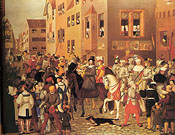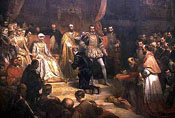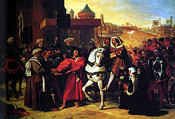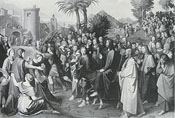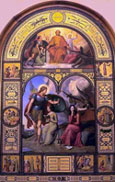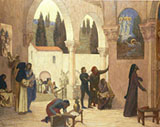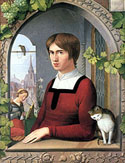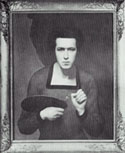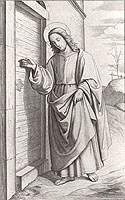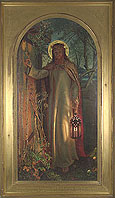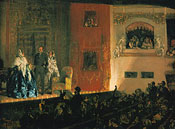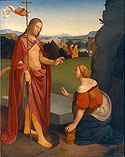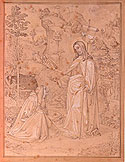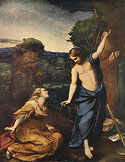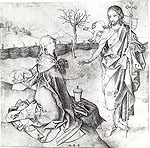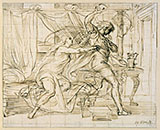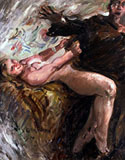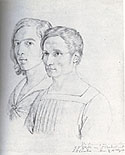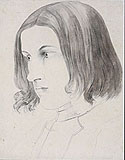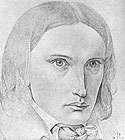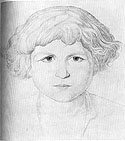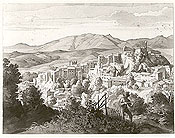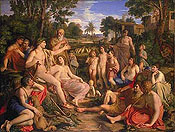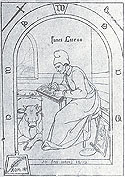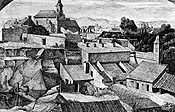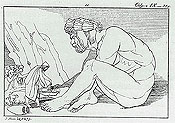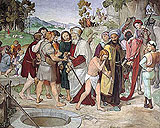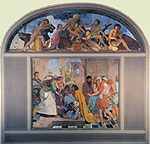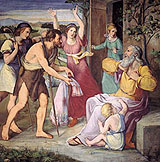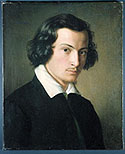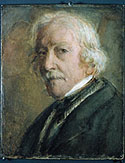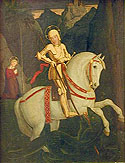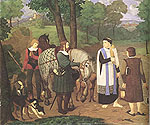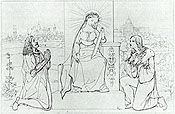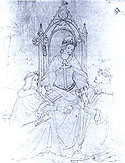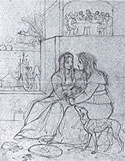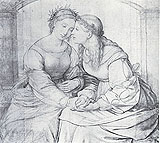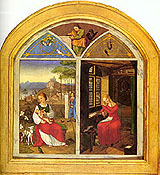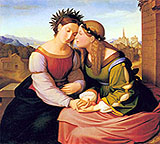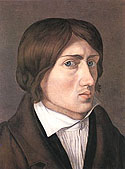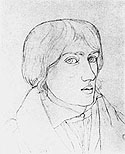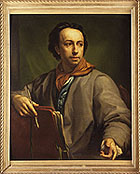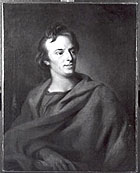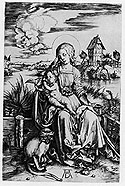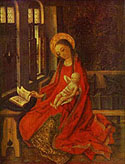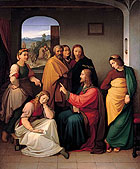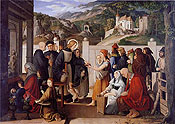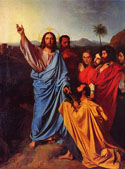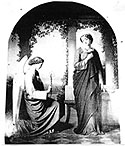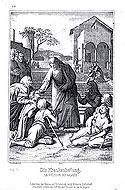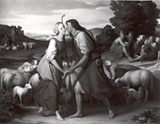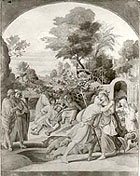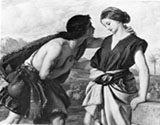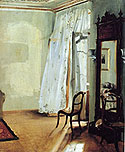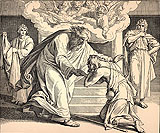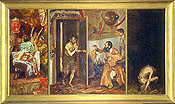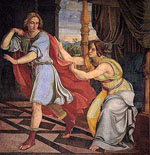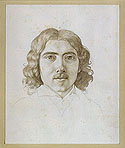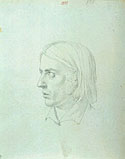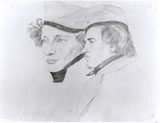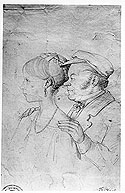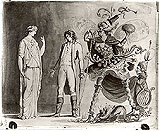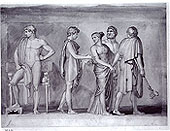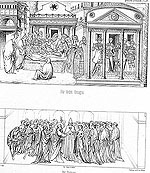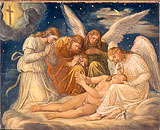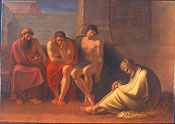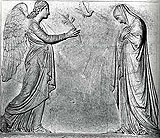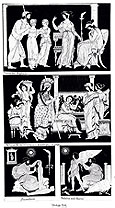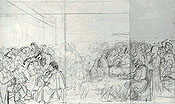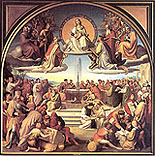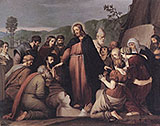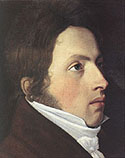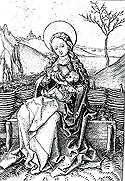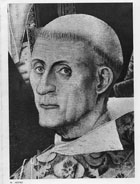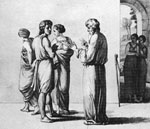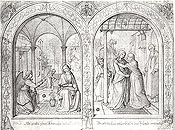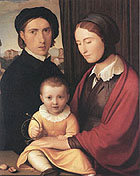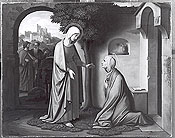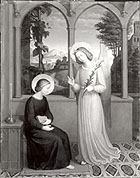The browser will either open the file, download it, or display a dialog.
|
Please note: selected figures are viewable by clicking on the figure numbers
|
|||||||||||||||||||||||||||||||||||||||||||||||||||||||||||||||||||||||||||||||||||||||||||||||||||||||||||||||||||||||||||||||||||||||||||||||||||||||||||||||||||||||||||||||||||||||||||||||||||||||||||||||||||||||||||||||||||||||||||||||||||||||||||||||||||||||||||||||||||||||||||||||||||||||||||||||
|
|
Unwilling Moderns: The Nazarene Painters of the Nineteenth Century |
||||||||||||||||||||||||||||||||||||||||||||||||||||||||||||||||||||||||||||||||||||||||||||||||||||||||||||||||||||||||||||||||||||||||||||||||||||||||||||||||||||||||||||||||||||||||||||||||||||||||||||||||||||||||||||||||||||||||||||||||||||||||||||||||||||||||||||||||||||||||||||||||||||||||||||||
|
Introduction |
||||||||||||||||||||||||||||||||||||||||||||||||||||||||||||||||||||||||||||||||||||||||||||||||||||||||||||||||||||||||||||||||||||||||||||||||||||||||||||||||||||||||||||||||||||||||||||||||||||||||||||||||||||||||||||||||||||||||||||||||||||||||||||||||||||||||||||||||||||||||||||||||||||||||||||||
|
Critical Reception of the Nazarenes After achieving celebrity in the early decades of the nineteenth century, the Nazarenes were already falling into disfavor in Germany by the early 1840s. Jacob Burckhardt, for one, judged them severely. Like Goethe before him, he disliked what he saw as their subordination of the visual to the conceptual, notably their placing of art in the service of religion, their cult of the Italian "Primitives" and of German and Netherlandish art of the fifteenth and sixteenth centuries, and their rejection of the direction in which painting had evolved since Raphael. The Nazarenes and their principal advocates, notably Friedrich Schlegel, had denounced the great Venetian colorists as marking the first step in a steady degradation of art in modern times, whereas Burckhardt deeply admired the Venetians' "Existenzbilder" (as he called them) for their sensuous celebration, even in paintings on ostensibly religious themes, of the beauty of worldly existence and for the contribution this represented, in his view, to the emancipation of both humanity and art.2 In the early 1840s, Burckhardt was still young and enthusiastic enough to have been put out, above all, by the Nazarenes' turning their backs on the dynamic processes of history. Their relative distance from the optimistic progressivism of their own tumultuous time was expressed artistically in the still symmetry of their compositions, the flatness of their paint application, and, more generally, their resolve to break with the artistic tradition of the baroque and the rococo and seek inspiration instead in the art of the high Renaissance (Michelangelo and the young Raphael on the one hand, Albrecht Dürer on the other) and in the Italian "Primitives"—although their actual debt to the latter was less than their frequently professed admiration for these artists' simplicity and authenticity might lead one to expect.3 In practical terms, their critical distance from the passions of their time was reflected in their decision, at the height of the political and social upheavals provoked by the French Revolution and the Napoleonic Wars, to leave Germany for Rome—"eternal" and universal despite (or because of) its loss of worldly power. Their support of German nationhood, though sincere, had a distinctly anachronistic flavor and was, in any case, embraced more fervently by some than by others.4 To Burckhardt, as to many in the Vormärz period—among them, Burckhardt's teacher and friend, the Berlin art historian Franz Kugler, and his future colleague at Zurich, Friedrich Theodor Vischer—the Nazarenes' work (fig. 1) compared unfavorably with the lively and patriotic history paintings of the Belgian romantic school, which created a sensation on being exhibited in Germany in 1842 (fig. 2).5 In particular, Burckhardt claimed, the Nazarenes' paintings, drawings, and frescoes on themes from classical and old German history and legend, notably those being produced for Ludwig I of Bavaria by Peter Cornelius and Julius Schnorr von Carolsfeld, were pedantic and bookish. |
||||||||||||||||||||||||||||||||||||||||||||||||||||||||||||||||||||||||||||||||||||||||||||||||||||||||||||||||||||||||||||||||||||||||||||||||||||||||||||||||||||||||||||||||||||||||||||||||||||||||||||||||||||||||||||||||||||||||||||||||||||||||||||||||||||||||||||||||||||||||||||||||||||||||||||||
| Even later detractors of the Nazarenes were nonplussed by the enthusiasm the Belgian romantics aroused in Germany in the 1840s. Richard Muther, for instance, a judicious and responsible art historian writing at the end of the nineteenth century, who favored modern French art, found little of value in the the works of Louis Gallait and Edmond Bièfve, whom Burckhardt had praised unreservedly, and deplored their influence on German painting. The "unsophisticated and unpretentious works" being turned out by native German artists at the time were at least as good as the work of the Belgians, he declared, and "in any event reflected intentions far superior to the overworked, pasty trivialities produced later under Belgian influence." The Belgians' vaunted painterly technique, he argued, in no way merited the praise heaped upon it.6 | |||||||||||||||||||||||||||||||||||||||||||||||||||||||||||||||||||||||||||||||||||||||||||||||||||||||||||||||||||||||||||||||||||||||||||||||||||||||||||||||||||||||||||||||||||||||||||||||||||||||||||||||||||||||||||||||||||||||||||||||||||||||||||||||||||||||||||||||||||||||||||||||||||||||||||||||
| It is not easy to form an independent opinion in the matter, since the Nazarenes are, to say the least, poorly represented in our great public collections. One must either travel to Germany to see them or content oneself with reproductions in books and exhibition catalogues. In fact, the virtual absence of paintings and drawings by the Nazarenes from public collections in the United States, Great Britain, and France, the dearth of any courses about them or, for that matter, about nineteenth-century German art in general, in our college and university art history programs, and the resulting public ignorance of this body of work constitute in themselves a curious problem of historiography as well as esthetics. Were Burckhardt and Kugler, Heinrich Heine and Vischer right, in the end, when they spurned the Nazarenes as insipid and uninspired? | |||||||||||||||||||||||||||||||||||||||||||||||||||||||||||||||||||||||||||||||||||||||||||||||||||||||||||||||||||||||||||||||||||||||||||||||||||||||||||||||||||||||||||||||||||||||||||||||||||||||||||||||||||||||||||||||||||||||||||||||||||||||||||||||||||||||||||||||||||||||||||||||||||||||||||||||
| The question is the more puzzling as, in their time, these now almost forgotten painters enjoyed a favorable European reputation.7 From about 1830 on, they were much admired in France. Ingres is alleged to have frequented them during his first stay in Rome (1806–24). He certainly shared their keen interest in the Italian "Primitives," and yet, like them, was most influenced by Raphael. Ingres's Jesus Giving the Keys to St. Peter, painted in Rome some time between 1815 and 1820, draws on a cartoon by Raphael on the same theme (now in the Victoria and Albert Museum, London), but also shows strong affinities with works by the Nazarenes (fig. 3). His Entry of the Dauphin, the Future Charles V, into Paris is said to have been influenced by Friedrich Overbeck's Entry of Christ into Jerusalem, which he almost certainly saw in Rome (figs. 4, 5). But it was among the students and followers of Ingres—himself accused by some contemporary critics of being regressive or "gothique"—and especially among the painters of the Ecole de Lyon, that the impact of the Nazarenes was particularly strong. And through the work of their leader, Paul Chenavard, this impact reached all the way to Puvis de Chavannes and his followers at the end of the nineteenth century (figs. 6, 8; fig. 7).8 One student of Ingres' from Lyons, the gifted but now forgotten Louis Janmot, acknowledged this affinity with the Nazarenes when he adopted the characteristic Nazarene garb, as represented in Overbeck's portraits of Pforr and Cornelius, for his own self-portrait (figs. 9, 10). | |||||||||||||||||||||||||||||||||||||||||||||||||||||||||||||||||||||||||||||||||||||||||||||||||||||||||||||||||||||||||||||||||||||||||||||||||||||||||||||||||||||||||||||||||||||||||||||||||||||||||||||||||||||||||||||||||||||||||||||||||||||||||||||||||||||||||||||||||||||||||||||||||||||||||||||||
| By the mid-1830s, a conscious effort was being made in France to revive the Christian inspiration of art. After a slow start, Alexis-François Rio's De la Poésie chrétienne (1836), which underscored the Christian roots of art down to the late Renaissance, began to wield considerable influence. 9 It was around this time that in the liberal Catholic circles around Hugues-Félicité de Lamennais and Henri-Dominique Lacordaire the Nazarenes were adopted as models of the modern Christian artist. As early as 1832 Overbeck had been hailed as "le Pérugin ressuscité" by Lacordaire's friend, the politician and publicist Charles-René Forbes, comte de Montalembert, who had visited the artist's studio in Rome, 10 and, in an open letter to Victor Hugo the following year, Montalembert sang the praises of the "new German school…of painting, which, under the dual direction of Overbeck and Cornelius, shines every day more brightly." Thanks to these artists, he declared, Germany was set to become the home of a new renaissance of art—"la patrie de l'art régénéré, la seconde Italie de l'Europe moderne." 11 Steel engravings and lithographs of works by Overbeck on religious themes continued in fact to circulate widely in France until quite late in the century (fig. 11).12 | |||||||||||||||||||||||||||||||||||||||||||||||||||||||||||||||||||||||||||||||||||||||||||||||||||||||||||||||||||||||||||||||||||||||||||||||||||||||||||||||||||||||||||||||||||||||||||||||||||||||||||||||||||||||||||||||||||||||||||||||||||||||||||||||||||||||||||||||||||||||||||||||||||||||||||||||
| The popularity of the Nazarene artists was not confined, however, to Christian revivalist milieux, though it was probably strongest there. Heine tells of running into Victor Cousin in 1840 gazing enraptured at some Overbeck prints in a Paris gallery window. 13 One of Ingres's students, deploring the hostile reception of his master's work by the salon critics, claimed in 1846 that Ingres was the only artist in France "qui puisse tenir tête aux Overbeck et aux Cornelius." Such was the prestige of the Nazarenes that Baudelaire felt it necessary to attack what he called "l'école néo-chrétienne d'Overbeck" in the name of "l'art pur."14 | |||||||||||||||||||||||||||||||||||||||||||||||||||||||||||||||||||||||||||||||||||||||||||||||||||||||||||||||||||||||||||||||||||||||||||||||||||||||||||||||||||||||||||||||||||||||||||||||||||||||||||||||||||||||||||||||||||||||||||||||||||||||||||||||||||||||||||||||||||||||||||||||||||||||||||||||
| Across the Channel, in the land of Constable and Turner, but also of Flaxman, Blake, and Samuel Palmer, the Art Journal in 1839 declared the Germans "assuredly the greatest artists of Europe." There was hardly a number of the Art Journal, Quentin Bell noted in his lectures on Victorian art in the mid-1960s, that did not carry some account of the life and works of the Nazarenes. Friedrich Overbeck, in particular, their spiritual leader over six decades, was described in it as "a truly great man, whose works have elevated his country."15 Pugin's pronouncement in his Contrasts (1841) that Overbeck was "the prince of painters" doubtless reflected shared religious convictions and a shared view of the function of art.16 However, the admiration of Sir Thomas Lawrence, the portrait painter, then at the peak of his European fame, is unlikely to have been motivated by any but artistic considerations.17 At any rate, it is easy to document the influence of the Nazarenes on such nineteenth-century English artists as William Dyce and Charles Eastlake, the first director of the National Gallery in London and a president of the Royal Academy (fig. 12, fig. 13, fig. 14), as well as on various members of the future Pre-Raphaelite Brotherhood, notably Holman Hunt and Ford Madox Brown (figs. 15, 16).18 Dyce, Eastlake, and Hunt all sought out the Nazarenes in Rome and were personally acquainted with several of them; Brown went to Munich in 1840 hoping to study with Peter Cornelius.19 As the artist chiefly responsible, along with the architect Leo von Klenze, for executing the grandiose artistic projects by which Ludwig I of Bavaria hoped to transform his undistinguished capital into a new Athens and at the same time create a sense of Bavarian and German nationality, Cornelius was consulted by the British Parliamentary select committee charged with making recommendations for the decoration of Charles Barry's newly rebuilt Houses of Parliament and may even have been sounded out about undertaking the work himself.20 In Théophile Gautier's words, Cornelius "enjoyed a celebrity such as few artists enjoy in their lifetime," being admired, as Gautier put it rather caustically in 1855, "as if he were already dead."21 When Ruskin's father offered the manuscript of the first volume of Modern Painters to the prominent London publisher John Murray in the early 1840s, the latter is said to have turned it down with the remark that he might have been more interested if Ruskin had offered him a manuscript on the Nazarenes.22 The painter Adolf Naumann in George Eliot's Middlemarch (Book II, chapter 22), from whom Will Ladislaw has been taking lessons—one of the "long-haired German artists at Rome"—is generally taken to be modeled on Overbeck. Like many travelers to Italy, Eliot, in 1860, had visited Overbeck's studio in Rome.23 Speaking before an Oxford audience in 1965, Quentin Bell wondered, understandably enough, "Who were these painters and why did they attract so much attention at a time when Ingres and Delacroix, Géricault, Corot, and Daumier were so little regarded by Englishmen?"24 | |||||||||||||||||||||||||||||||||||||||||||||||||||||||||||||||||||||||||||||||||||||||||||||||||||||||||||||||||||||||||||||||||||||||||||||||||||||||||||||||||||||||||||||||||||||||||||||||||||||||||||||||||||||||||||||||||||||||||||||||||||||||||||||||||||||||||||||||||||||||||||||||||||||||||||||||
| Unlike their French, British, and American counterparts, German art historians have naturally always had something to say about the Nazarenes, though in the hundred years from the mid-nineteenth until the mid-twentieth century, what they said was usually negative. Often their judgments appear to have resulted from ideological preferences rather than close attention to the paintings. Even the National Socialist art historian Kurt Karl Eberlein, who might have been expected to promote a major national school of painters, preferred the bolder and more "virile" North German romantics (especially Caspar David Friedrich) to the "softer," Italianate Nazarenes.25 The Nazarenes' use of traditional Christian topoi from the Old and New Testaments (explicitly defended by Friedrich Schlegel, who in his later years denounced attempts to invent new myths as arbitrary and subjective26 ) and their return, formally, to Fra Angelico and Perugino, but above all, the young Raphael and Michelangelo—was contrasted with the bold and original use of Christian and "old German" symbols by the Northern Protestant artists to create a new romantic imagery and mythology and with the vigor of the Renaissance artists themselves. In general, the Nazarenes came to be seen as lacking vitality and energy—"devoid of warmth and life," as a French critic repeated quite recently27 —qualities highly prized in all European countries in an age of rapid social change and industrialization, and not least in the Germany of the Gründerzeit, by liberals and conservatives alike (see Appendix). To many, the Nazarenes did not have the courage to be truly modern, truly of their time. Caspar David Friedrich criticized them on this score as early as 1830. "The works of *** remind me of playing cards," he wrote in his journal. "Shuffled now this way, now that, the cards always remain the same. And so I recall having seen all these figures many times before; even the backgrounds are familiar to me from old pictures and engravings. One picture smacks of Raphael, another of Michelangelo and the predecessors of both. Would it not be better if they all carried on their brow the stamp of their creator? But perhaps he has no stamp of his own?"28 | |||||||||||||||||||||||||||||||||||||||||||||||||||||||||||||||||||||||||||||||||||||||||||||||||||||||||||||||||||||||||||||||||||||||||||||||||||||||||||||||||||||||||||||||||||||||||||||||||||||||||||||||||||||||||||||||||||||||||||||||||||||||||||||||||||||||||||||||||||||||||||||||||||||||||||||||
| Likewise it seemed to Heine in 1829 that Peter Cornelius was like a ghost from the age of Raphael who had risen from the dead to create a few more works—"ein toter Schöpfer" (a dead creator), whose pictures "look out at us with eyes from the fifteenth century. The draperies are ghostly, as if rustling past us at midnight; the bodies are magically powerful, drawn with dream-like accuracy; except that they are bloodless, colorless, devoid of the pulsing of life." According to Heine, it was as though Cornelius's works "did not have long to live and had all been born an hour before their death."29 Visiting Overbeck's studio in Rome in 1854, the historian Ferdinand Gregorovius found everything muted and lifeless, "motionless and noiseless…human beings who have drained the life out of themselves, art that has drained the life out of itself, speech devoid of words, images devoid of color."30 Still in the same vein, at the end of the nineteenth century, Richard Muther, while acknowledging "a certain authenticity and sincerity of sentiment" in their work, faulted the Nazarenes for having "deprived their figures of blood and being, in order to lend them only the abstract beauty of line."31 Finally, in the early years of the twentieth century, Burckhardt's student Heinrich Wölfflin distinguished between "a primitivism of the beginning" and "a primitivism of the end," marked by "the childishness of old age" and "the simplicity that comes from exhaustion." The famous frescoes of the Casa Bartholdy in Rome, usually considered a major achievement of the young Nazarenes, had none of the freshness of Spring, he declared, but were rather faded and lifeless, like sparkling water gone flat.32 | |||||||||||||||||||||||||||||||||||||||||||||||||||||||||||||||||||||||||||||||||||||||||||||||||||||||||||||||||||||||||||||||||||||||||||||||||||||||||||||||||||||||||||||||||||||||||||||||||||||||||||||||||||||||||||||||||||||||||||||||||||||||||||||||||||||||||||||||||||||||||||||||||||||||||||||||
| The late nineteenth century in particular was the heyday of "Renaissancismus," and the Nazarenes had rejected precisely those aspects of the Renaissance that the Age of Nietzsche most admired. Liberal art historians like Muther, Cornelius Gurlitt, Julius Meier-Graefe, and Karl Scheffler all subscribed—as many art historians still do, whether consciously or not33 —to a modernist narrative that began with Vasari, was consecrated by the historical arrangement of the collections in the new art museums founded at the end of the eighteenth century, such as the Louvre in Paris or the Belvedere in Vienna, and finally acquired philosophical authority, thanks to Hegel, in the early nineteenth century.34 According to this narrative, the development of painting since Giotto was inexorably in the direction of ever greater psychological or visual realism and "painterliness," that is, emphasis on the qualities—such as color, movement, light and atmospheric effects, paint texture, and so forth—that distinguish painting from sculpture and drawing.35 In this "Entwicklungsgeschichte" of art, those artists who contributed to the development of "modernity" and the fulfillment of the telos of painting received high marks, those who were perceived as having obstructed or opposed it (not only the Nazarenes, but radically neoclassical artists like Asmus Jacob Carstens) got low marks. Even Jacques-Louis David came in for a good deal of criticism. His ideas were all wrong and his influence bad, it was said, and he was saved as an artist despite himself, as it were, by his innate painterly instincts, his involvement in the momentous events of his time, and the strength of the painterly tradition in France.36 | |||||||||||||||||||||||||||||||||||||||||||||||||||||||||||||||||||||||||||||||||||||||||||||||||||||||||||||||||||||||||||||||||||||||||||||||||||||||||||||||||||||||||||||||||||||||||||||||||||||||||||||||||||||||||||||||||||||||||||||||||||||||||||||||||||||||||||||||||||||||||||||||||||||||||||||||
| Since the 1970s, such progressivist "Whig" histories have been challenged, in almost all areas of the humanities.37 Correspondingly, English and French art histories have begun to recognize the existence of the Nazarenes and a small number have been remarkably sympathetic.38 Monographic studies have also begun to make an appearance. The groundbreaking monograph of Keith Andrews has become something of a classic in German art-historical scholarship. Also since the 1970s, there have been exhibitions of German romantic or nineteenth-century art in New Haven, Cleveland, and Chicago (1970–71), Paris (Orangerie des Tuileries, 1976–77), New York (Metropolitan Museum, 1981; Pierpoint Morgan Library, 1988), and most recently London (National Gallery, 2001) and Washington, D.C. (National Gallery, 2001).39 There have even been some recent acquisitions of Nazarene paintings by public galleries in the United Kingdom and the United States.40 | |||||||||||||||||||||||||||||||||||||||||||||||||||||||||||||||||||||||||||||||||||||||||||||||||||||||||||||||||||||||||||||||||||||||||||||||||||||||||||||||||||||||||||||||||||||||||||||||||||||||||||||||||||||||||||||||||||||||||||||||||||||||||||||||||||||||||||||||||||||||||||||||||||||||||||||||
|
Of course, it is not only the Nazarenes, it is German art of the nineteenth century as a whole that was sidelined by the enormous success of impressionism and the canonical Paris-centered history of modern art that grew up around it—not only in France, Great Britain, and America, but in Germany itself, as nationalist art critics complained and modern scholars acknowledge.41 In the halting process of rediscovery and rehabilitation, however, it has been chiefly those nineteenth-century German artists who "speak" in some degree to our modern sensibility that have achieved modest recognition: Friedrich, startlingly but persuasively compared by Robert Rosenblum to Rothko,42 or Menzel in whose work the critics of the New York Times and the Washington Post recently perceived and inevitably admired an anticipation of impressionism (fig. 17, fig. 18).43 In fact, that was already the reading of Menzel proposed by Meier-Graefe on the occasion of the great national exhibition of "German Art 1775–1875" in Berlin in 1906,44 as well as by some nationalist art historians, who apparently decided that instead of attacking impressionism as un-German, they would serve their ends better by demonstrating that it was actually a German "discovery" that the French had stolen, elaborated, and presented as their own!45 That perverse variant of the history of modern painting accorded well with the standard nationalist view of the Germans as free, inventive, individual geniuses, unspoiled creators of Kultur, and of the French, in contrast, as disciplined producers of Zivilisation, with a particular talent for institutionalizing and disseminating the insights of those more inspired than they.46 All in all, one should not exaggerate the impact of the recent exhibitions or their success in bringing German art, let alone the art of the Nazarenes, into the general public perception of the history of art. There were no lines outside the National Gallery in Washington, D.C. for the Nineteenth-Century German Art exhibition when I visited it at the end of June 2001, and I have not come across any new insights on the part of the newspaper reviewers (whose line, unsurprisingly, was to look for signs of "modernity"). Beyond Germany and Scandinavia, the average gallery-goer still knows very little, if anything at all, of Asmus Jacob Carstens, Otto Runge, Carl Blechen, Hans von Marées, Wilhelm Leibl, Max Slevogt or even Anselm Feuerbach and Lovis Corinth. The Swiss Arnold Böcklin was long the best-known "German" artist of the nineteenth century, largely on account of one work, the celebrated "Isle of the Dead," which achieved popularity through kitschy reproductions. As for the Nazarenes—Friedrich Overbeck, Franz Pforr, Julius Schnorr von Carolsfeld, Friedrich and Ferdinand Olivier, Peter Cornelius, Philipp Veit (the step-son of Friedrich Schlegel), to mention only a few—they have still not come back into favor to this day. What they produced, according to the New York Times reviewer of the recent show in Washington. D.C., was "dreadful, fancy calendar art" that might at best have a certain "kooky glamor."47 | ||||||||||||||||||||||||||||||||||||||||||||||||||||||||||||||||||||||||||||||||||||||||||||||||||||||||||||||||||||||||||||||||||||||||||||||||||||||||||||||||||||||||||||||||||||||||||||||||||||||||||||||||||||||||||||||||||||||||||||||||||||||||||||||||||||||||||||||||||||||||||||||||||||||||||||||
| Even an experienced and reputed art historian could hardly expect to initiate a significant revival of interest or a review of such judgments. Tellingly, Andrews' gracefully written and judicious monograph has long been out of print. Our experience as viewers of art and the way our sensibility has been shaped almost guarantee a tepid response to the Nazarenes' conscientious, beautifully balanced, but undramatic compositions, in which movement, physical and psychological, often seems either held in suspension or highly conventionalized.48 With their use of flat local colors and their eschewing of all dramatic light and color effects, the Nazarenes seem to want to deny the materiality of the painting and to direct the viewer's attention instead to more abstract and "spiritual" qualities like line, composition, color harmonies, and, ultimately, moral and religious meaning. This is vividly illustrated by Overbeck's and Johann Anton Ramboux's versions of the Noli me Tangere theme, when compared with those by two of the post-Raphaelite artists whose rich painterly manner the Nazarenes consciously rejected—Titian and Correggio (figs. 19–21).49 Ramboux in particular appears to have modeled his work on the early German master Martin Schongauer (fig. 22). To Franz Pforr, the painter's brushstrokes were "a necessary evil, no more than a means to an end," and he considered it "nonsense to praise an artist's audacity in this area or find something to brag about in it."50 Peter Cornelius, a champion of the flat colors and forms of fresco, declared that "the brush has become the ruin of [the painter's] art. It has led from nature to mannerism."51 | |||||||||||||||||||||||||||||||||||||||||||||||||||||||||||||||||||||||||||||||||||||||||||||||||||||||||||||||||||||||||||||||||||||||||||||||||||||||||||||||||||||||||||||||||||||||||||||||||||||||||||||||||||||||||||||||||||||||||||||||||||||||||||||||||||||||||||||||||||||||||||||||||||||||||||||||
|
In contrast, by the 1840s and 1850s, there was already a considerable emphasis, notably with Menzel, on materiality—both of the texture of the work itself and of what is represented in it—and this tendency continued to gain strength over the course of the century. It is a far cry from the Nazarenes to the stimulating and exciting work of Lovis Corinth, for example, with its intense psychological realism and bold, nervous brushstrokes. In a recent study of the role of Rembrandt as a model for modern German painters, the powerful renditions of biblical themes by Corinth and his contemporary Max Slevogt in the early twentieth century—such as the Return of the Prodigal Son, the Capture of Samson, or the Seduction of Joseph by Potiphar's Wife—are seen as close in spirit and manner to Rembrandt and are contrasted favorably with the formally elegant, more conventional versions of the same themes for a popular Bible in Pictures by the Nazarene artist Julius Schnorr von Carolsfeld.52 Where Schnorr, using conventional figures, gestures, and composition, directs the viewer's attention to the spiritual "meaning" of the scenes, the focus of Corinth and Slevogt is on the reality of human experience. The father in Schnorr's Return of the Prodigal Son, for instance (fig. 23), is clearly God the Father, not a "real" human father, as in Slevogt's work (fig. 24). Similarly, Schnorr's Joseph conforms completely to the Bible narrative; there is no sign that his virtue was ever shaken by the feminine charms of Potiphar's wife (fig. 25). Corinth, in contrast, tries to communicate the disturbing tumultuousness of a seduction scene (fig. 26). Like Philipp Veit, in his fresco on the same subject at the Casa Bartholdy (fig. 27), Schnorr allows the viewer to look on the image from the safe distance, as it were, of its meaning. In contrast, Corinth and Slevogt clearly want to draw the viewer into the world of the picture. Schnorr's and Veit's images signify an attempted seduction but do not aim to represent it or recreate in the viewer feelings equivalent to the experience of it. In this important respect, the art of the Nazarenes may now appear prim and insipid to the modern viewer. |
|||||||||||||||||||||||||||||||||||||||||||||||||||||||||||||||||||||||||||||||||||||||||||||||||||||||||||||||||||||||||||||||||||||||||||||||||||||||||||||||||||||||||||||||||||||||||||||||||||||||||||||||||||||||||||||||||||||||||||||||||||||||||||||||||||||||||||||||||||||||||||||||||||||||||||||||
| In addition, it should not be overlooked that Nazarene art was not intended for exhibition in museums and galleries. It was part of the program of the founders of the movement, the original Lukasbrüder or Brothers of St. Luke, to combat the modern transformation of art into a commodity to be enjoyed and displayed by private individuals in their homes or put up for sale in galleries. Art for them was not a de luxe product of consummate artistic technique, it was not an investment or an object of exchange to be bought and sold and transferred at will from one owner and one location to another, nor was it simply a source of pleasure. Like some of the neoclassical artists and theorists of the time—notably Antoine-Chrysostome Quatremère de Quincy in France, who was bold enough to attack Napoleon's policy of pillaging the churches and palaces of Europe in order to build up the Louvre into a repository of world art53 —they believed art at its best had been and should once again become part of the fabric of a community's daily life and an expression of its highest values, inseparably linked to the public building—church, town hall, palace—or the private purpose, such as prayer or remembrance, for which it had been commissioned. Their belief that art is inseparable from the context for which it is designed led them to initiate a revival of fresco painting. Indeed, it was the frescoes they created for the residence of the Prussian consul in Rome, Jacob Salomon Bartholdy, and for the Casino Massimo, the Roman residence of an Italian nobleman, that put them on the map of the art world. In an often quoted letter to Joseph Görres in 1814, Cornelius speculated that through a revival of fresco painting it might be possible to restore the old (and in his view far healthier) relation between art and the people that had obtained in the Middle Ages, so that art, instead of adorning the private chambers of the well-to-do, would once again speak to the German people "from the walls of our high cathedrals, our peaceful chapels and solitary cloisters, from our town halls and warehouses and markets."54 The Nazarenes' work is thus not "at home" in the abstract space of a gallery or museum where it must compete for the viewer's attention with works in many different styles. | |||||||||||||||||||||||||||||||||||||||||||||||||||||||||||||||||||||||||||||||||||||||||||||||||||||||||||||||||||||||||||||||||||||||||||||||||||||||||||||||||||||||||||||||||||||||||||||||||||||||||||||||||||||||||||||||||||||||||||||||||||||||||||||||||||||||||||||||||||||||||||||||||||||||||||||||
| As they were not at first overwhelmed by public and ecclesiastical commissions, the Nazarenes also cultivated a quite different genre from fresco and history painting. Though they produced a relatively small number of commissioned portraits—in line with their view of the proper function of art—they made innumerable drawings (as well as occasional oil paintings) of and for each other, offering them to each other and to their friends as gifts. These small-scale, intimate, and unassuming works testify to a tension between the Nazarenes' goal of restoring art to the people, their desire to create a great public art, on the one hand, and, on the other, given the elusiveness of that goal, an inclination to reconceive the public world as an ideal community of friends and artists—a Malerrepublik, as the poet Friedrich Rückert put it—of which the Lukasbund or Brotherhood of St. Luke, the original nucleus of the Nazarene movement, was no doubt the model.55 What was common to both the "public" and the "private" art of the Nazarenes, however, was the demand for absolute authenticity of feeling in the artist and it may well be that this emphasis on inner feeling was better suited to their private than to their public art. In the view of some critics at least, their best work is to be found not in the ambitious, full-scale paintings of scenes from the Old and New Testaments for which they are (and wanted to be) best known, but in innumerable smaller, finely contoured portraits, with minimum modeling, which they drew of and for each other, group portraits of two or more friends (fig. 28, fig. 29, fig. 30, fig. 31, fig. 32, fig. 33, fig. 34, fig. 35), and pen and pencil sketches of places they liked to frequent, such as Olevano, a little town in the Alban hills just beyond Palestrina, that seem almost cubist in their stripped down essentiality (fig. 36).56 Like the domestic memorials or Zimmerkenotaphe that were popular in Germany at the turn of the century, these small-scale works have nonetheless an important feature in common with the Nazarenes' larger, more obviously public works: they were not made to be exhibited or offered for sale at art salons and galleries.57 | |||||||||||||||||||||||||||||||||||||||||||||||||||||||||||||||||||||||||||||||||||||||||||||||||||||||||||||||||||||||||||||||||||||||||||||||||||||||||||||||||||||||||||||||||||||||||||||||||||||||||||||||||||||||||||||||||||||||||||||||||||||||||||||||||||||||||||||||||||||||||||||||||||||||||||||||
|
|
|||||||||||||||||||||||||||||||||||||||||||||||||||||||||||||||||||||||||||||||||||||||||||||||||||||||||||||||||||||||||||||||||||||||||||||||||||||||||||||||||||||||||||||||||||||||||||||||||||||||||||||||||||||||||||||||||||||||||||||||||||||||||||||||||||||||||||||||||||||||||||||||||||||||||||||||
| Their opposition to the appropriation of the artist's work as the private property of wealthy or powerful individuals also led the Nazarenes seemingly in the opposite direction from that just described, that is, toward the role of illustrators, purveyors of easily reproduced, relatively inexpensive Bilderbibel (Bibles in pictures) and religious images that could be reproduced cheaply for distribution among the people. Modern art lovers, ill-disposed to the use of art in the service of anything, be it a religion or a political cause, suspicious of popular art (except in the sophisticated, avant-garde form of "pop art"), and more likely than not to be put off by conservative Saint-Sulpice-style Catholicism, tend to view these works as kitsch, and there seems not much doubt that the very success of the Nazarenes in this area aggravated the disfavor into which they fell around the middle of the nineteenth century.58 A similar fate befell the many nineteenth-century French artists who devoted their talents to religious painting. As they are hard to accommodate within the canonical evolutionary history of art, they are simply ignored and the question of the artistic quality of their work is not even raised.59 Thus one of the issues the Nazarenes force us to think about is how we are predisposed—by our own culture in general, by the conditions in which we get to view artworks, and by our artistic experience and education—to respond more vigorously and intensely to certain styles than to others. As Charles Eastlake put it in an article in the London Magazine in 1820: "For simplicity, holiness and purity, qualities which are the characteristics of scriptural scenes, no style was better adapted than that of the Germans. This style has little or nothing to do with reality. It diffuses a sort of calm and sacred dream. To censure it for being destitute of colour and light and shade would be ridiculous; such merits would, in fact, destroy its character."60 | |||||||||||||||||||||||||||||||||||||||||||||||||||||||||||||||||||||||||||||||||||||||||||||||||||||||||||||||||||||||||||||||||||||||||||||||||||||||||||||||||||||||||||||||||||||||||||||||||||||||||||||||||||||||||||||||||||||||||||||||||||||||||||||||||||||||||||||||||||||||||||||||||||||||||||||||
| I hope to show that the Nazarenes were intensely serious artists, who made highly self-conscious choices and thought a great deal about what they were doing and about what they wanted the place of art to be in the modern world. According to our still essentially developmental version of the history of European art, the path they chose proved be a cul-de-sac, at best a by-road in art as it evolved throughout Europe in an age that was more and more avid for new experiences and new sensations and less and less willing, until the revival of symbolism at the end of the century, to look for the "spiritual meaning" traditionally held to lie "behind" appearances. The essential question raised by the Nazarenes is this: Do they, as artists, deserve the fate they have suffered as a result of their refusal to swim with what, in retrospect, has been perceived as the tide? Were they simply bad or mediocre artists, as is quite often suggested? If not, what qualities will a sympathetic viewing allow us to discover and still respect, admire, perhaps even respond to; and what qualities, if any, could conceivably prove significant to living artists, if not now, then at some other time? In grouping them together in a single category as "the Nazarenes," I shall inevitably pay insufficient attention to the differences among them: Overbeck and Pforr, for instance, though they were joined in an intense friendship and shared common purposes and goals, differ significantly in their artistic production,61 as do Overbeck and Cornelius, who were sometimes seen by contemporaries as the Raphael and the Michelangelo of the movement. In general, each of the Nazarene artists—pace Caspar David Friedrich—has distinctive stylistic features, no less than Monet and Sisley, for instance, among the Impressionists. | |||||||||||||||||||||||||||||||||||||||||||||||||||||||||||||||||||||||||||||||||||||||||||||||||||||||||||||||||||||||||||||||||||||||||||||||||||||||||||||||||||||||||||||||||||||||||||||||||||||||||||||||||||||||||||||||||||||||||||||||||||||||||||||||||||||||||||||||||||||||||||||||||||||||||||||||
| The Cultural Context of Nazarene Art In the brief factual account that follows, I shall focus on the cultural (artistic, ideological, social) context in which the Nazarenes developed as young artists, the challenges to which their work was a response, and the goals they hoped to achieve. For a time at least, despite their Christian orientation and their association with the conservative Restoration, the Nazarenes were part of a broader anti-traditional movement in art in the Age of Revolution—a movement that aimed to break radically with the continuity of art since the Renaissance and that was in fact launched by neoclassical artists such as Asmus Jacob Carstens, John Flaxman, and Antonio Canova, not to mention Jacques-Louis David, the most famous.62 In his History of the French Revolution, Jules Michelet makes much of what he calls the "religion" of the Revolution, emphasizing that it required something like an act of conversion on the part of its adherents. In the Nazarenes' case, revolutionary impulse and impulse toward conversion are similarly connected as a desire to transform the individual and to transform culture itself, to begin anew—in their case, as in that of the neoclassical artists, by reconnecting with an earlier past. The role conversion played in the lives of many of them, including Friedrich Overbeck, Wilhelm Schadow, Franz and Johannes Riepenhausen, Johannes and Philipp Veit (the two sons of Dorothea Schlegel), and Friedrich and Dorothea Schlegel themselves, all of whom converted to Catholicism, is well documented. Rebirth, resurrection, being reawakened from deathly sleep are likewise recurrent themes of their art (for example, the story of Lazarus or the daughter of Jairus).63 In contrast, their slightly older contemporary Benjamin Constant, writing from the point of view of liberal progressivism, denounced the futility of attempts—such as were made by the Jacobins during the Revolution or proposed by Novalis in his Christenheit oder Europa—to reverse the flow of history and resurrect a political order that may have been appropriate to another, remote time but, according to Constant, was anachronistic or "unzeitgemäss" (to borrow the term made famous by Nietzsche) in the thoroughly altered conditions of modern Europe. |
|||||||||||||||||||||||||||||||||||||||||||||||||||||||||||||||||||||||||||||||||||||||||||||||||||||||||||||||||||||||||||||||||||||||||||||||||||||||||||||||||||||||||||||||||||||||||||||||||||||||||||||||||||||||||||||||||||||||||||||||||||||||||||||||||||||||||||||||||||||||||||||||||||||||||||||||
| Though the order they wished to revive in place of the ancien régime was certainly different from that of the Jacobins and their emphasis was, in any case, far more on inner conversion than on institutional change—in that regard they resembled many other, often mutually competing groups in Germany, including neohumanists and Pietists64 —the Nazarenes were similarly faulted for being unmodern. A genuine work of art, according to Caspar David Friedrich, must carry "das Gepräge seiner Zeit" ("the imprint of its time"). In Friedrich's view, this ruled out the use of traditional religious images and forms from an earlier time, since it was the character of the new age to be "am Rande aller Religionen" ("at the outer boundary of all religions"). The days of the glory of the Temple and its servants had passed, Friedrich insisted, and from the fragments of that shattered whole, a new time and a new demand for clarity and truth had emerged.65 | |||||||||||||||||||||||||||||||||||||||||||||||||||||||||||||||||||||||||||||||||||||||||||||||||||||||||||||||||||||||||||||||||||||||||||||||||||||||||||||||||||||||||||||||||||||||||||||||||||||||||||||||||||||||||||||||||||||||||||||||||||||||||||||||||||||||||||||||||||||||||||||||||||||||||||||||
| The archaism of the Nazarenes was nevertheless itself a response to the very historical fissure Friedrich was evoking, for the deliberate choice of a style that is no longer a living tradition can only be an acutely modern gesture, in that it asserts the artist's refusal to be determined by history and tradition, as well as his freedom (whether desired, struggled for, and won; or imposed and suffered) to select and define the style he wants. That is the real root of the much-decried intellectualism of the Nazarenes. If their art was Gedankenmalerei ("painting of ideas"), that was in part because the artistic tradition as it had evolved in the seventeenth and eighteenth centuries was no longer accepted by them unthinkingly as natural, an inheritance to be assumed and enhanced. When Overbeck claimed that "it is no less impossible to conceive of a fully developed artist who is unphilosophical than it is to conceive of one who lacks poetic imagination,"66 what he meant was not simply that the artist aspires to convey religious or moral or political ideas but that, at a time when so much that had once appeared to be "natural" was being called into question, an authentic modern artist could not afford not to reflect on the form and function of his work. In the words of a modern Italian scholar: "The Nazarenes are the first manifestation of a historical disorientation, in which reference to a style from the past, albeit in the illusory conviction of fidelity to it, exposes, by its arbitrariness, a historical fissure, a radical a-historicity."67 In this respect, the Nazarenes may well have been far more modern than the Belgian school of history painters, whose enormous success in Germany in the early 1840s precipitated the Nazarene's fall into disfavor. Indeed, insofar as "modern" signifies a certain relation to the past—its transcendence, but also its culmination—the historical situation of the Nazarenes might even be more usefully viewed as analogous to the post-modern. | |||||||||||||||||||||||||||||||||||||||||||||||||||||||||||||||||||||||||||||||||||||||||||||||||||||||||||||||||||||||||||||||||||||||||||||||||||||||||||||||||||||||||||||||||||||||||||||||||||||||||||||||||||||||||||||||||||||||||||||||||||||||||||||||||||||||||||||||||||||||||||||||||||||||||||||||
|
The Early Nazarenes and the Vienna Academy First, then, who were the Nazarenes? The nucleus of the movement was a group of six young men, students at the Vienna Academy of Art in the years 1805–10. Dissatisfied with the teaching they were receiving there, they dreamed of a reform of art based on a return to the older models—notably Dürer and the early Raphael—lauded by Wilhelm Wackenroder in his enormously influential Herzensergiessungen eines kunstliebenden Klosterbruders (1797). They also envisioned a new relation between art and the community, in which the artist would express the highest values of his people, serving it as a guide and educator, instead of prostituting his God-given talents, as the young rebels saw it, by pandering to the pleasures and vanities of wealthy individuals or a cosmopolitan court aristocracy. It is worth recalling that similar speculations about the role of the artist and the place of art in society—admittedly with a more Enlightenment-humanitarian than romantic-popular emphasis—had characterized the neohumanist generation preceding the Nazarenes, achieving memorable literary expression in Friedrich Schiller's Letters on the Aesthetic Education of Mankind (1795). Schiller's vision of the educative and harmonizing function of art had, in turn, been given pictorial representation in one of the most popular paintings of the age, Apollo among the Shepherds (1806–08) (fig. 37), by the poet's fellow Württemberger, the neoclassical painter Gottlieb Schick, who was among the first artists to befriend the young Nazarenes on their arrival in Rome in 1810.68 |
||||||||||||||||||||||||||||||||||||||||||||||||||||||||||||||||||||||||||||||||||||||||||||||||||||||||||||||||||||||||||||||||||||||||||||||||||||||||||||||||||||||||||||||||||||||||||||||||||||||||||||||||||||||||||||||||||||||||||||||||||||||||||||||||||||||||||||||||||||||||||||||||||||||||||||||
|
The two founders of the Vienna student group were Johann Friedrich Overbeck, son of a senator from the old Hanseatic free city of Lübeck and later its Bürgermeister, and Franz Pforr, a member of a family of painters, from the imperial free city of Frankfurt am Main. (His father had been a respected animal painter; his mother was the sister of Johann Heinrich Tischbein the Younger.) On the basis of their common view of art—as well as intimate conversations about the ideal female partner each envisaged—the two extremely moral and chaste young men formed an intense friendship of a kind not uncommon in Germany at the time. (One thinks of Wilhelm Wackenroder and Ludwig Tieck, Heinrich Füssli and Johann Kaspar Lavater, Johannes von Müller and Charles-Victor de Bonstetten, Ferdinand Olivier and Wilhelm von Gerlach or Julius Schnorr von Carolsfeld.69 ) In contravention of the rules of the academy, which required a long period of copying established works in a variety of genres before the student was permitted to undertake original work, the two youthful enthusiasts worked together privately at developing their own ideas for paintings, mostly Biblical scenes in Overbeck's case, scenes from history, legend, Shakespeare, and Goethe in Pforr's. In long, nocturnal discussions, they critiqued each other's work and exchanged ideas about art and modern life, as well as about more personal matters. Both stated explicitly that it was never their intention to proselytize among the students of the academy but only to extend the hand of friendship to any who might approach them of their own free will. This ideal of unregimented cooperation—in the sense that in the pursuit of common goals, each individual could retain his or her autonomy—would remain important to the Nazarenes and is expressed formally in their work. |
|||||||||||||||||||||||||||||||||||||||||||||||||||||||||||||||||||||||||||||||||||||||||||||||||||||||||||||||||||||||||||||||||||||||||||||||||||||||||||||||||||||||||||||||||||||||||||||||||||||||||||||||||||||||||||||||||||||||||||||||||||||||||||||||||||||||||||||||||||||||||||||||||||||||||||||||
| Four others at the Vienna Academy soon associated themselves with Pforr and Overbeck. They were: Joseph Wintergerst, a Swabian; Joseph Sutter, an Austrian; Ludwig Vogel, the son of a master baker in Zurich; and his friend, Johann Konrad Hottinger, with whose family, citizens of Zurich settled in Vienna, Vogel had taken lodgings. The group thus represented a cross section of German youth from various cities and states. Sutter and Wintergerst, aged twenty-seven and twenty-five respectively, were the oldest. The other four were very young when all six first began to gather for regular drawing sessions and discussions in Overbeck's lodgings in the summer of 1808. Overbeck had just turned nineteen; Pforr, Vogel, and Hottinger were a year older. In 1809, on the first anniversary of their meetings, the six agreed to regularize their association by solemnly swearing an oath of brotherhood and forming a Bund, to which they gave the name of Luke, the patron saint of painting. They thereby affirmed an essential, at once conservative and revolutionary axiom of their program: namely, that art must serve only the highest of ends, which, in their case, meant religion, and not the vanity of courts or wealthy individuals. In forming an egalitarian, non-hierarchical society, whose members were bound together by the swearing of an oath rather than by the invisible bonds of tradition and history, they also executed a revolutionary gesture. For oath swearing, whether by medieval Swiss heroes or members of the French Revolutionary Assembly, whether in favor of a return to the old or of an advance toward the new, inevitably implied rejection of established ways.70 At the same time, by modeling their society on a medieval guild or even a monastic order, they affirmed a specific relation to history, viewing it not as a continuous evolution but as discontinuous, marked by breaks and repetitions. The simultaneously revolutionary and backward-looking character of their artistic principles was thus reflected in the institutional form of their new association. | |||||||||||||||||||||||||||||||||||||||||||||||||||||||||||||||||||||||||||||||||||||||||||||||||||||||||||||||||||||||||||||||||||||||||||||||||||||||||||||||||||||||||||||||||||||||||||||||||||||||||||||||||||||||||||||||||||||||||||||||||||||||||||||||||||||||||||||||||||||||||||||||||||||||||||||||
| A few months later, in October 1809, when Wintergerst had to move to Bavaria and thus became the group's first "apostle," Overbeck created a diploma for him as well as for the five other members of the Bund. It bore the signature, brief motto, and particular symbol of each one (an owl for Wintergerst, an eye for Sutter, a skull topped by a cross for Pforr, a palm branch for Overbeck, and so on), together with a stamp depicting St. Luke (to whom Overbeck gave the features associated with Dante) at work and inscribed with the initials of the six founding members in its border, which had the form of an arch. At the top of the arch stood the letter W, for Wahrheit, the fundamental principle of any art worthy of the name, according to the Brotherhood. Canvases by individual members that won the approval of the entire group were to be stamped on the back with this seal (fig. 38). | |||||||||||||||||||||||||||||||||||||||||||||||||||||||||||||||||||||||||||||||||||||||||||||||||||||||||||||||||||||||||||||||||||||||||||||||||||||||||||||||||||||||||||||||||||||||||||||||||||||||||||||||||||||||||||||||||||||||||||||||||||||||||||||||||||||||||||||||||||||||||||||||||||||||||||||||
| Meantime, the occupation of Vienna by the French in early 1809 led to the closing of the academy. When it reopened in February 1810, financial constraints and a shortage of wood for heating prevented the readmission of all foreign—that is, non-Austrian—students. This provided a good excuse for Overbeck and Pforr to realize a plan they had been mulling over for some time: namely, withdrawing from the academy, with its highly regulated instruction in current artistic practices, and pursuing their artistic vocation freely, according to their own lights in Rome, where, as they saw it, the fashions and customs of the day paled before the enduring truths of art and religion. Vogel and Hottinger joined them in the move to Rome; Sutter, as a native Austrian the only one of the group to be readmitted to the academy, did not have the funds to go along. | |||||||||||||||||||||||||||||||||||||||||||||||||||||||||||||||||||||||||||||||||||||||||||||||||||||||||||||||||||||||||||||||||||||||||||||||||||||||||||||||||||||||||||||||||||||||||||||||||||||||||||||||||||||||||||||||||||||||||||||||||||||||||||||||||||||||||||||||||||||||||||||||||||||||||||||||
| The departure of the Lukasbrüder for Rome has been referred to as the first Sezession in the history of German art.71 In fact, the leave-taking was carried out politely, courtesy visits being paid to most of the professors. But a year later in 1811, Sutter had a bitter run-in with his teachers, in which he accused them of having turned down a work he had submitted for a prize (he badly needed the money) not on the basis of the merits of the work but out of hostility to the artistic goals of the Brotherhood.72 | |||||||||||||||||||||||||||||||||||||||||||||||||||||||||||||||||||||||||||||||||||||||||||||||||||||||||||||||||||||||||||||||||||||||||||||||||||||||||||||||||||||||||||||||||||||||||||||||||||||||||||||||||||||||||||||||||||||||||||||||||||||||||||||||||||||||||||||||||||||||||||||||||||||||||||||||
| The goals of the academy and those of the Lukasbrüder were in fact radically opposed. The Vienna Academy, it should be noted, was one of the most highly regarded in Germany at the time. Its director, Heinrich Füger, enjoyed a considerable reputation and had been commissioned to paint a portrait of Admiral Nelson. Füger followed an eclectic line, inclining toward the classicizing manner of Anton Raphael Mengs or Gavin Hamilton in his history paintings, mostly on subjects from Greek and Roman antiquity, while favoring a highly painterly, still visibly rococo handling of color and light in his portraits. The method of instruction at the academy was traditional: a long period of training in drawing and copying from other artists was required before students could undertake independent original compositions. In Füger's words, the student "must first practice his hand and appropriate the techniques of several graphic styles before he can pass on to painting and the higher branches of the painter's art" and "these preliminary exercises may occupy him for several years."73 Two decades of political, social, and cultural upheaval had had their effect, however, and Overbeck and Pforr rejected Director Füger's academic ancien régime. | |||||||||||||||||||||||||||||||||||||||||||||||||||||||||||||||||||||||||||||||||||||||||||||||||||||||||||||||||||||||||||||||||||||||||||||||||||||||||||||||||||||||||||||||||||||||||||||||||||||||||||||||||||||||||||||||||||||||||||||||||||||||||||||||||||||||||||||||||||||||||||||||||||||||||||||||
| As early as 1805, when still a sixteen-year-old living at home in Lübeck, Overbeck already had misgivings about the instruction he was receiving from his art teacher at the time, Joseph Nikolaus Peroux. Though Peroux had great talent, the young Overbeck confided to the writer and critic August Kestner—a family friend who had introduced him to the Riepenhausen brothers' drawings of works by Giotto, Masaccio, and Perugino—he concentrated so much on brilliance of execution that he was incapable of imagining anything artistically serious. "His manner appears thoroughly false to me," Overbeck wrote, adding that he feared having to follow this "kleinliche Manier" ("trivializing manner") and becoming in turn enslaved to it.74 | |||||||||||||||||||||||||||||||||||||||||||||||||||||||||||||||||||||||||||||||||||||||||||||||||||||||||||||||||||||||||||||||||||||||||||||||||||||||||||||||||||||||||||||||||||||||||||||||||||||||||||||||||||||||||||||||||||||||||||||||||||||||||||||||||||||||||||||||||||||||||||||||||||||||||||||||
| It had been fifteen years since Kant had argued for the autonomy of art and, by implication, the artist.75 In 1796, the unconventional neoclassical artist, Asmus Jacob Carstens—to whom Overbeck's father, a poet as well as a Lübeck notable, had lent a helping hand at a difficult time in the artist's life in the 1780s—had proclaimed the freedom of the artist in a stinging letter to the director of the Berlin Academy: "I must inform your Excellency that I do not belong to the Berlin Academy but to humanity. It never occurred to me, nor did I ever promise, to debase myself into becoming the bondsman of an academy for the sake of a few years' financial support that would enable me to develop my talents."76 A few years before, in 1791, another neoclassical artist, Joseph Anton Koch, had fled the art academy of the famous Ducal Hohe Carlsschule in Stuttgart after the discovery of some caricatures in which he exposed the professors as cruel tyrants and lampooned the content of their instruction. One of the drawings depicts the artist, like Hercules at the Crossroads, having to choose between the extravagance of the rococo and the simplicity of the classical (fig. 39). Koch, a fiery champion of freedom and the French Revolution, later became a good friend and collaborator of the Nazarenes in Rome and Vienna. The young Overbeck, whose birth in 1789 coincided with the outbreak of the Revolution, was no less inspired by the idea of freedom than Carstens, Koch, or, for that matter, Caspar David Friedrich. "The most important thing for a painter," he wrote to Kestner, "is to have a free hand."77 | |||||||||||||||||||||||||||||||||||||||||||||||||||||||||||||||||||||||||||||||||||||||||||||||||||||||||||||||||||||||||||||||||||||||||||||||||||||||||||||||||||||||||||||||||||||||||||||||||||||||||||||||||||||||||||||||||||||||||||||||||||||||||||||||||||||||||||||||||||||||||||||||||||||||||||||||
| As a student at the Vienna Academy, Overbeck had not lost his taste for freedom. Here is how he justified to his father his and Pforr's breaking of the academy's rules by embarking on compositions of their own in oil as early as their second year: "Must it really be so harmful to test one's capabilities, even when one undertakes tasks that are beyond one's capabilities? And in the event that one stumbles and falls, so what? One picks oneself up again. One doesn't break one's neck; and at least one will have taken the measure of one's capabilities." The aim of his and Pforr's experiments with work of their own was "not to produce masterpieces, just to push ourselves to the limit and do the best we can." For one "learns more from working on a single picture of one's own, however much one has to suffer before achieving something acceptable, than from copying twenty pictures, even pictures by Raphael, Titian, Correggio, Van Dyck, et al." Besides, "by exercising one's own talent, one arrives at a fuller appreciation of the achievement of the great masters, and discovers ten times more in them than if one had spent all one's time slavishly copying them." Most important, the student who experiments with compositions of his own will develop his own individual talent. Speaking for himself, Overbeck insisted, even if he doesn't "learn to use paint like a Titian, or become as expert in chiaroscuro as a Correggio, the most important thing is that he become an Overbeck" and "that would be worth far more, by Heaven, than being able to call oneself a second Raphael or a second Correggio or such like." The example of Giulio Romano "who cannot be placed in the top rank of painters because he always more or less imitated the style of Raphael" demonstrated the inadequacy of imitation as a method of instruction. These words of Overbeck's are worth emphasizing in view of the later criticism from Caspar David Friedrich, Vischer, Heine, and others, that the Nazarenes had no character or style of their own but simply copied earlier masters like Raphael and Dürer. Overbeck conceded that sustained study and indeed copying of the masters developed both the student's taste and his skills. "One would need to be a fool not to exploit this advantage, which we artists of the present time enjoy with respect to our predecessors." Still, the true model, he told his father, is nature. "Just think how much time is lost learning the 'tricks of the trade,' to quote your own expression, since these are unique to each great master."78 | |||||||||||||||||||||||||||||||||||||||||||||||||||||||||||||||||||||||||||||||||||||||||||||||||||||||||||||||||||||||||||||||||||||||||||||||||||||||||||||||||||||||||||||||||||||||||||||||||||||||||||||||||||||||||||||||||||||||||||||||||||||||||||||||||||||||||||||||||||||||||||||||||||||||||||||||
| Above all, the eclecticism of the academies "is a complete misunderstanding of art. Anyone who expects a young artist to make every effort to learn to compose like Raphael, because Raphael was greatest of all in composition, to learn to paint like Titian, because Titian was the greatest master of paint, to learn to use light and shade like Correggio, because Correggio was unrivaled in the use of chiaroscuro, to appropriate Michelangelo's style, because of its grandeur and power, and furthermore, to combine all of those qualities in himself, shows that he understands nothing about art, since he has not understood that those qualities so contradict each other that it is not possible to think of them all together…Take a figure from Michelangelo, paint it in the manner of Titian, and you will no longer have a Buonarotti. The external contour would not work with the inner flesh tones that Titian would have to introduce if he were to paint like Titian."79 | |||||||||||||||||||||||||||||||||||||||||||||||||||||||||||||||||||||||||||||||||||||||||||||||||||||||||||||||||||||||||||||||||||||||||||||||||||||||||||||||||||||||||||||||||||||||||||||||||||||||||||||||||||||||||||||||||||||||||||||||||||||||||||||||||||||||||||||||||||||||||||||||||||||||||||||||
| Two months later, in another letter to his father, dated 27 April 1808, Overbeck generalized his critique of art academies: "The slavish kind of study required at our art academies leads to nothing of any value. If—as I believe is the case—there has not been a history painter since the time of Raphael who has found the right road, that is nobody's fault but that of our leading academies; they teach you to paint wonderful draperies, to draw figures correctly, to use perspective, they teach you the styles of architecture; and yet all this produces no great painters."80 The Lukasbund did not intend to repeat the errors of the ancien régime at the Vienna Academy. No single style was imposed, both Overbeck and Pforr insisted, no one was urged to imitate another's manner: instead, each individual was encouraged to follow his own bent and talent in the pursuit of their common goals. What these young artists dreamed of founding in Rome, two decades after the French Revolution, was a free community of artists, "eine Künstlerrepublik," in Overbeck's words.81 | |||||||||||||||||||||||||||||||||||||||||||||||||||||||||||||||||||||||||||||||||||||||||||||||||||||||||||||||||||||||||||||||||||||||||||||||||||||||||||||||||||||||||||||||||||||||||||||||||||||||||||||||||||||||||||||||||||||||||||||||||||||||||||||||||||||||||||||||||||||||||||||||||||||||||||||||
| For his part, Franz Pforr explained to his guardian, the Frankfurt merchant Sarasin, that technical skill was not enough to make a good artist. "We get together every evening," he wrote, describing the close friendship he had established with Overbeck, "and discuss art. To my friend's concern with virtue and morality I owe my conviction that, to achieve greatness, a painter must be not only an artist but a human being…We found that our [earlier] approach to art no longer seemed satisfactory to us, and that the work we had been producing no longer gave us the pleasure our innermost being now demanded of a work of art." At the reopened Imperial art collection in the Belvedere Palace, the two friends noted a similar revolution in their judgments of earlier works of art. "As we entered, I can truly say that we were stunned. Everything now seemed different. We hurried past a large number of paintings, which we had previously admired, with a feeling of dissatisfaction; other works, in contrast, which had formerly left us cold, now drew us irresistibly. Neither of us dared to reveal his thoughts to the other for fear that his judgment had been affected by vanity or pretentiousness. Finally, we opened our hearts and discovered to our amazement that we had been thinking the same thoughts. Works by Tintoretto, Veronese, Maratti, even many by the Caracci, Correggio, Guido, and Titian that had once filled us with admiration, now made a feeble impression on us. It seemed to us that a cold heart lay behind their bold brushstrokes and striking color effects and that the painter's highest aim had been to excite a voluptuous sensibility. In contrast, we could hardly tear ourselves away from a…Pordenone, some works by Michelangelo and Perugino and a painting from the school of Raphael…. The painters of the Dutch school seemed to us to have chosen unworthy subjects or to have treated noble ones in a vulgar way. What we once took to be nature in them, now seemed like caricature. As we hurried from there to the German school, how pleasantly surprised we were; with what purity and charm the latter seemed to speak to us! Much here had once struck us as stiff and forced, but now we had to recognize that our judgment had been distorted by familiarity with paintings in which every artistic technique, however common, had been exaggerated to the point of ridiculous affectation, and that as a result we had taken gestures, which were drawn from nature as she truly is, to be stiff and lacking in appropriate movement. Their noble simplicity ['edle Einfalt'] spoke directly to our hearts."82 | |||||||||||||||||||||||||||||||||||||||||||||||||||||||||||||||||||||||||||||||||||||||||||||||||||||||||||||||||||||||||||||||||||||||||||||||||||||||||||||||||||||||||||||||||||||||||||||||||||||||||||||||||||||||||||||||||||||||||||||||||||||||||||||||||||||||||||||||||||||||||||||||||||||||||||||||
| The unmistakable allusion here to Johann Joachim Winckelmann in connection with fifteenth century German painting, an allusion that turns up again in a letter from Pforr to David Passavant— painter, apprentice banker, future art historian, and close childhood friend of Pforr's—is remarkable as a sign not only of the Nazarenes' reinterpretation of Winckelmann's neoclassical ideal, but also, and perhaps more important, as a sign of the common ground shared by the seemingly opposed positions of late eighteenth-century neoclassicism and early nineteenth-century German PreRaphaelism.83 Both were sharply critical of the painting practices of the baroque and the rococo. "There were no bravura brushstrokes here," Pforr continued, "there was no attempt on the artist's part to impress the viewer with the boldness of his technique; everything was simply there as though it had not been painted but had simply grown."84 | |||||||||||||||||||||||||||||||||||||||||||||||||||||||||||||||||||||||||||||||||||||||||||||||||||||||||||||||||||||||||||||||||||||||||||||||||||||||||||||||||||||||||||||||||||||||||||||||||||||||||||||||||||||||||||||||||||||||||||||||||||||||||||||||||||||||||||||||||||||||||||||||||||||||||||||||
| In 1820, twelve years after Pforr's death, his and Overbeck's critique of academies was taken up in a long section of the vigorous defense of the Nazarenes' goals and achievements with which David Passavant responded to the highly publicized critique by Goethe and his friend Heinrich Meyer of what they dubbed dismissively "neudeutsche religiös-patriotische Kunst" (1817).85 It was only much later—after most of the rebellious energy of the early Lukasbrüder had been spent and their idealizing art had achieved a kind of official status—that they themselves became directors of the institutions—academies and museums—they had once derided. In sum, to speak in connection with the Lukasbrüder of a Sezession is somewhat dramatic, but not essentially false.86 | |||||||||||||||||||||||||||||||||||||||||||||||||||||||||||||||||||||||||||||||||||||||||||||||||||||||||||||||||||||||||||||||||||||||||||||||||||||||||||||||||||||||||||||||||||||||||||||||||||||||||||||||||||||||||||||||||||||||||||||||||||||||||||||||||||||||||||||||||||||||||||||||||||||||||||||||
| There were differences, of course, between the neoclassical artists and the Nazarenes. The former tended to accept the Kantian view of the autonomy of art. Beauty, for them (as, still, for Burckhardt), was its own end, and the work of art served no purpose other than itself. Following Schiller's lead, many did, however, look to art as a means of reconciling philosophical oppositions, harmonizing social and psychological conflicts, rehumanizing men at a time of increasing specialization and division of labor, and bringing peace and order to society. The Nazarenes wanted the artist to be freed from subservience to courts and powerful patrons. But they did not argue for the total autonomy of art. Perhaps they suspected that the autonomy of art might not be unrelated to the rising influence of the art market, on which Denis Diderot had commented astutely in the decades before the French Revolution.87 The decline of traditional sources of patronage, accelerated by the Revolution, had certainly given artists greater freedom but it had also made their social situation acutely problematical by depriving them both of whatever economic security they had once enjoyed and of a clear function and direction for their work88 —save perhaps in France, where the revolutionary state awarded commissions and prescribed programs. The early Nazarenes responded to this crisis by trying, in the Lukasbund, to constitute an artistic community similar to the artist guilds of the Middle Ages. The aim of the community was twofold: first, to provide support for artists who would otherwise find themselves isolated, insecure, and at the mercy of unfavorable circumstances; and second, to restore art to its proper high place in the world by ascribing to it the mission of transforming culture and society.89 Art, it was hoped, would once again become a vital part of the life, not of a court, nor of an abstract humanity (epitomized by the universal norms of classical art), but of a particular, concrete, historical community (epitomized by the Christian art of the late Middle Ages and early Renaissance), articulating and disseminating the highest values of that community—its morality and its religion. In the event, of course, the German artists in Rome did not succeed in escaping the destiny of the modern artist as "free" agent. By withdrawing from the world in order, as Overbeck put it, to save their art—"Oh, the sweetness of solitude and seclusion from the world; only in such conditions is it possible for art to thrive nowadays," he noted in his journal90 —the Nazarenes created, in the end, not an artists' guild but something much closer to an artistic Bohemia, the center of which, in the Eternal City, was no church or convent, but the crowded, smoke-filled Caffè Greco on the via Condotti. | |||||||||||||||||||||||||||||||||||||||||||||||||||||||||||||||||||||||||||||||||||||||||||||||||||||||||||||||||||||||||||||||||||||||||||||||||||||||||||||||||||||||||||||||||||||||||||||||||||||||||||||||||||||||||||||||||||||||||||||||||||||||||||||||||||||||||||||||||||||||||||||||||||||||||||||||
| The Nazarene Sezession in Artistic Context It is necessary to say a word about the artistic context in which Overbeck and Pforr led their quiet mutiny at the Vienna Academy in 1806. The young Germans' rejection of academic norms was part of a revolutionary Europe-wide break with the ancien régime baroque style, which subordinated all the elements of a picture to the production of an overriding and overpowering illusionist effect. The break began somewhat hesitantly with Winckelmann, Mengs, and the Scottish painter Gavin Hamilton in Rome in the middle decades of the eighteenth century and became more radical with Flaxman in England and David and his school in France. In his wonderful New York University doctoral dissertation of a half-century ago, "The International Style 1800," Robert Rosenblum showed how an entire generation of artists aimed to get back to fundamentals by re-emphasizing the maker's unmediated vision in the creation of a work rather than the technical skill with which the academically trained artist recreated and confirmed conventional empirical perceptions of the world. Technique even came to be regarded with suspicion as the handmaid of illusionist painting and the mark of the artist's subservience to powerful clients, who dictated his subjects to him and used him to represent the world as they wanted it to be seen. Sometimes, as with Asmus Carstens, a virtue was even made of the lack of it. No sensible person, Blake wrote, "ever supposes that copying from Nature is the Art of Painting; if Art is no more than this, it is no more than any other Manual Labour; anybody may do it and the fool often will do it best as it is a work of no Mind."91 Likewise, Caspar David Friedrich: "A painter should paint not only what he sees in front of him, but what he sees within. If he sees nothing within himself, he should desist from painting what he sees in front of him."92 To the Nazarenes, purity of mind and soul were essential prerequisites for the production of any art that aimed to be more than pleasing or flattering ornament. |
|||||||||||||||||||||||||||||||||||||||||||||||||||||||||||||||||||||||||||||||||||||||||||||||||||||||||||||||||||||||||||||||||||||||||||||||||||||||||||||||||||||||||||||||||||||||||||||||||||||||||||||||||||||||||||||||||||||||||||||||||||||||||||||||||||||||||||||||||||||||||||||||||||||||||||||||
|
Many artists chose to demonstrate their contention that the artist's vision and not painterly technique in the service of illusionist effect is the essential element in a work of art by placing the subject parallel to the surface of the painting and thus provocatively signaling their refusal to produce the illusion of depth and therefore of reality that was the crowning achievement of painterly technique. In drawing, contour and line were emphasized—that is to say, the most abstract and ideal aspects of art—with a minimum of modeling. The Nazarenes, in particular, preferred hard pencil to chalk. Color was considered secondary and was always subordinate to line. In the painting of the Nazarenes, color is always local color. Though Pforr and Overbeck developed a theory of color symbolism and used color as an integral element of their compositions, a few, like Carstens and, in his later life, Cornelius, tended to avoid color altogether. The goal was to reveal the essential truth of things as perceived by the artist's imagination—Wahrheit, it will be remembered was the Nazarenes' motto—rather than to reproduce or enhance the sensuous pleasure produced by external appearance. Even where elements of depth are retained, there is a clear effort to represent the essential forms of things rather than their passing appearances, as in the almost cubist landscapes and townscapes of Ferdinand and Friedrich Olivier (fig. 40). As a modern scholar noted, it was the "rejection of traditionally life-like drawing" in the stylized, stripped-down illustrations of the English artist and sculptor John Flaxman that had appealed to the philosophical mentor of the Nazarenes, Friedrich Schlegel.93 In this idealizing emphasis on line and surface, in opposition to the illusion of depth produced by modeling, chiaroscuro, and subtle paint transitions, neoclassical artists and Nazarenes were at one. It was Winckelmann, after all, who had declared, "in the figures of the ancient Greeks, the noblest outline embraces or circumscribes all aspects of natural and ideal beauty."94 | ||||||||||||||||||||||||||||||||||||||||||||||||||||||||||||||||||||||||||||||||||||||||||||||||||||||||||||||||||||||||||||||||||||||||||||||||||||||||||||||||||||||||||||||||||||||||||||||||||||||||||||||||||||||||||||||||||||||||||||||||||||||||||||||||||||||||||||||||||||||||||||||||||||||||||||||
| To this movement in art corresponded a similar movement in music. In the debate about the relative value of melody and harmony in the second half of the eighteenth century—the Querelle des Bouffons or Querelle de la musique française et de la musique italienne—the defenders of harmony explicitly compared harmony in music to color and chiaroscuro in the visual arts,95 while the champions of melody, foremost among them Jean-Jacques Rousseau, saw in melody, the pure succession of simple notes, the very essence of music—music as it was before its corruption by the ever greater refinements of harmony. To Diderot—consistently materialist—harmony was an integral part of musical language and, like color and chiaroscuro in painting, a technical instrument that the artist sensitive to the complexity of nature could not do without; to Rousseau, with his strong idealist tendencies, it was melody that was the primary musical language, the language that reflected not external nature but the innermost feelings and intuitions of the human soul. Even historical writing shows signs of an aspiration to return to basics. In the second and third decades of the nineteenth century, a new school of historians in France, led by Prosper de Barante and Augustin Thierry, rejected the sophistication of "philosophical" history and advocated a return to the simple narrative line of the late medieval chroniclers.96 | |||||||||||||||||||||||||||||||||||||||||||||||||||||||||||||||||||||||||||||||||||||||||||||||||||||||||||||||||||||||||||||||||||||||||||||||||||||||||||||||||||||||||||||||||||||||||||||||||||||||||||||||||||||||||||||||||||||||||||||||||||||||||||||||||||||||||||||||||||||||||||||||||||||||||||||||
| It is impossible to mistake the connection between these various calls for a return to the simpler, purer forms of an earlier era and the revolutionary project announced in the opening page of Rousseau's Preface to his Discourse on the Origins of Inequality of 1755, with its explicit allusion to Plato's Republic: "How shall man contrive to see himself as nature formed him, through all the changes that the succession of times and things must have wrought in his original constitution; how shall he separate out what belongs to his very being from the additions or changes made to his primitive condition by circumstance and his own progress? Like the statue of Glaucus, so disfigured by time, sea water, and storms that it resembled a wild beast rather than a god, the human soul, degraded in the womb of society by a thousand continually renewed influences, by the acquisition of a vast quantity of knowledge and error, by changes in the constitution of bodies, and by the continual impact of the passions has, so to speak, so altered its appearance that it has become almost unrecognizable." | |||||||||||||||||||||||||||||||||||||||||||||||||||||||||||||||||||||||||||||||||||||||||||||||||||||||||||||||||||||||||||||||||||||||||||||||||||||||||||||||||||||||||||||||||||||||||||||||||||||||||||||||||||||||||||||||||||||||||||||||||||||||||||||||||||||||||||||||||||||||||||||||||||||||||||||||
|
Rosenblum presents the gist of his thesis in his opening remarks on the English artist, sculptor, and illustrator John Flaxman, whose reputation and influence in France and in Germany reached a high point—and it was very high, especially in Germany—at the turn of the eighteenth and nineteenth centuries. "Flaxman's drawing," Rosenblum writes,
The immense success of Flaxman's illustrations of Homer and Dante and of Canova's sculptural renditions of Homeric themes (figs. 41, 42) was complemented by the similar success of publications containing illustrations of Greek vase paintings or of works by Cimabue, Giotto, Masaccio, Orcagna, and other early Italian painters, the linearity of which was thrown into even greater relief by their reproduction in the form of engravings (fig. 43). There was in fact considerable interest in Italian artists before Raphael—they were not yet known as "Primitives"98—in artistic circles as well as in the general public. Flaxman, David, and Ingres were among those who studied them attentively and with respect. Vivant Denon, appointed director of the Louvre by Napoleon, complained that the fifteenth century had been "négligé par les dissertateurs et les compilateurs" (as he described those who had written on the fine arts in the eighteenth century) and he made amends by devoting generous space in the new museum to Giotto, Fra Angelico, and Perugino.99 There was a corresponding revival of interest in early Flemish and German painting, especially, naturally enough, in Germany.100 Even Goethe—notoriously hostile to what he decried as the "retrograde" character of the "modern German religious-patriotic school"—was astonished when he saw the art works collected by the Boisserée brothers.101 Rosenblum makes the important point that interest in early Italian painting "evidenced the same seeking out of artistic processes which motivated the interest in antique art…Giotto and Masaccio corresponded, in their frieze-like disposition of figures within a relatively shallow space and in their monumental treatment of the human form, to the comparable formal groupings of the reformers Hamilton, Vien, Greuze, West, and Mengs."102 |
|||||||||||||||||||||||||||||||||||||||||||||||||||||||||||||||||||||||||||||||||||||||||||||||||||||||||||||||||||||||||||||||||||||||||||||||||||||||||||||||||||||||||||||||||||||||||||||||||||||||||||||||||||||||||||||||||||||||||||||||||||||||||||||||||||||||||||||||||||||||||||||||||||||||||||||||
| It is not surprising, therefore, that the earliest artistic efforts of one of the leading Nazarenes, Julius Schnorr von Carolsfeld (he was not yet ten years of age), executed under the supervision of his father, the painter Veit Schnorr von Carolsfeld, were direct copies of Flaxman or in the highly linear style of the English artist (fig. 44). Even Schnorr's mature work, such as his designs for the decoration of the Residenz in Munich (1830s), is characterized by a mingling of classical, Renaissance, and medieval formal elements. It is not surprising either that Paillot de Montabert, author of a "Dissertation sur les peintures du moyen âge et sur celles qu'on a appelées Gothiques" (1812), in which he argued that medieval painting was not the negation of the antique but preserved its greatest virtue, that is, an unmistakably Winckelmannian "disposition noble, simple et une"103 — emerged from the studio of David and that he was closely associated with a group of radical artists, also from David's studio, known as "Les Primitifs" or "Les Barbus" because of their provocative renunciation of modern ways in both art and life. (They allowed their beards to grow, adopted loose-fitting Greek dress and open sandals, and espoused vegetarianism.) Like the Lukasbrüder, les barbus believed that the inner transformation or conversion of the artist himself was a necessary prerequisite for the reform of art. Though virtually nothing of their work survives, they are known to have accused David of having failed to free himself sufficiently from the despised and decadent rococo.104 | |||||||||||||||||||||||||||||||||||||||||||||||||||||||||||||||||||||||||||||||||||||||||||||||||||||||||||||||||||||||||||||||||||||||||||||||||||||||||||||||||||||||||||||||||||||||||||||||||||||||||||||||||||||||||||||||||||||||||||||||||||||||||||||||||||||||||||||||||||||||||||||||||||||||||||||||
| Given this background, it is easier to understand why, despite the ridicule they provoked in some circles, the Lukasbrüder won the sympathy of important members of the artistic community in Rome, in particular, of leading representatives of the neoclassical movement: the sculptors Thorvaldsen and Canova (who later commissioned them to help decorate the lunettes of the Galleria Chiaramonte in the Vatican105 ) and three German painters who had studied with David in Paris—Gottlieb Schick, Joseph Anton Koch, and Eberhard Wächter.106 The latter group, in fact, worked increasingly with Christian as well as classical themes (fig. 45, fig. 46, fig. 47); Koch, for instance, modeled one painting, Abraham and the Three Angels, on scenes from the Old Testament by Benozzo Gozzoli, whose work he had admired and sketched in the Campo Santo in Pisa.107 In his turn, Philipp Veit, one of the most loyal of the Lukasbrüder, later found inspiration in Greek vase painting for his decoration of a room dedicated to classical sculpture in the Städelsches Kunstinstitut in Frankfurt (fig. 48).108 | |||||||||||||||||||||||||||||||||||||||||||||||||||||||||||||||||||||||||||||||||||||||||||||||||||||||||||||||||||||||||||||||||||||||||||||||||||||||||||||||||||||||||||||||||||||||||||||||||||||||||||||||||||||||||||||||||||||||||||||||||||||||||||||||||||||||||||||||||||||||||||||||||||||||||||||||
| The Nazarenes in Rome When four members of the Bund arrived in Rome in the summer of 1810, they found temporary lodgings with the help of a compatriot of Vogel's, the Zurich sculptor Heinrich Keller and his Italian wife, in the Villa Malta, a favorite haunt of German travelers, including Goethe. "From my window," Overbeck wrote to Sutter, "I can see the Pantheon, the Antonine and Trajan columns, and a crown of villas on the surrounding hills. From the upper rooms, where the others are lodged, you can see St. Peter's, the Vatican, the Capitol, the palaces of the Popes and the high hills around Tivoli and Frascati."109 By the fall of the same year, however, the Brothers had to move out, the Villa Malta having acquired a new owner. Fortunately they found inexpensive accommodations, still on the Pincio, in the disused convent of San Isidoro, whose Irish Franciscan occupants had been expelled by Napoleon. For two years, they lived a monastic existence there, each with a small cell to work in and a smaller one for sleeping. They took their frugal midday meal, which they prepared themselves, together. "God grant that I may live all my life as I do now," Overbeck wrote in his diary on 31 October 1810. "I would never desire more than a patriarchal meal of porridge or some tasty and healthy vegetable, neither stews nor pastries nor any other spice than salt, for the face of a friend is a better spice with a meal than all the spices of the Indies."110 In the evenings, the young artists gathered in the refectory to draw, discuss each other's work, and present short talks on questions of art and esthetics. Lacking money to engage live models, except for a boy called Severio, to whom Pforr in particular became very attached, they modeled for each other. There was no question of female models. Overbeck had ruled them out as likely to induce impure thoughts and thus affect the quality of their art. |
|||||||||||||||||||||||||||||||||||||||||||||||||||||||||||||||||||||||||||||||||||||||||||||||||||||||||||||||||||||||||||||||||||||||||||||||||||||||||||||||||||||||||||||||||||||||||||||||||||||||||||||||||||||||||||||||||||||||||||||||||||||||||||||||||||||||||||||||||||||||||||||||||||||||||||||||
| Because of their ascetic way of life, their aim of purifying both their art and their lives, as well as the way they wore their hair—"alla Nazarena," that is to say, shoulder-length, parted down the middle, in deliberate imitation not so much perhaps of Christ as of Raphael and as a sign of allegiance to Dürer and the German artists of the fifteenth and early sixteenth centuries111 —they were soon referred to as "I Nazareni." The name may have been given them mockingly—in particular by other artists in Rome—but it stuck, and soon lost whatever bite might have been intended. The Lukasbrüder themselves, however, never described themselves as Nazarenes. For as long as the Bund survived, its members addressed and referred to each other only as "Bruder." They also dressed in old German costume, as a further sign of their identification with German artists of the late fifteenth and early sixteenth centuries. In general, their appearance seems to have been adopted in order to signal their goal of reviving and combining their two chief models, Dürer and Raphael, the best of Germany and the best of Italy, as in Wackenroder's Herzensergiessungen or Overbeck's well-known painting, Italia and Germania. Overbeck's self-portraits and his celebrated portrait of Pforr show both the characteristic hairstyle and dress. | |||||||||||||||||||||||||||||||||||||||||||||||||||||||||||||||||||||||||||||||||||||||||||||||||||||||||||||||||||||||||||||||||||||||||||||||||||||||||||||||||||||||||||||||||||||||||||||||||||||||||||||||||||||||||||||||||||||||||||||||||||||||||||||||||||||||||||||||||||||||||||||||||||||||||||||||
| In 1811, Wintergerst, who had had to leave Vienna before the move to Rome, rejoined the community at San Isidoro. Other German artists followed, attracted by the goals and early productions of the Brothers and by reports of the welcome they extended to newcomers and the atmosphere of freedom and equality they fostered. "The best masters are open-hearted," the young Carl Philip Fohr wrote to his patroness Wilhelmine von Hessen-Darmstadt in February 1817. "Every day one has easy access to their circles and receives the most generous instruction from them. The studios…are outstandingly well organized. Everyone who participates pays a share of the costs and everyone is simultaneously a director and an apprentice."112 Over the decade from 1810 to 1820, the Bund increased its membership. The gifted and highly strung Pforr died of tuberculosis in 1812, only weeks after his twenty-fourth birthday. Another of the original founding members (Hottinger) became discouraged and gave up art. But new members were sworn in. They included, in 1812, the energetic and enterprising Düsseldorfer Peter Cornelius (1783–1867), who quickly took over Pforr's role as co-leader of the movement with Overbeck; Wilhelm Schadow (1788–1862), the son of the well-regarded Berlin neoclassical sculptor Johann Gottfried Schadow, in 1814; Giovanni Colombo (1784–1853), the only Italian in the group, and the Viennese Johann Scheffer von Leonhardshoff (1792–1822), both in 1815; Johannes Veit (1790–1854) and Philipp Veit (1793–1877), the sons of Dorothea Schlegel from her first marriage, as the fifteen-year-old daughter of Moses Mendelssohn, to the Berlin Jewish banker Simon Veit, in 1816; Friedrich Olivier (1791–1848) and his brother Ferdinand (1785–1841) from Dessau, in 1818; Julius Schnorr von Carolsfeld, the son of a well-known painter from Leipzig, an intimate friend of the Olivier brothers, and, along with Cornelius and Overbeck himself, probably the most successful of the group, also in 1818. In addition, many German artists visiting Rome for short or long periods fell under the influence of Overbeck and his fellow-Lukasbrüder or sought association with them: Johann David Passavant (1787–1861), a former student of David, and Antoine-Jean Gros in Paris, already mentioned as the childhood friend of Pforr and an eloquent champion of the group in print (he was also the author of the first major art-historical monograph on Raphael [1839] and in 1840 took over the direction of the Städelsches Kunstinstitut in his native Frankfurt); Johann Anton Ramboux (1790–1866) from Trier, who had also studied with David in Paris; Carl Philip Fohr (1795–1818) from Heidelberg and Franz Horny (1798–1824) from Weimar; the Bohemian Joseph Führich (1800–1876); the Hamburger Friedrich Wasmann (1805–1886); Gustav Heinrich Naecke (1786–1835), later a professor at the Dresden Academy; Moritz Daniel Oppenheim (1800–1882), from Hanau, one of the first modern Jewish painters; the Holsteiner Theodor von Rehbenitz (1791–1861) who, along with Friedrich Olivier and Schnorr von Carolsfeld, made up a sub-group of the Nazarenes known as "I Capitolini" because they took lodgings in the Palazzo Caffarelli on the Capitol instead of on the Pincio, where the founding brothers had lived and Overbeck and Veit continued to live. The Capitolini appear in fact to have banded together in order to resist the wave of conversions that had carried other Nazarenes—Schadow and Overbeck and the two Veit brothers, along with sympathizers, such as Karl Friedrich Rumohr (1785–1843), the critic and historian of art, and the brothers Franz (1786–1831) and Johannes (1788–1860) Riepenhausen from Göttingen, early amateurs and champions of the Italian Primitives and long-standing German residents of Rome—into the arms of the Catholic Church. | |||||||||||||||||||||||||||||||||||||||||||||||||||||||||||||||||||||||||||||||||||||||||||||||||||||||||||||||||||||||||||||||||||||||||||||||||||||||||||||||||||||||||||||||||||||||||||||||||||||||||||||||||||||||||||||||||||||||||||||||||||||||||||||||||||||||||||||||||||||||||||||||||||||||||||||||
| Besides the encouragement of established artists, the youthful newcomers attracted the support of leading German officials and visiting celebrities in the Eternal City. Barthold Georg Niebuhr, the great historian of antiquity, at that time Prussian ambassador to the Holy See, and his first secretary Christian Bunsen, later ambassador to London, entertained them, sometimes quite riotously, in their residences, and often rubbed shoulders with them at their favorite haunt, the Caffè Greco on the via Condotti, a few steps from the Piazza di Spagna. In 1816, the Prussian Consul General for the Italian states, Jacob Salomon Bartholdy, an uncle of the composer Felix Mendelssohn Bartholdy, gave the young Lukasbrüder—Overbeck, Cornelius, Philipp Veit, and Wilhelm Schadow—their first important collective commission: the decoration of some rooms in his residence, a seventeenth-century palazzo by the brothers Taddeo and Federico Zuccari at the end of the via Sistina where it meets the Piazza della Trinità de' Monti.113 He let himself be persuaded to allow them to experiment with large historical frescoes, instead of the purely decorative motifs he originally had in mind, and they chose to illustrate scenes from the Old Testament story of Joseph (figs. 49–51). | |||||||||||||||||||||||||||||||||||||||||||||||||||||||||||||||||||||||||||||||||||||||||||||||||||||||||||||||||||||||||||||||||||||||||||||||||||||||||||||||||||||||||||||||||||||||||||||||||||||||||||||||||||||||||||||||||||||||||||||||||||||||||||||||||||||||||||||||||||||||||||||||||||||||||||||||
| They made that decision partly no doubt in deference to Bartholdy's Jewish origins (he had converted to Christianity in 1805), but also because they believed Old Testament scenes, as prefigurations both of New Testament ones and of later events and situations, threw light on the meaning of all human history. The choice of an Old Testament theme for their first major work thus emphasized the Nazarenes' view that the aim of history painting is to disclose the truth of events, not to create a purely visual representation of them. As for painting a fresco, the technique had survived the rise of oil and easel painting, but chiefly among local artists in Austria and Italy, and relearning it was an important part of the Nazarenes' program for the revival of art as an integral part of a people's culture rather than a source of momentary pleasure for the well to do. In short, both the medium of fresco and the subject matter selected pointed to a relation to history at odds with contemporary progressivism and individualism. Both tended to diminish the significance of the spectacular historical incidents of the Nazarene's own agitated time. In general, the symmetry, stillness, and deliberate archaism of the religious paintings of the Nazarenes and their followers convey a sense of timelessness or rather of sacred time, of history as a scene in which typical actions and dilemmas constantly recur. This vision of history is in stark contrast to the dramatic agitation and reference to contemporary events in the work of many French painters, as well as of the Belgian romantic painters admired by Burckhardt. | |||||||||||||||||||||||||||||||||||||||||||||||||||||||||||||||||||||||||||||||||||||||||||||||||||||||||||||||||||||||||||||||||||||||||||||||||||||||||||||||||||||||||||||||||||||||||||||||||||||||||||||||||||||||||||||||||||||||||||||||||||||||||||||||||||||||||||||||||||||||||||||||||||||||||||||||
| Between 1818 and 1820, the Nazarene artists also saw a good deal of Dorothea Schlegel, who had come to Rome to be near her sons and who was related through her brother Abraham Medelssohn to Salomon Bartholdy. (Abraham had married Salomon Bartholdy's sister Leah.) It was at the Schlegels' that Overbeck met Nina Schiffenhuber-Hartl, a pious young woman whom Dorothea had taken under her wing and who had been earlier wooed unsuccessfully by Friedrich Schlegel's brother August Wilhelm. In 1818, Overbeck married her. Other eminent German women—Dorothea's friend Henriette Herz ("Tante Herz" to the two Veits) and Wilhelm von Humbold's wife, Caroline, who took lodgings under the same roof as Schadow and Thorvaldsen114 —also strongly supported the young artists and sometimes purchased samples of their work. | |||||||||||||||||||||||||||||||||||||||||||||||||||||||||||||||||||||||||||||||||||||||||||||||||||||||||||||||||||||||||||||||||||||||||||||||||||||||||||||||||||||||||||||||||||||||||||||||||||||||||||||||||||||||||||||||||||||||||||||||||||||||||||||||||||||||||||||||||||||||||||||||||||||||||||||||
| Between 1818 and 1820, the Nazarene artists also saw a good deal of Dorothea Schlegel, who had come to Rome to be near her sons and who was related through her brother Abraham Medelssohn to Salomon Bartholdy. (Abraham had married Salomon Bartholdy's sister Leah.) It was at the Schlegels' that Overbeck met Nina Schiffenhuber-Hartl, a pious young woman whom Dorothea had taken under her wing and who had been earlier wooed unsuccessfully by Friedrich Schlegel's brother August Wilhelm. In 1818, Overbeck married her. Other eminent German women—Dorothea's friend Henriette Herz ("Tante Herz" to the two Veits) and Wilhelm von Humbold's wife, Caroline, who took lodgings under the same roof as Schadow and Thorvaldsen114 —also strongly supported the young artists and sometimes purchased samples of their work. | |||||||||||||||||||||||||||||||||||||||||||||||||||||||||||||||||||||||||||||||||||||||||||||||||||||||||||||||||||||||||||||||||||||||||||||||||||||||||||||||||||||||||||||||||||||||||||||||||||||||||||||||||||||||||||||||||||||||||||||||||||||||||||||||||||||||||||||||||||||||||||||||||||||||||||||||
| Most intimate with the artists was the young Crown Prince of Bavaria, later Ludwig I. Ludwig, who visited Rome no less than twenty-seven times in the course of his adult life, was a genuinely enthusiastic amateur of art. Believing he could use art to enhance his prestige, impart an identity to his relatively new kingdom, and transform his capital Munich—which, in contrast to Nuremberg, lacked historical depth in the eyes of the young generation—into a German Athens, he cultivated the artists; and they in turn cultivated him, most notably by organizing an elaborate festive farewell for him in April 1818, on his departure from Rome after a six-month residence in Italy. Inasmuch as one of the Nazarenes' aims was the creation of a new public art, Ludwig, they must have thought, offered them their best chance. In 1819, Cornelius accepted an invitation to become director of the academy in Munich, whither he was followed a decade later by Schnorr von Carolsfeld. Ultimately, however, the relations of both to the monarch turned sour. For the wall decorations in the Munich Residenz, Schnorr proposed combining the then popular stories around Rudolf of Habsburg with scenes from the Old Testament in the spirit of the Nazarenes' figurative approach to representing history. Ludwig judged this plan too "theosophisch," and insisted that the artist simply provide accurate depictions of the historical events—which prompted Schnorr to complain that removing all symbolic allusion would transform what he had envisaged as a coherent work of art ("zusammenhängende Kunstschöpfung") into a mere record ("Verzeichnis von Gegenständen"), little more than the equivalent of a newspaper report on the Middle Ages ("Zeitungsartikel des Mittelalters").115 The vision of history he was trying to convey would thereby be reduced from a universal, broadly human one to a merely German national one. In the end, Schnorr complied with his patron's demands, but the experience exposed the illusoriness of the Nazarene dream of a great renewal of the arts to be realized through the collaboration of German artists with the German princes. Cornelius's experience was also, in the end, one of disillusionment. Impressed by the enthusiastic reception of the Belgian history painters in the German art world, Ludwig suddenly took note of complaints that Cornelius was not really a painter, since he considered his cartoons to be the true works of art and was often content to leave the application of color to apprentices. "A painter should know how to paint, after all," the king announced. Sensing the way the wind was blowing, Cornelius left for Berlin after twenty years of working toward the realization of Ludwig's new Athens.116 | |||||||||||||||||||||||||||||||||||||||||||||||||||||||||||||||||||||||||||||||||||||||||||||||||||||||||||||||||||||||||||||||||||||||||||||||||||||||||||||||||||||||||||||||||||||||||||||||||||||||||||||||||||||||||||||||||||||||||||||||||||||||||||||||||||||||||||||||||||||||||||||||||||||||||||||||
|
By the 1840s, many other Nazarene artists or artists sympathetic to the Nazarenes had found positions as directors of academies and museums, but this seeming success in fact marked the end of the movement's most vital period.117 The early Lukasbrüder had been rebels and enemies of all academic instruction, but a weakening of their original impulse had set in as early as the second decade of the century. For the "Nazarenes" had come to designate a larger, less cohesive, and more heterogeneous group than the Lukasbrüder. The balance in the original Lukasbund between "religion" and "patriotism" (as Goethe had put it), symbolized by the friendship of Overbeck and Pforr, was not maintained in the larger and looser association, nor was their ascetic way of life. As illustrated by Carl Philipp Fohr in 1818 (fig. 52) or as described by Felix Mendelssohn in December 1830,118 the gatherings at the Caffè Greco had a rowdy Bohemian character hardly compatible with the earnestness and piety of the Bund founded in Vienna by Overbeck and Pforr. As early as 1817, a duel between the gifted young Fohr, a former member of a Heidelberg Burschenschaft, and his close friend Ludwig Ruhl had unsettled the German artistic community in Rome and revealed tensions and pressures incompatible with the spirit of the original Lukasbrüder. Above all, the idealizing artistic impulse of the founders gradually gave way, in many, to the prevailing realism of the age. This development is clearly visible in two self-portraits by Philipp Veit, one dating from 1816 and the other from more than a half-century later, 1873 (figs. 53, 54). A recent retrospective of the work of the Jewish artist from Hanau, Moritz Oppenheim, showed a similar development from the artist's Roman period in the 1820s, when he was visibly under Nazarene influence both in choice of subject matter and in style, to his work of the 1850s, 1860s, and 1870s, when he appears to be striving to achieve the painterly and light effects of a Menzel.119 | ||||||||||||||||||||||||||||||||||||||||||||||||||||||||||||||||||||||||||||||||||||||||||||||||||||||||||||||||||||||||||||||||||||||||||||||||||||||||||||||||||||||||||||||||||||||||||||||||||||||||||||||||||||||||||||||||||||||||||||||||||||||||||||||||||||||||||||||||||||||||||||||||||||||||||||||
| By the second half of the century, Overbeck was virtually alone in having refused all invitations to return to Germany and in having kept faith with the original principles of the Bund, but his isolation may have arrested his development as an artist. His art became more and more didactic and seemed to lose a good deal of the sincerity and simplicity that had once characterized it. His celebrated Triumph of Religion in the Arts (fig. 55), with its strong references to Raphael, was provided with an elaborate accompanying explanatory text designed to explain the "meaning" of every aspect of the painting to the viewer. Burckhardt, in particular, objected that such explanatory texts signified a radical failure of art.120 | |||||||||||||||||||||||||||||||||||||||||||||||||||||||||||||||||||||||||||||||||||||||||||||||||||||||||||||||||||||||||||||||||||||||||||||||||||||||||||||||||||||||||||||||||||||||||||||||||||||||||||||||||||||||||||||||||||||||||||||||||||||||||||||||||||||||||||||||||||||||||||||||||||||||||||||||
| Overbeck and Pforr Before the Brothers' move to Rome, the twenty-one-year-old Overbeck had produced, in addition to a large number of drawings, two oil paintings—a Self-Portrait with the Bible and a Raising of Lazarus (fig. 56)—as well as the cartoon for his later Entry of Christ into Jerusalem (see fig. 5). Pforr, too, had made many drawings, including a series of illustrations for Goethe's Götz von Berlichingen. He had also completed two oil paintings, already strongly reminiscent of old German and Netherlandish work, one depicting St. George Slaying the Dragon (fig. 57) and one the popular theme of Rudolf of Habsburg and the Priest, the back of which carries the Lukasbund stamp of approval (fig. 58). The two friends brought several unfinished canvases with them from Vienna, and spent the first two years in Rome completing these while also starting work on others. By the end of 1810, Overbeck had completed his Portrait of Franz Pforr and Pforr his Entry of Emperor Rudolf of Habsburg into Basel, 1273, both of which had been begun in Vienna. The following year, Pforr produced the oil painting Shulamith and Mary, which he intended as a gift to Overbeck and a token of their friendship. It was the last work he was able to paint before his death. |
|||||||||||||||||||||||||||||||||||||||||||||||||||||||||||||||||||||||||||||||||||||||||||||||||||||||||||||||||||||||||||||||||||||||||||||||||||||||||||||||||||||||||||||||||||||||||||||||||||||||||||||||||||||||||||||||||||||||||||||||||||||||||||||||||||||||||||||||||||||||||||||||||||||||||||||||
| Several of the works the two men created in these early years stand in a close and complex relation to each other that testifies to the unusually close personal friendship and collaboration of their authors. A drawing by Pforr of Raphael and Dürer before the Throne of Art (fig. 59), inspired in part by Wackenroder's enthusiastic evocation of the two artists in the Herzensergiessungen, was copied in his own manner by Overbeck (fig. 60) and seems to have been intended as a representation of the friendship of the two art students, of their distinct but complementary artistic ideals—Raphael for Overbeck, Dürer for Pforr—and of their common dedication to a vision of art so close to the most sublime of values, religion, as to be almost indistinguishable from it. The figure of "die Kunst" ("Art"), before whom the two artists are shown kneeling, is indistinguishable from a representation of the Virgin. Very soon after, the two young men began to use two contrasting and yet complementary female figures in order to represent their close personal friendship and the identical ideal that each pursued in his own artistic manner. Though the idea appears to have originated with Overbeck,121 Pforr opened the series in 1808 with a typical outline drawing, entitled Allegory of Friendship. It depicts two female figures, seated on a bench, turned toward each other, and looking into each other's eyes, one with her left arm around the other's shoulder (fig. 61). Around them are various symbolic figures and objects in the manner of the old German masters: on a ledge, an eagle—the attribute of John the Evangelist (of all Overbeck's friends and family members, Pforr alone always addressed him by his first Christian name, Johannes)—and behind it a church steeple and a rising sun (the triumph of faith); on the wall above the two figures, a representation of the Last Supper; on the ground, an open purse (generosity and sharing of possessions), a winged heart encircled by a snake biting its tale (eternal friendship), a dog (fidelity), a sword (solidarity and readiness of the friends to come to each other's aid). The dress of the two women, their headgear, and the church in the background (in a copy of the drawing that Pforr made for David Passavant122 the Gothic steeple in the original was changed to the circular roof of an Italian chapel) suggest that the homeland of one of them is northern and of the other, southern. | |||||||||||||||||||||||||||||||||||||||||||||||||||||||||||||||||||||||||||||||||||||||||||||||||||||||||||||||||||||||||||||||||||||||||||||||||||||||||||||||||||||||||||||||||||||||||||||||||||||||||||||||||||||||||||||||||||||||||||||||||||||||||||||||||||||||||||||||||||||||||||||||||||||||||||||||
| In 1810, this drawing of Pforr's was reworked by Overbeck into a simpler study of two large seated female figures, clasping hands, and now clearly distinguished by hairstyle and ornament as "northern" and "southern" (fig. 62). The various symbolic items in Pforr's Allegory were eliminated from this more Italianate version and the two figures fill the entire space. Overbeck entitled it "Sulamith und Maria"—a reference to the many discussions in which he and Pforr had tried to imagine and describe their ideal partners: Pforr, his as a fair-haired German maiden (Mary); and Overbeck, his as a darker Mediterranean type (Shulamith, or The Shulamite), to whom it seemed appropriate to give the name not only of the Beloved in the Old Testament "Song of Songs" but of the central figure, who becomes the poet's muse, in two odes by Klopstock, a poet much loved in the strongly Pietist Overbeck household.123 Most important, perhaps, by representing their friendship through the images of their respective betrothed, the two friends may have intended to signal that it had a spiritual and religious, even more than patriotic or simply personal character. The representation of the soul as female and the symbolism of the Beloved in the Biblical "Song of Songs" as the bride of Christ and a prefiguration of Mary were part of a centuries-old tradition of Christian exegesis.124 | |||||||||||||||||||||||||||||||||||||||||||||||||||||||||||||||||||||||||||||||||||||||||||||||||||||||||||||||||||||||||||||||||||||||||||||||||||||||||||||||||||||||||||||||||||||||||||||||||||||||||||||||||||||||||||||||||||||||||||||||||||||||||||||||||||||||||||||||||||||||||||||||||||||||||||||||
| Now it was again Pforr's turn to develop the theme. In 1811, not long before his death, he painted the small picture of Shulamith and Mary (fig. 63). Once again two female figures represented the bond of friendship uniting the two men and the complementarity of their artistic ideals—early Italian Renaissance in Overbeck's case, old German in Pforr's. After Pforr's death, Overbeck also returned once again to the Shulamith and Mary theme, this time working up his earlier drawing, which he had already partly integrated into his Entry of Christ into Jerusalem (the two female figures are recognizable in the center of the canvas, at the right hand of Christ) into one of his best-known paintings, Italia and Germania (fig. 64). Even though Overbeck gave this picture a new and more easily understandable title and did not complete it until 1828, sixteen years after Pforr's death, it is not fanciful to see in it a continuation of the dialogue with Pforr and a renewed testimony to the friendship that had been the foundation of the Lukasbund as an art movement and that Overbeck continued to cherish for fifty-seven years until his own death in 1869.125 | |||||||||||||||||||||||||||||||||||||||||||||||||||||||||||||||||||||||||||||||||||||||||||||||||||||||||||||||||||||||||||||||||||||||||||||||||||||||||||||||||||||||||||||||||||||||||||||||||||||||||||||||||||||||||||||||||||||||||||||||||||||||||||||||||||||||||||||||||||||||||||||||||||||||||||||||
| Pforr's so-called Self-Portrait may also bear witness to the unusually close collaboration of the two men. On the back of a small oil painting of Pforr in the Städelsches Kunstinstitut in Frankfurt (fig. 65)—to which we shall return shortly—there is an inscription: "Franz Pforr gemalt von Overbeck in Rom." On the basis of that evidence, the painting was attributed, until recently, to Overbeck. The discovery of what appears to have been a preliminary drawing (fig. 66), bearing the inscription "Pforr ipse fec." ("made by Pforr himself"), combined with the stylistic evidence of both drawing and painting, has led to the reattribution of the painting to Pforr. (The high degree and nature of the stylization and the defiance of realistic perspective in a portrait that appears to be frontal, three-quarters, and profile at the same time is more characteristic of Pforr than of Overbeck). It is now seen as a self-portrait. However, given the intensity with which the two men discussed their work and their desire, as a mark of the bond between them and their shared ideals, to incorporate elements of the other's work in their own, it is not inconceivable that Overbeck painted the oil portrait after Pforr's drawing. Moreover, Overbeck's portraits of two of the other original Lukasbrüder, Joseph Wintergerst and Joseph Sutter (fig. 67), show a similar concentration on the face and a similar tendency to simplicity and abstraction. | |||||||||||||||||||||||||||||||||||||||||||||||||||||||||||||||||||||||||||||||||||||||||||||||||||||||||||||||||||||||||||||||||||||||||||||||||||||||||||||||||||||||||||||||||||||||||||||||||||||||||||||||||||||||||||||||||||||||||||||||||||||||||||||||||||||||||||||||||||||||||||||||||||||||||||||||
| As these early works by two very young artists opened a new chapter in German painting, a brief commentary on a few of them is called for. Overbeck's Portrait of Franz Pforr (fig. 68) contrasts strikingly with most portraits of the late eighteenth and early nineteenth centuries, not only late rococo works but even works by artists who had turned against the rococo and adopted a more severe neoclassical style (figs. 69–70). With its clear outlines and simple local colors, renunciation of all sensuous and illusionist light and tone effects, use of symbols, and incorporation of a Gothic window frame into the picture, it harks back to the old German school.126 Its aim is clearly not to produce, like most portraits of the time, a lively, appealing or seductive image of the subject and to represent social status and social persona by the most sensuous possible depiction of dress, background, flesh tints, gesture, expression, and so forth, but rather to signify the subject's essential character, values, and commitments. The emphasis is not on the optical impression of the passing moment but on the enduring spiritual essence that lies behind it and is visible only to the inner eye. The eyes are indeed the dominant feature of Overbeck's Pforr, but while they look outward directly and seriously at the viewer, they also, in contrast to many portraits at the time, do not seek to engage with the viewer and resist any attempt to engage with them. There is no complicity with the viewer, no attempt to manipulate the viewer's reaction. Instead, the viewer must read the portrait on his or her own and strive to divine its inner character. | |||||||||||||||||||||||||||||||||||||||||||||||||||||||||||||||||||||||||||||||||||||||||||||||||||||||||||||||||||||||||||||||||||||||||||||||||||||||||||||||||||||||||||||||||||||||||||||||||||||||||||||||||||||||||||||||||||||||||||||||||||||||||||||||||||||||||||||||||||||||||||||||||||||||||||||||
| Paradoxically, the effect of the old German costume and of the historical anachronism of the style and setting is to erase the entire question of historical reality and definition, emphasizing that what the artist has aimed to provide is not an impression of his subject as a readily decipherable empirical presence in a particular time and place, but a vision of his subject both in all the mystery of his unique individuality and as the epitome of the Christian artist. The incorrect, non-geometric perspective, with its flat, receding planes, effectively excludes any impression of illusionist space. The relations among the pictorial elements, in other words, do not attempt to mirror physical reality, but point to another, immaterial reality. Even the sitter's gender is not well defined by physical body or dress. The subject may in fact strike us as quite androgynous. Gender is signified by the implied relation to the fair-haired woman in a different part of the picture, possibly the subject's wife or a Traumbild of the wife he would like to have, reading—Madonna-like—in an open book as she knits. There is ample documentary evidence to show that in creating this female figure Overbeck carefully followed Pforr's own description of his ideal spouse: "a young, beautiful, fair-haired, tender, and extremely appealing maiden, simply but tastefully attired…in short, such a maiden as Germany might have produced in the Middle Ages."127 The female presence in the picture is thus at once the Virgin revered by the Christian artist and the artist's ideal bride. At the same time, it might not be irrelevant that in 1808, in a letter to his father relating how he and Pforr had tried to imagine their ideal partners, Overbeck explained that, in his own case, he did not know, "whether I should call mine male or female. All I could say is that it was an earnest, yet gentle being…with dark hair, and only the head and hands visible; at its heart something holy, unearthly, in its stance and gestures something mysterious—in short, a being that one could not only love but revere, and the sight of which would arouse in one the holiest of feelings."128 The sitter represented in Overbeck's portrait has at least some of the features of that androgynous ideal and it is striking that Overbeck kept this image of his friend by him for the rest of his life, along with the painting of Shulamith and Mary, which Pforr had made for him. | |||||||||||||||||||||||||||||||||||||||||||||||||||||||||||||||||||||||||||||||||||||||||||||||||||||||||||||||||||||||||||||||||||||||||||||||||||||||||||||||||||||||||||||||||||||||||||||||||||||||||||||||||||||||||||||||||||||||||||||||||||||||||||||||||||||||||||||||||||||||||||||||||||||||||||||||
| Some similarities to the Lukasbund stamp, which had also been designed by Overbeck—the arched framing of the portrait, for instance, or the view of a steep Mediterranean coastline through the window at top left—may well have been intended to suggest an identification of Pforr with the patron saint of the Lukasbrüder (to whom in turn, as noted, Overbeck had given the features of Dante). Pforr himself had associated the artistic vocation and the religious one: "I would ask anyone planning to dedicate himself to art the same question one would ask of someone who wanted to be a monk: 'Can you take vows of poverty, chastity, and obedience and keep them? If so, you are welcome.'"129 The possibility that the image of Pforr was intended to convey the sacred character of art and the qualities of purity and dedication required of the artist is supported by the wine-red of Pforr's garment, a color that, according to the color symbolism worked out by Overbeck and Pforr in Vienna, alluded to the Eucharist and was supposed to communicate a feeling of holiness.130 As a favorite color of Pforr's it also signified the sitter, rather than represented him. In the same way, the coloring of the woman appears to have been chosen to signify gentleness, for, according to Pforr, the artist should not use color simply to create sensuously pleasing effects but in order "to produce a harmony of the individual being represented and his or her clothing."131 The saintly, religious character of the image and the scene—and, implicitly, of the sitter's artistic vocation—is further reinforced by the lily and the lectern beside the woman, both attributes of the Virgin. Other symbols—the vine (signifying artistic fulfillment perhaps); the cat, gently related in its slightly forward position on the sitter's left, by the slanting bust of the sitter himself, to the female figure situated slightly behind him on his right ("il gatto della Madonna"?132 ); the domesticated falcon (used by Pforr himself in his illustrations for Goethe's Götz von Berlichingen and applied here probably in its traditional meaning of the Gentile converted to Christianity133 ); the juxtaposition of a medieval German townscape with an Italian coastline (signifying the central theme for Overbeck and Pforr of the union of Raphael and Dürer, "Italia" and "Germania," and, at the same time, the theme of their own friendship); as well as the engravings on the frame, which include Pforr's personal emblem of a skull topped by a cross (the victory of faith over death)—also point away from any realistic intention. In addition, independently of their meaning, the very presence of so many small symbolic items in the picture might well be an allusion to one of the characteristics of Pforr's Dürer-like art, rather than Overbeck's own, more Raphael-like manner. | |||||||||||||||||||||||||||||||||||||||||||||||||||||||||||||||||||||||||||||||||||||||||||||||||||||||||||||||||||||||||||||||||||||||||||||||||||||||||||||||||||||||||||||||||||||||||||||||||||||||||||||||||||||||||||||||||||||||||||||||||||||||||||||||||||||||||||||||||||||||||||||||||||||||||||||||
|
Pforr's Entry of Rudolf of Habsburg into Basel in 1273 (fig. 1) is, if anything, even more radical in its defiance of contemporary norms. The obvious reference to fifteenth- and sixteenth-century German painting and popular Bilderbogen, for instance—with their single woodcut sheets depicting tournaments, processions, and battles in uncompromisingly flat, two-dimensional design; their flat, heraldic local colors applied in pattern one next to the other; and their hard, decisive contours—underlines the deliberate, conscious rejection of the illusionist tradition134 and forces the viewer to approach the work in a completely different spirit, to read it in a different way from a naturalistic image. A certain suggestion of space is created by the turn of the procession into the street leading to the square in the middle left, which the welcoming party of the burghers of Basel is about to enter from a narrow street beyond. But the rejection of correct geometric perspective and the seemingly arbitrary relative proportions of buildings and figures effectively block any naturalistic illusion. While the line of the houses signifies depth, the buildings are perceived as stretched across the flat surface of the painting. In the words Rosenblum used to describe the work of Carstens, Pforr's painting communicates "an idea of a space, rather than an illusion of a space."135 | ||||||||||||||||||||||||||||||||||||||||||||||||||||||||||||||||||||||||||||||||||||||||||||||||||||||||||||||||||||||||||||||||||||||||||||||||||||||||||||||||||||||||||||||||||||||||||||||||||||||||||||||||||||||||||||||||||||||||||||||||||||||||||||||||||||||||||||||||||||||||||||||||||||||||||||||
| As the dominant formal element in the work, contour gives to each element a precise definition, allowing the figures, despite a certain degree of plasticity, to be integrated into the surface plane. The impression of a bright surface image, with no illusionist ambitions, is reinforced by Pforr's application of color, which is always firmly contained within the precise contours of figures and buildings, by the typically old German accuracy of detail, and by the absence of light effects. The even distribution of light also prevents the subordination of any one part of the painting to any other. At the same time, the figure of Rudolf is given special importance by being placed at the center of the picture, where the diagonals formed by the groups on the left and the right intersect and the procession shifts direction—though this movement is indicated only by a slight inclination of Rudolf's horse's head. The artist's use of color also focuses attention on Rudolf as the strikingly colorless, gray central point of the entire bright pageant. | |||||||||||||||||||||||||||||||||||||||||||||||||||||||||||||||||||||||||||||||||||||||||||||||||||||||||||||||||||||||||||||||||||||||||||||||||||||||||||||||||||||||||||||||||||||||||||||||||||||||||||||||||||||||||||||||||||||||||||||||||||||||||||||||||||||||||||||||||||||||||||||||||||||||||||||||
| If the painting does not aim to create an illusion of reality, it also does not aspire to historical or antiquarian realism. Never having been to Basel, Pforr asked David Passavant to describe the Rathaus to him and Passavant sent him a sketch of it. Pforr thanked him, but went on to explain that "he could not make use of it because the architectural style was not appropriate."136 Instead, Pforr appears to have found inspiration for the street scene and the architecture in late fifteenth- and early sixteenth-century German painting and illustrations. Likewise, the dress of the figures in the picture is not that of 1273 but that of the early sixteenth century. Pforr's intention, in short, appears to have been to create neither a visually realistic nor a historically accurate image, but a symbolic one, exploring and exhibiting the meaning of the event depicted.137 Picking up on Schiller's ballad on the subject, Pforr had already painted the legendary episode of Rudolf of Habsburg and the Priest (1808–09; see fig. 58)—in which Rudolph dismounts from his horse and helps a priest carrying the sacraments to a sick person to cross a stream. As the Habsburgs were widely considered the chief defenders of German independence against Napoleon in those years, this subject had achieved great popularity and was painted over and over again in the first four decades of the nineteenth century (for example, by Ferdinand Olivier in 1816, and by Pforr's friend Josef Wintergerst in 1822). Rudolph came to symbolize the good monarch—modest, compassionate, helpful, and, as a restorer of peace and order, a particular friend of burghers and townspeople—a kind of German roi bourgeois. Pforr's Entry should thus be read not as a realistic portrayal of an historical moment or event but as a portrayal of its meaning. The gray of the emperor's costume at the center of the colorful painting, for instance, signifies the hero's legendary modesty. | |||||||||||||||||||||||||||||||||||||||||||||||||||||||||||||||||||||||||||||||||||||||||||||||||||||||||||||||||||||||||||||||||||||||||||||||||||||||||||||||||||||||||||||||||||||||||||||||||||||||||||||||||||||||||||||||||||||||||||||||||||||||||||||||||||||||||||||||||||||||||||||||||||||||||||||||
| A well-developed series of wall paintings within the painting is likewise richly significant, rather than merely serving as historical couleur locale. On the furthest wall of the first row of houses on the right, a large painting of St. Christopher (who, according to the legend inscribed in his name, carried Christ in the form of a child, across a river) serves as a prefiguration of the story of Rudolf and the Priest. A further series of smaller wall paintings stretching from just beyond the first oriel window on the right to the extreme right of the painting depicts episodes from the Old Testament story of Joseph in Egypt: the furthest away, largely concealed by the protruding window, most likely Joseph Sold into Slavery by his Brothers; the next, Joseph Resisting Potiphar's Wife; then, on the wall parallel to the picture surface, Joseph Interpreting the Dreams of the Chief Butler and the Chief Baker in Prison; Joseph Interpreting Pharaoh's Dream of the Lean and the Fat Kine and Joseph Made Governor of Egypt; and finally, Joseph Recognized by his Brothers. | |||||||||||||||||||||||||||||||||||||||||||||||||||||||||||||||||||||||||||||||||||||||||||||||||||||||||||||||||||||||||||||||||||||||||||||||||||||||||||||||||||||||||||||||||||||||||||||||||||||||||||||||||||||||||||||||||||||||||||||||||||||||||||||||||||||||||||||||||||||||||||||||||||||||||||||||
| From early Christian times, Joseph in Egypt had commonly been interpreted as a figure of Christ: as Joseph was sold into slavery, then thrown into prison, then raised by Pharaoh to rule over Egypt, and finally reunited with his brothers, so Christ was betrayed by Judas, then crucified and buried, then resurrected to rule with his Father, and reunited with his Church. By the high Middle Ages, the figuration had been extended to encompass secular rulers, as in the Sainte-Chapelle in Paris, where the Joseph story alludes to the piety, justice, and generosity of Louis IX (Saint-Louis), the royal donor. In Pforr's painting, the scene of Joseph being elevated to governor of Egypt, to which the viewer is directed by the pointing index finger of the bearded man in the next to last window on the right, prefigures the election of Rudolf as Emperor, which has just occurred at the time represented in the picture and which Rudolf is marking by forgiving an offense against him by the burghers of Basel. Far from being the illusionist representation of a singular moment of history (as the specificity of the date might lead one to expect), The Entry of Rudolf of Habsburg into Basel in 1273 has a sweeping temporal dimension. It extends from the Joseph story of the Old Testament through the life of Christ and the legend of St. Christopher to the election of Rudolf of Habsburg in 1273, and beyond that depicted event, to the time of the artist's construction of the scene in the style of old German, "Primitive" painting of the early sixteenth century, the role of the Habsburgs as German Emperors (until Napoleon's dissolution of the Empire in 1806), and the widespread hope of the artist's generation that a new, wise, peace-loving emperor would arise, reunite the German nation, and liberate it from the Napoleonic yoke.138 Overbeck's fondness for representing his fellow artists and members of his family among the secondary figures in his religious paintings, as in the upper right section of Entry of Christ into Jerusalem, or even directly as a principal Biblical figure, as in the 1818 drawing Ruth and Boas (Museum für Kunst und Kulturgeschichte, Lübeck), where Ruth has the traits of his new wife, Nina (in fact, the drawing was intended to be sent to Lübeck in order to introduce Nina to his parents),139 bears witness to a similar figurative or typological view of history as a scene of repetition rather than a process of evolution. | |||||||||||||||||||||||||||||||||||||||||||||||||||||||||||||||||||||||||||||||||||||||||||||||||||||||||||||||||||||||||||||||||||||||||||||||||||||||||||||||||||||||||||||||||||||||||||||||||||||||||||||||||||||||||||||||||||||||||||||||||||||||||||||||||||||||||||||||||||||||||||||||||||||||||||||||
| As with Overbeck's Portrait of Franz Pforr or Pforr's Entry of Rudolf of Habsburg, the deliberate primitivism of the diptych entitled Shulamith and Mary (fig. 63) obliges the viewer to approach the work in a different spirit from that in which he or she would approach a visual representation of empirical reality. Pforr makes no appeal to the modern viewer's desire to find in art a representation of reality. His two female figures are rich in symbolic meaning. In addition, the work refers not to anything empirically real but to an idealized mental image and, through its reminiscences of Martin Schongauer and Dürer (fig. 71, fig. 72, fig. 73), to other, earlier art works, and that artistic reference is essential to its meaning. In fact, this unusual work was not intended for the general viewer, but for an artistically informed one. As already noted, it was painted by Pforr as a gift of friendship for Overbeck and was accompanied by a handwritten tale of two young artists and their twin sister brides—the dark-haired Shulamith and the fair-haired Mary—likewise composed by Pforr for Overbeck alone, along with various other drawings illustrating scenes from the tale. Both the surprisingly small dimensions (32 by 34 centimeters) and the diptych form recall a medieval portable altar. The picture was clearly meant to accompany its owner everywhere and to be kept always close by him as something precious, even sacred. Friendship acquires here an earnest, almost religious character that distinguishes it from the sentimental, schwärmerisch friendships of the late eighteenth century. It becomes the symbol of a universal love, in which man and woman, North and South, Old Testament and New Testament, are identified with each other while retaining their distinctiveness.140 | |||||||||||||||||||||||||||||||||||||||||||||||||||||||||||||||||||||||||||||||||||||||||||||||||||||||||||||||||||||||||||||||||||||||||||||||||||||||||||||||||||||||||||||||||||||||||||||||||||||||||||||||||||||||||||||||||||||||||||||||||||||||||||||||||||||||||||||||||||||||||||||||||||||||||||||||
| Pforr's work signifies this formally. The two friends are not represented directly, but through their ideal spouses, and even the latter are not depicted with arms around each other or clasping hands, but are kept separate, each in her own panel of the painting.141 (In this respect, the artist's earlier Allegory of Friendship and Overbeck's Italia and Germania are more sentimental than this work.) In fact, each panel is relatively independent of the other—the Shulamith panel lighter, more open, more Italianate; the Mary panel darker, more enclosed and domestic, more Dürer-like. Each could easily constitute an autonomous painting on its own. Yet the two are united not only by the frame and the presiding figure of St. John (again, referring to Johannes Overbeck) as scribe in the third, top section of the work, but by a series of formal and thematic harmonies: the repeated reds and whites, the symmetrically inclined heads of the two brides, the representation of the Shulamite with infant in a hortus conclusus, while her husband, as Overbeck, enters from the right, suggesting an Old Testament prefiguration of Mary. As in traditional Christian exegesis, the figures of Shulamith and Mary are at once different and identical, for the Bride of the "Song of Songs" was widely interpreted allegorically as a prefiguration of Mary. Pforr's unique little work thus represented the relationship of the two friends as one in which they are at once distinct from one another and yet united with one another. While each retains his personal and artistic independence and serves "die heilige Kunst" in his own way (as in Pforr's drawing of Raphael and Dürer kneeling before "holy art" in the form of the Virgin), they are one through their love and dedication.142 The other symbolic elements in the painting—the lily, the lamb, the falcon, the dove and the swallow, the cat (a reference, as Pforr himself noted, to the cat Overbeck had placed in his portrait of Pforr) never threaten the essential unity of the work. To me, this is a painting of wonderful delicacy and charm. "Fancy calendar art," as a reviewer in the New York Times described the work of the Nazarenes, would be a woefully inadequate description of it.143 | |||||||||||||||||||||||||||||||||||||||||||||||||||||||||||||||||||||||||||||||||||||||||||||||||||||||||||||||||||||||||||||||||||||||||||||||||||||||||||||||||||||||||||||||||||||||||||||||||||||||||||||||||||||||||||||||||||||||||||||||||||||||||||||||||||||||||||||||||||||||||||||||||||||||||||||||
| Finally, the haunting, starkly simplified portrait of Pforr of 1810 (fig. 65)—another small canvas of only 22 by 17 centimeters—once again stands in vivid contrast to most late eighteenth- and early nineteenth-century portraiture, recalling rather, like other Nazarene portraits, late Gothic or early Renaissance representations of the human face (fig. 74). It may even strike the contemporary viewer as extraordinarily modern in its high degree of stylization and disregard of naturalist perspective. The color range is extremely sober, essentially consisting of varying shades of brown, relieved only by the pale green of the intensely clear, questioning eyes and the white of the collar and shirt front. The face fills the painting's surface, absorbing all the viewer's attention, with no distracting background to suggest social context and minimal modeling to suggest physical depth. Nose and mouth appear almost in profile, but the side of the face that in a profile would be concealed from the viewer has been pulled forward, while the side that is turned toward the viewer lacks perspectival foreshortening. Within this strangely flat image, with its multiple viewpoints and bold defiance of coherent perspective, the clear, well-defined lines of nose, mouth, eyes and eyebrows, hairline and slightly waving hair, jaw, shirt collar, and shirt front create a striking linear rhythm that gives the work an intense unity.144 | |||||||||||||||||||||||||||||||||||||||||||||||||||||||||||||||||||||||||||||||||||||||||||||||||||||||||||||||||||||||||||||||||||||||||||||||||||||||||||||||||||||||||||||||||||||||||||||||||||||||||||||||||||||||||||||||||||||||||||||||||||||||||||||||||||||||||||||||||||||||||||||||||||||||||||||||
| Closing Reflections: Nazarene Style, Neohumanism, and Early Romanticism Later work by the Nazarenes bears out Richard Muther's judgment of a hundred years ago that "nobility of grouping and fine arrangement of lines," together, in most cases, with "a harmony of colours"145 were major objectives of their art. The chief appeal of the Nazarenes' paintings and drawings still lies, I believe, as Muther suggested, in their calm linearity and in the sense of order without constraint that they communicate to the viewer. All the figures in a Nazarene painting or drawing, while firmly held together in a single composition, retain their independence and clarity of outline. Even without assuming, like Shulamith and Mary, the form of a diptych, the canvas is often divided by strong verticals into relatively distinct spatial units and groups.146 Secondary figures are drawn and painted with the same meticulous care and distinctness as primary ones. In contrast to much baroque and romantic painting, it seems as though no one and nothing is sacrificed to the production of a single overall effect. All appear equally in the same light; but all are bound together in an unforced and untheatrical unity by the characteristic firm yet flowing lines, by repetitions and equivalences, by patterns of color, and by the balance and transparency of the composition (fig. 75, fig. 76, fig. 77, fig. 78, fig. 79, fig. 80, fig. 81).147 |
|||||||||||||||||||||||||||||||||||||||||||||||||||||||||||||||||||||||||||||||||||||||||||||||||||||||||||||||||||||||||||||||||||||||||||||||||||||||||||||||||||||||||||||||||||||||||||||||||||||||||||||||||||||||||||||||||||||||||||||||||||||||||||||||||||||||||||||||||||||||||||||||||||||||||||||||
| These formal features correspond to the Nazarenes' figurative view of history, which also allows for repetition with difference and for unity without violent subordination of the parts to the whole. One might say that the vision of the world communicated by their work was more compatible with an older version of Empire or international order as a close association of independent yet not dissimilar entities, as in the Holy Roman Empire, than with the new version represented by the Napoleonic Empire; with the national ideal of a union of all the German states and cities rather than with the model of a centralized state such as France; and with the political ideal of the German and Swiss liberals of the Restoration period rather than with modern mass democracy. Their work, in my view, is thoroughly anti-absolutist and anti-imperialist—and no less opposed to the imperialism of the individual subject than to that of a total system, be it Hobbesian-baroque or Hegelian-romantic. As one critic observed disparagingly, there was something "kleinstädtisch" about these young artists from Frankfurt and Lübeck and Hamburg.148 Friedrich Schlegel's comment on the early Italian masters in his Report on the Paintings in Paris, 1802–04 seems to capture the spirit of Nazarene painting. "No confused groups, but a few individual figures, finished with such care and diligence as bespeak a just idea of the beauty and holiness of that most glorious of all hieroglyphic images, the human body; severe and grave forms, sharply outlined, and standing out in clear definition; no contrast of effect, produced by blending chiaroscuro and dark shadows (the brilliant reflection of light-illumined objects being thrown in to relieve the gloom of night), but pure masses and harmonies of colour; draperies and costumes that seem to belong to the figures and are as sober and naïve as they are."149 | |||||||||||||||||||||||||||||||||||||||||||||||||||||||||||||||||||||||||||||||||||||||||||||||||||||||||||||||||||||||||||||||||||||||||||||||||||||||||||||||||||||||||||||||||||||||||||||||||||||||||||||||||||||||||||||||||||||||||||||||||||||||||||||||||||||||||||||||||||||||||||||||||||||||||||||||
| The aim of the Nazarene artists seems to have been to restore, gracefully and without violence, a unity that they believed had been lost, to reconcile truth (or faith) and art, idea and experience, subject and object, Old Testament and New Testament, community and individual. They presented a model of this reconciliation in their art by showing that the order and significance of the principal theme or action and the centrality of the leading figures can be maintained without sacrifice of the relative autonomy of accessory figures or actions, and that artistic form and spiritual meaning are not mutually exclusive. They would have objected strenuously to any radical distinction between esthetic and traditional moral and religious values; and they would not in any circumstances have considered themselves decorative artists, aesthetes or champions of l'art pour l'art (a notion that was already forming in their time). Probably they should be distinguished from many of the later English Pre-Raphaelites. The Pre-Raphaelite Brotherhood came into existence at the very moment (1848) when the Nazarenes were succumbing to the pressure of naturalism and realism. As the context of their revolution was different, so was their response. The Nazarenes were in revolt against the emphasis on painterly technique to glorify wealth and power. By the middle of the nineteenth century, however, it was against the harsh utilitarian materialism of an advanced commercial and industrial society rather than the vanity and hedonism of the rich and powerful that the English Pre-Raphaelites took their stand. The decorative element in their work was an affirmation—albeit, perhaps, an ambiguous one—of the value of the non-utilitarian. | |||||||||||||||||||||||||||||||||||||||||||||||||||||||||||||||||||||||||||||||||||||||||||||||||||||||||||||||||||||||||||||||||||||||||||||||||||||||||||||||||||||||||||||||||||||||||||||||||||||||||||||||||||||||||||||||||||||||||||||||||||||||||||||||||||||||||||||||||||||||||||||||||||||||||||||||
| However opposed the Nazarenes may have been to any esthetic formalism, it is nevertheless the formal qualities of their art that the sympathetic modern viewer—who does not necessarily share their Christian faith and piety or their idealized vision of Old Germany—is probably chiefly responsive. For by their very archaism, these formal qualities stand out and demand the viewer's attention. The form of a work may in turn suggest meanings independently of the work's ostensible subject matter. To my mind, the work of the Nazarenes still bears the imprint of certain key features of German neohumanism. Their subject matter may have been Christian rather than Greek or Roman, but "edle Einfalt und stille Grösse" (Winckelmann), modified by a Dürer-like attention to individual detail, are still the Nazarenes' supreme artistic values. No less than the work of their neoclassical contemporaries or immediate predecessors in Germany—painters such as Schick, Koch, and Wächter, or sculptors such as Johann Heinrich Dannecker, Johann Gottfried Schadow (the father of Wilhelm), and Christian Friedrich Tieck (the brother of Wackenroder's closest friend, Ludwig Tieck)—their art has a strong Utopian strain and may be seen as one artistic response to the problem of reconciling the freedom and autonomy of the part with the unity of the whole, subjectivity with objectivity, the real with the true. Wrestling earnestly with that problem has been the distinctive contribution of German neohumanism and early romanticism alike. | |||||||||||||||||||||||||||||||||||||||||||||||||||||||||||||||||||||||||||||||||||||||||||||||||||||||||||||||||||||||||||||||||||||||||||||||||||||||||||||||||||||||||||||||||||||||||||||||||||||||||||||||||||||||||||||||||||||||||||||||||||||||||||||||||||||||||||||||||||||||||||||||||||||||||||||||
|
The author and editors wish to acknowledge The Committee on Research in the Humanities and Social Sciences at Princeton University and the Cultural Department of the German Embassy in Washington, D.C. for contributing to the cost of producing this essay. For generously making images of works in their possession available at no charge, they also express their gratitude to the administrators of the Royal Museum of Fine Arts, Brussels; Keble College, Oxford, England; Musée Ingres de Montauban, France; Museum Georg Schäfer, Schweinfurt; and Fondazione Canova, Possagno. The staff at the Städelsches Kunstinstitut, Frankfurt am Main, and the Staatsgalerie, Stuttgart, were also exceptionally helpful. In addition, the author wishes to thank Michele Wijegoonaratna for carrying out the difficult task of procuring the necessary images with patience and ingenuity, and Elizabeth Allen for copy-editing a long and complicated article with forbearance, understanding, and good humor. Notes 1. The judgment of a French art historian, writing in 1900—"pastiches partiels et oeuvres de bonne foi"—is characteristic. See Léon Rosenthal, La Peinture romantique. Essai sur l'évolution de la peinture française de 1815 à 1830 (Paris: L. Henry May, 1900), p. 305. 2. On Jacob Burckhardt's concept of the "Existenzbild," see Lionel Gossman, "The Existenzbild in Burckhardt's Art-Historical Writing," MLN 114 (1999), pp. 878–929; Lionel Gossman, Basel in the Age of Burckhardt: A Study in Unseasonable Ideas (Chicago: Chicago University Press, 2000), pp. 375–81. The Venetians had proclaimed that the production of pleasure was the chief object of painting and that even its moral and religious effect derived from that source (Luzio Dolci, Dialogo della pittura, 1557). To Sperone Speroni (Dialoghi, 1558), who was himself portrayed by the master, Titian's painting represented "il paradiso del corpo"; see Daniel Arasse, "Le Corps fictif de Sébastien et le coup d'oeil d'Antonello," in Claude Reichler ed., Le Corps et ses fictions (Paris: Editions de Minuit, 1983), pp. 55–72. 3. The term "Primitives" was rare at the beginning of the nineteenth century. In French writing on art, "gothique" was used to convey a pejorative judgment, while "naïf" conveyed a more neutral or even positive judgment. In German writing, the favored terms were "altdeutsch," "altniederländisch," etc. The term "Primitives" was applied first to Italian art and only later to French or Flemish art. See Suzanne Sulzberger, La Réhabilitation des Primitifs Flamands 1802-1867 (Brussels: Palais des Académies, 1961), pp. 14–16 (Académie Royale de Belgique, Classe des Beaux-Arts. Mémoires, XIII, 3.) See also note 100 below. 4. Some recent studies may overemphasize the nationalist, "Germanic" tendency of the Nazarenes. The latter were certainly aware of being "Teutsche," they sought out and gave encouragement to other "Teutsche," and they generally supported some kind of German national unity (Napoleon had disbanded the old Reich in 1806). Philipp Veit, Friedrich Olivier, and Johann Scheffer von Leonhardshoff took an active part in the Befreiungskriege. But there was nothing narrow or chauvinist about the Nazarene's patriotism. The fact that so many of them converted to Catholicism is a sign that their patriotism bore no resemblance to modern demagogic nationalism. So is the frequent association, in their imagery, of figures representing the union in friendship of Germany and Italy, Nuremberg and Rome, Dürer and Raphael, and even—in the case of Joseph Anton Koch, who hoped to complement his Landscape with St. Martin of 1815 with a St. Bonifatius Demolishing the Temple of Jupiter, thus representing both the patron saint of France and the "apostle" to the Germans—Germany and France. See Die Nazarener, exh. cat., Städelsches Kunstinstitut, Frankfurt am Main, 1977, p. 63. Above all, the decision to settle in Rome marks a striving toward what was believed to be fundamental, enduring, and universal and an opting out of the dramatic turmoil of contemporary history, which may well have seemed to these ardent and idealistic young men as ephemeral and superficial as the representations of the immediate experience of things on canvas that they rejected in art. To Wilhelm Wackenroder, whose Herzensergiessungen eines kunstliebenden Klosterbruders (1797) was one of the chief sources of inspiration of the Nazarene movement, the fact that Odin and Thor were "vaterländische Götter" seemed an odd justification for the current interest in Germanic mythology. "Was will man denn in unsern Zeiten mit dieser Vaterlandsliebe?" he scoffed. "Doch scheint jetzt eine gewisse Mode hierin zu herrschen. Gemeine Schullehrer scheinen wirklich zu glauben, dass sie wer weiss wie grosse Fortschritte in der Pädagogik gemacht haben, wenn sie ihren 8-jährigen Knaben jetzt die Brandenburg[ische] Gesch[ichte] d[es] Vaterlands recht weitläufig erzählen. Ein Bürger…braucht doch in unseren Zeiten im Grunde die vaterl[ändische ] Gesch[ichte] so wenig als eine andre, und es würde, nach meiner Meynung, also zweckmässiger seyn, wenn man irgend eine interessante Gesch[ichte], ohne Rücksicht ob dieses oder jenes alten oder neuen Volks, in unteren Schulen vorträge." See his letter to Ludwig Tieck, 5 May 1792, in Silvio Vietta and Richard Littlejohns, eds., Sämtliche Werke und Briefe, 2 vols. (Heidelberg: Carl Winter Universitätsverlag, 1991), vol. 2, p. 30. Seventy years later, in 1865, with nationalist sentiment growing ever stronger in Germany, Overbeck, still resident in Rome, reaffirmed that he was a Christian first and only "demnach Deutscher" and that, without any diminution of his affection for his homeland, he considered that "the heavenly fatherland was incomparably higher than the earthly one." See Margaret Howitt, Friedrich Overbeck. Sein Leben und Schaffen. Nach seinen Briefen und andern Documenten des handschriftlichen Nachlass geschildert, 2 vols., ed. Franz Binder (Freiburg im Breisgau: Herder, 1886; reprint Bern: Herbert Lang, 1971), vol. 2, p. 385. The liberal art historian Karl Scheffler even claimed that the Nazarenes had no "lebendiges nationales Empfinden," and that "Es tritt eine nicht eben liebenswürdige Gleichgültigkeit gegen die politischen Schicksale Deutschlands zutage." Scheffler's claim that "nicht einer der Nazarener hat an den Freiheitskriegen teilzunehmen den Drang gehabt" is, however, false. See Karl Scheffler, Deutsche Maler und Zeichner im neunzehnten Jahrhundert (Leipzig: Insel-Verlag, 1920; 1st ed. 1909), pp. 16–17; and notes 69 and 140 below. 5. See Leonore Koschuik, "Franz Kugler (1808–1858) als Kunsthistoriker und Kunstpolitiker" (Ph.D. diss., Freie Universität Berlin, 1985), pp. 121–35; Jacob Burckhardt, "Bericht über die Kunstausstellung zu Berlin im Herbst 1842," Kunstblatt, 12 January 1843; Jacob Burckhardt, "Overbeck (Friedr.)," in the Brockhaus Conversations-Lexikon (Leipzig: F.A. Brockhaus, 10th ed., 1853), vol. 11, p. 570; Friedrich Theodor Vischer, critiques of Overbeck's The Triumph of Religion in Art in Deutsche Jahrbücher für Wissenschaft und Kunst 28, 29, 30, 31, 32 (3, 4, 5, 6, 7 August 1841), pp. 109–28, passim; Friedrich Theodor Vischer in Aesthetik, ed. Robert Vischer (Munich: Meyer & Jessen, 1923, 2d ed.), vol. 4 ("Kunstlehre: Bildnerkunst/Malerei"), no. 739, pp. 481–85. 6. See Richard Muther, La Peinture belge au XIXème siècle, trans. Jean de Mot (Brussels: Misch et Thron, 1904), pp. 12–23. The original German text was unfortunately not available to me. (All translations from French and German are by the present author, unless otherwise indicated.) 7. For a brief overview of their influence on the Italian "Puristi," the students of Ingres in France, and the English Pre-Raphaelites, see Herbert Schindler, Die Nazarener: romantischer Geist und christliche Kunst im 19. Jahrhundert (Regensburg: Verlag Friedrich Pustet, 1982), pp. 68–72. On the Nazarene influence in Italy, England, and France respectively, see the contributions by Günther Metken and Henri Dorra in Die Nazarener 1977, pp. 327–36 (Metken), 355–64 (Metken), 337–54 (Dorra). 8. On Ingres as "gothique," see Robert Rosenblum, "The International Style of 1800. A Study in Linear Abstraction" (Ph.D. diss., New York University, 1956; New York and London: Garland Publishing, 1976), pp. 178–79; Uwe Fleckner, Abbild und Abstraktion. Die Kunst des Porträts im Werke von Jean-Auguste-Dominique Ingres (Mainz: Philipp von Zabern, 1995), pp. 55-57. On Ingres and the Nazarenes, see Rachel Esner, "Auf der Suche nach der verlorenen Zeit: Überlegungen zu Overbeck und Ingres," in Andreas Blühm and Gerhard Gerkens eds., Johann Friedrich Overbeck 1789–1869. Ausstellungskatalog zur 200ten Wiederkehr seines Geburtstages, exh. cat., Museen für Kunst und Kulturgeschichte der Hansestadt, Lübeck, 1989, pp. 54–62. Jean Alazard rejected the view that the Nazarenes may have exerted an influence on Ingres, claiming instead that it was the French artist who, as a longtime admirer of the Italian Quattrocento and a champion of "la ligne sensible" and "le contour expressif," was the instigator of the movement that led to German and then English Pre-Raphaelism; see Jean Alazard, Ingres et l'ingrisme (Paris: Albin Michel, 1950), pp. 69, 129. In a similar vein, Bruno Foucart recalled that after his visit to Overbeck's studio in 1833, Hippolyte Flandrin expressed both admiration and criticism. Overbeck, in Flandrin's view, "se sert de la peinture, il ne tient qu'à rendre ses idées, à les écrire."Quoted in Bruno Foucart, "Saint Hippolyte Flandrin," in Hippolyte, Auguste et Paul Flandrin. Une fraternité picturale au XIXe siècle, exh. cat., Musée du Luxembourg, Paris (Paris: Editions de la Réunion des musées nationaux, 1984), pp. 35–46. In Foucart's reading, Flandrin followed French art critics and historians, such as Delaborde and Delécluze (both themselves also painters, the former a student of Delaroche, the latter of David), in rejecting what they saw as the Nazarenes' subordination of painting to philosophy, theology, and archaizing archaeology, while at the same time by picking up the religious tradition of early Italian painting in his own way, he neutralized Nazarene influence in France (p. 41). On the general question of the relation between Ingres and his students and the Nazarenes, see Michel Callort, "De la séduction nazaréenne, ou Note sur Ingres et Signol (Rome, 1835)," Bulletin du Musée Ingres 51/52 (December 1983), pp. 53–73; Maurice Denis, "Les élèves d'Ingres" (first published in L'Occident, 1902) in his Théories 1890–1910: Du Symbolisme et de Gauguin vers un nouvel ordre classique (Paris: C. Renart and J. Watelin, 1920, 4th ed.), pp. 94–95; Henri Dorra, "Die französischen 'Nazarener'," in Die Nazarener 1977, pp. 337–54; Henri Dorra, "Montalembert, Orsel, les Nazaréens et 'l'art abstrait'," Gazette des Beaux-Arts 85, ser. 6 (1975), pp. 137–47; Bruno Foucart, Le Renouveau de la peinture religieuse en France (1800–1860) (Paris: Arthéna, 1987), pp. 27–28, 202–04, and passim; M. Lamy, "L'Italie vue par les élèves d'Ingres, précurseurs de Puvis de Chavannes," Revue de l'Art Ancien et Moderne 42 (1922), pp. 219–25; Daniel Ternois, "Le Préraphaélisme français," in his modern edition of Eugène Emmanuel Amaury-Duval, L'Atelier d'Ingres (Paris: Arthéna, 1993), pp. 385–406. On Chenavard and the Nazarenes, see Marie-Claude Chaudonneret ed., Paul Chenavard: le peintre et le prophète, exh. cat., Musée de Lyon, Lyon (Paris: Réunion des musées nationaux, 2000). It was still a Nazarene line of thought that Maurice Denis was developing in 1902, when he contrasted Delacroix, continuing the tradition of Titian and Veronese, "mais qui portait en soi, à cause même de sa perfection, des germes de décadence," with Ingres, who went back to the art of an earlier time to find "les principes éternels de notre goût occidental" and who "conciliait le style selon les Grecs et la sincérité, la naïveté des Primitifs" ("Les Elèves d'Ingres" in Denis 1920, p. 92). 9. The full title is: De la poésie chrétienne dans son principe, dans sa matière et dans ses formes. Formes de l'art. Peinture (Paris: Debécourt, 1836). The second volume, published in 1851, bore the revised title: De l'art chrétien (Paris: A. Bray). An English translation appeared as The Poetry of Christian Art (London: T. Bosworth, 1854). A new and revised edition in 4 volumes was published by Hachette in 1861–67 and reprinted in 1874. 10. Quoted in Dorra 1975, p. 137. See also Ternois 1993, p. 388. On the growing vogue of the Nazarenes in liberal Catholic circles, see also Callort 1983, p. 59. 11. Charles-René Forbes, Comte de Montalembert, "Du Vandalisme en France: lettre à M. Victor Hugo," Revue des Deux Mondes, 2d ser., 1 (1833), pp. 421–68, quote on p. 425. 12. See Sigrid Metken, "Nazarener und 'nazarenisch' —Popularisierung und Trivialisierung eines Kunstideals," in Die Nazarener 1977, pp. 365–88, quote on p. 373; see also Jens Christian Jensen, "Bemerkungen zu Friedrich Overbeck," in Blühm and Gerkens eds. 1989, pp. 12–19, quote on p. 13. 13. Lutezia: Berichte über Politik, Kunst und Volksleben 35, 19 May 1841, in Heinrich Heine, Sämtliche Werke, 12 vols., ed. Paul Beyer et al. (Leipzig: Hesse & Becker, n. d.), vol. 10, p. 141. Heine, as one might expect, did not much appreciate the Nazarenes. Christian material, he objected, did not have to be represented in spindly contours and as "abgehärmt und farblos" as possible; see Lutezia 43, ibid., p. 166. 14. Ingres's student was Eugène Emmanuel Amaury-Duval; the passage quoted is from his review, "L'Exposition du Bazar Bonne Nouvelle en 1846," Revue Nouvelle 7 (February 1846), pp. 77–94, and is reprinted in Ternois 1993, pp. 410–15, quote on p. 412. In the final version, this was modified to read that France should be proud to be able to "opposer un grand nom français aux Overbeck et aux Cornelius" (p. 415). Likewise, Gautier praised Ingres for having found "ce que cherchait si laborieusement Overbeck" in his Christ with the Doctors of the Church; see the Moniteur universel, 10 April 1862, quoted in Théophile Gautier, Correspondance générale, 12 vols., ed. Claudine Lacoste-Veysseyre (Geneva: Droz, 1985–2000), vol. 8, p. 29. Gautier devoted four articles in the feuilleton section of the Moniteur universel (10 and 12 August, 6 and 13 September 1854) to "L'Ecole moderne allemande." Though by no means uncritical of what he saw as its idealistic and intellectual character and its indifference to sensuous nature, Gautier seems to have accepted the art of the Nazarenes as a model against which French religious art—that of Ingres, Chenavard, Lehmann, and his friend Gabriel Tyr—might be measured. Thus Lehmann's vision of Italy "n'est pas moins poétique que celle de M. Overbeck dans le célèbre tableau de ce maître à la pinacothèque moderne de Munich" [that is, Overbeck's Italia and Germania] (Moniteur universel, 10 June 1864, quoted in Correspondance générale, vol. 8, p. 463), while Tyr, "une espèce d'Overbeck français" (Moniteur universel, 8 November 1855, in Correspondance générale, vol. 6, p. 126), is said to have understood and appropriated "bien mieux et plus profondément qu'Overbeck…la naïve poésie des peintres primitifs" (Moniteur universel, 24 February 1868, quoted in Correspondance générale, vol. 10, pp. 45–46). Commenting on Baudelaire's attacks on "l'école néo-chrétienne d'Overbeck" (see "Salon de 1846" in Charles Baudelaire, Curiosités esthétiques: L'Art romantique; et autres oeuvres critiques, ed. Henri Lemaître [Paris: Garnier, 1962], pp. 170–71) and in general on "l'erreur de l'art philosophique"—rejected by Baudelaire as "un retour vers l'imagerie nécessaire à l'enfance des peuples," and a misguided attempt to "rivaliser avec l'imprimerie pour enseigner l'histoire, la morale et la philosophie"("L'Art philosophique," ibid., pp. 504–05)—Henri Lemaître explains that "l'école allemande suscita un grand intérêt en France à l'époque de Baudelaire" (ibid., p. 37). In fact, Baudelaire conceded that the "philosophical" artists "dessinent très bien, très spirituellement" and occasionally display great talent "dans un genre faux," so that he was sometimes forced to admire them despite his conviction that they were "hérétiques," unfaithful to the true vocation of art (ibid., p. 512). 15. Quoted in Quentin Bell, Victorian Artists (Cambridge: Harvard University Press, 1967), pp. 15–16. 16. "The great Overbeck, that prince of Christian painters…." Augustus Welby Pugin, Contrasts, or A parallel between the Noble Edifices of the Middle Ages and Corresponding Buildings of the Present Day, shewing the Present Decay of Taste (London: Charles Dolman, 1841), p. 18. In a footnote, Pugin recommended that "all those who are interested in the revival of Christian art should prepare engravings from the work of this great artist." On Overbeck's influence on Pugin's drawing and decoration, see Phoebe Stanton, Pugin (London: Thames and Hudson, 1971), p. 140. 17. William Vaughan, German Romanticism and English Art (New Haven and London: Yale University Press, 1979), p. 21. 18. Ruskin was a notable exception with his claim that there was nothing of artistic value in the "muddy struggles of the unhappy Germans." John Ruskin, Modern Painters, in Complete Works of John Ruskin, 39 vols., ed. E.T. Cook and Alexander Wedderburn (London: George Allen, 1903–1904), vol. 3, p. 350. They lack not only "mechanical means and technical knowledge" (ibid.) but insight and imagination, with the result that Overbeck, for one, "degrades the subjects he intends to honour." Modern Painters, in Complete Works, vol. 5, p. 50. In "Notes on German Galleries" (1859), a Virgin by Overbeck in Cologne Cathedral is judged "execrable beyond all contempt" and an obvious plagiarism of a Titian. Complete Works, vol. 7, p. 488. The model for the Jacob and Rachel of Naecke and Führich, which in turn inspired Dyce, was probably the painting by Palma Vecchio in the Staatliche Kunstsammlungen, Dresden. 19. David Brown, Sir Charles Eastlake and the Victorian Art World (Princeton: Princeton University Press, 1978); Marcia Pointon, William Dyce 1806–1864. A Critical Biography (Oxford: Oxford University Press, 1979); G.H. Fleming, Rosetti and the Pre-Raphaelite Brotherhood (London: Rupert Hart-Davis, 1967), p. 75 (on Brown and the Nazarenes); Teresa Newman and Roy Watkinson, Ford Madox Brown and the Pre-Raphaelite Circle (London: Chatto and Windus, 1991), pp. 33 ff. 20. Vaughan 1979, pp. 5–7; Günter Metken, "Ein nationaler Stil? England und das nazarenische Beispiel," in Die Nazarener 1977, pp. 355–63; Cornelius Gurlitt, Die deutsche Kunst des Neunzehnten Jahrhunderts (Berlin: Georg Bondi, 1900), pp. 302–03. 21. Quoted from "Les Beaux-Arts en Europe" (1855), in Die Nazarener 1977, p. 413. 22. As reported in Tim Holton, John Ruskin: The Early Years 1819–1859 (New Haven and London: Yale University Press, 1985), p. 72. See also on Ruskin and the Nazarenes, ibid., pp. 237, 277. It is noteworthy that Overbeck's widow selected Margaret Howitt to write the artist's biography, and that the text was originally written in English and intended for publication in Great Britain. 23. George Eliot had already encountered the Nazarenes on her visits to Germany in 1854 and 1858. In the novel, Naumann is said to have projected a work to be entitled "Saints Drawing the Car of the Church" —probably an ironical reference to Overbeck's celebrated, but also much criticized The Triumph of Religion in Art (1833–40). See Hugh Witemayer, "George Eliot, Naumann and the Nazarenes," Victorian Studies 18 (1974), pp. 145–58. 24. Bell 1967, p. 16. 25. Kurt Karl Eberlein, Caspar David Friedrich, der Landschaftsmaler: Ein Volksbuch Deutscher Kunst (Bielefeld and Leipzig: Velhagen und Klasing, 1939), p. 6: "Es gab weibisch-feige Romantiker, die in das Universale und Internationale flohen, kurz gesagt: Literaten; und es gab männlich-tapfere Romantiker, die in das Nationale und Deutsche stürmten, kurz gesagt: Künstler." This "true German" romanticism is "deutsche Kampfkunst, ist Opferkunst." What Eberlein admired in Friedrich and the Northern romantics was "Lichtliebe, Steinliebe, Grabliebe…Naturkult," together with a "Greek" element: "kämpferisches Wesen,…Untergangswillen,…Schicksals- und Todesliebe." Ibid., p. 2. It would have been impossible for Eberlein to find those features in the work of the Nazarenes. 26. On Schlegel's rejection of a new romantic mythology and on the difference between the Northern romantics (Novalis, Runge, Friedrich) and the Nazarenes in this regard, see Käthe Brodnitz, Nazarener und Romantiker: Eine Studie zu Friedrich Overbeck (Berlin: Emil Ebering, 1914), pp. 31–33. 27. Pierre Cabanne, L'Art du XIXème siècle (Paris: Somargy, 1989), p. 86. 28. Caspar David Friedrich in Briefen und Bekenntnissen, ed. Sigrid Hinz (Berlin: Henschel, 1968), p. 85. Likewise, on pp. 113–14: "Sollte denn das wohl der hochgepriesene Kunstsinn unserer Zeit sein, sich in knechtischer Nachäffung einer früheren, wenngleich schönen Kunstzeit zu gefallen…Ist es aber nicht, wenn wir aufrichtig sein wollen, etwas Widriges, ja oft Ekelhaftes, vertrocknete Marien mit einem verhungerten Jesuskind im Arme zu sehen, und mit papierenen Gewändern bekleidet. Oft auch wohl mit Absicht verzeichnet und geflissentlich Verstösse gegen die Linien- und Luftperspkective gemacht? Alle Fehler jener Zeit äfft man täuschend nach, aber das Gute jener Bildwerke, das tiefe, fromme, kindliche Gemüt, was diese Bilder so eigentlich beseelt, lässt sich freilich nicht mit den Fingern nachahmen…Was unsere Vorfahren in kindlicher Einfalt taten, das dürfen wir bei besserer Erkenntnis nicht mehr tun." Likewise, Friedrich Theodor Vischer, on the romantic school, in his review of Overbeck's Triumph of Religion: "Ein neues Mittelalter trat auf, aber kein wirkliches, ein in einem fremdartigen Geiste, dem modernen, reflectirtes, künstliches Mittelalter." Deutsche Jahrbücher für Wissenschaft und Kunst 31 (6 August 1841), p. 123. As for Overbeck's madonna, she has none of the naiveté of early Italian art: "Ja, sie ist schön, diese Madonna, diese reine Taube sonder Galle. Und doch—es ist etwas darin, ich weiss nicht was, etwas Almanach, etwas Vielliebchen und Vergissmeinnicht. Es ist ein Zug der in allen neueren Madonnen unverkennbar ist: man sieht ihnen eben eine Zeit an, wo es Stammbücher, viele Spiegel, Modejournal und Titelkupfer von Taschenbüchern giebt. Wie soll es auch anders möglich sein! Wie kann ein Mensch seine Zeit verläugnen!…Nein, Eure Madonnen sind nicht Madonnen der alten Kirche: sie haben in den Stunden der Andacht gelesen, sie sind in einer Pension, in einer Töchterschule aufgewachsen…ja sie trinken Thee, wenig, aber etwas." Deutsche Jahrbücher für Wissenschaft und Kunst 32, 7 August 1841, p. 126. The point was repeated succinctly at the end of the century by Cornelius Gurlitt (1900, p. 222): "Man wollte nicht einsehen, wie gewaltig sich die Lebensverhältnisse geändert hatten." 29. Heinrich Heine, Reisebilder (1829), quoted in Die Nazarener 1977, pp. 409–10. See also Heinrich Heine, Sämtliche Werke, ed. Manfred Windfuhr, 16 vols. (Hamburg: Hoffmann & Campe, 1975–1997), vol. 7, pp. 77–78. 30. From Wanderjahre in Italien (1870), quoted by Jens Christian Jensen, "Bemerkungen zu Friedrich Overbeck," in Blühm and Gerkens eds. 1989, p. 12: "…still und tonlos…entleibte Menschen, entleibte Kunst, Rede ohne Worte, Bilder ohne Farbe." 31. Richard Muther, History of Modern Painting, 4 vols. (London and New York: J. M. Dent and E.P. Dutton, 1907; orig. German, Geschichte der Malerei im XIX Jahrhundert, 3 vols., 1893), p. 133. 32. Heinrich Wölfflin, Kunstgeschichtliche Grundbegriffe (Munich: Hugo Bruckmann, 1923; 1st ed. 1915), p. 250; Kunstgeschichte des 19. Jahrhunderts. Akademische Vorlesung, ed. Norbert Schmitz (Alfter: VDG Verlag und Datenbank für Geisteswissenschaften, 1993), p. 9. Likewise, Gurlitt (1900, p. 219) held that the painstaking efforts at fresco of the Nazarenes are in such stark contrast with the free and lively handling of this technique by the Tiepolos (Giovanni Battista and his son Giovanni Domenico) that if they were all to be rediscovered in an archaeological dig, the researcher would find it impossible to believe the Nazarenes came later: "Es ist für den Nachlebenden ganz ausserordentlich schwer, bei den Unbeholfenheiten nicht zu lächeln." For an illuminating account of the marginalization of the Nazarenes in nineteenth- and twentieth-century Germany and the identification of the Northern German romantic school (Runge, Friedrich) with authentic German romanticism, see Mitchell Benjamin Frank, German Romantic Painting Redefined: Nazarene Tradition and the Narratives of Romanticism (Aldershot, England and Burlington, VT: Ashgate, 2001). Unfortunately this work appeared too late for me to make us of its rich documentation and many shrewd insights and observations. 33. See the persuasive article on the hidden Hegelianism of art history by Keith Moxey in "Art History's Hegelian Unconscious: Naturalism as Nationalism in the Study of Early Netherlandish Painting," in his The Practice of Persuasion: Paradox and Power in Art History (Ithaca and London: Cornell University Press, 2001), pp. 8–41. Moxey illustrates his case by following the varying fortunes of Memling and Van Eyck. 34. On the historical arrangement of the paintings on exhibition at the Louvre under Vivant Denon and the Belvedere under Christian Mechel, see Andrew McClellan, "Nationalism and the Origins of the Museum in France," in The Formation of National Collections of Art and Archaeology, ed. Gwendolyn Wright (Washington: National Gallery of Art; Hanover and London: University Press of New England, 1996), pp. 29–39; James J. Sheehan, Museums in the German Art World from the End of the Old Regime to the Rise of Modernism (New York: Oxford University Press, 2000), pp. 39–41. Hegel's brilliant and richly informed chapter on painting is in Aesthetics: Lectures on Fine Art, 2 vols., trans. T. M. Knox (Oxford: Clarendon Press, 1975), vol. 2, pp. 797–887. 35. Reviewing the new Musée Napoléon in Paris, the ancestor of the Louvre, in 1791, the Décade Philosophique recommended a "progressive" arrangement so that the visitor would observe the evolution of painting "du style froid et roide de Jean de Bruges aux sublimes conceptions de Rubens." See Sulzberger 1961, p. 30. 36. See, for instance, Muther 1907, vol. 1, p. 112, Muther saw an "archaeologist" in the neoclassical David, but also a "naturalist," whose work was enlivened by his involvement in the tumultuous events of his time and society. On the one hand, "Simplicity beneath his hands became dryness, nobility formal…painting a sort of abstact geometry for which there existed hard-and-fast forms. There was something mathematical in his effort after dry correctness and erudite accuracy. The infinite variety of life with its eternal changes was hidden from his sight." Much of David's work on themes from classical antiquity is characterized by "a mixture of dryness and declamatory pathos; diligence without imagination;…careful arrangement without the slightest trace of that gift of the inner vision whereby the whole is brought complete and finished before the eye" (ibid., vol. 1, p. 193). David's pupil Gros "stands far above David and all his rivals in his power of perception…Gros remains ever fresh, because he painted under the impulse given by real events, and not under the ban of empty theories" (ibid., vol. 1, p. 210). In David, "all is calculation; in Gros fire" (ibid., vol. 1, p. 212). In the end, however, Gros accepted his teacher's criticism of him "for having taken the trouble to paint the battles of the Empire, 'worthless occasional pieces,' instead of venturing upon those of Alexander the Great and thus producing genuine historical works." As a result, when he took over David's studio, "the incubus of David's antique manner" began once more to press upon him" and destroyed his original talent (ibid., vol. 1, p. 213). On the other hand, however, when David gave "himself up entirely to the delineation of what came under his direct observation in his own life and experience…he became not only a rhetorician, a revolutionary agitator, but a really great painter." Lepelletier on his Deathbed (destroyed), Death of Marat (Musées Royaux, Brussels) and Death of Bara (Musée Calvet, Avignon) are "works of a mighty naturalist" (ibid., vol. 1, pp. 105–106). Similarly, in his portraits, David "is neither rhetorical nor cold, but full of fire and the freshness of youth….The best painters have never treated flesh better….The relief-tones of blue and light rose seem almost to anticipate the delicate, toned-down tints of modern Impressionism" (ibid., vol. 1, pp. 106, 109). The essential thing is that technique itself was never an object of scorn in France. The academic tradition was never broken. "David, the great painter of the Revolution, who cast the pictures of Boucher out of the Louvre, and whose pupils used to shoot breadcrumbs at Watteau's masterpiece, the 'Voyage à Cythère,' yet conveyed with him into the new age, as an inheritance from rococo, its prodigious knowledge.…This art…at no time lost its touch, technically, with the acquisitions of former epochs, but evolved in its various directions from one center…Géricault, Delacroix, Courbet, and Manet, widely as they differ from one another, are links in one chain of evolution" (ibid., vol. 1, p. 113). 37. Robert Rosenblum has been a consistent critic of "evolutionism" in the history of art and an effective champion of a less blinkered, less teleological approach, vividly exemplified by the bold eclecticism of the exhibition, 1900: Art at the Crossroads, at the Guggenheim Museum in New York. "The nineteenth century was often viewed as a kind of Darwinian evolution that vindicated and explained later forms of art," Rosenblum wrote. "Turner and Constable, especially in their sketches, might be admired because they prefigured Impressionism; and Impressionism might be esteemed because it destroyed those Renaissance perspective systems which shackled painting to imitation and prevented it from being itself…In the late twentieth century, such evangelical visions of nineteenth century art have almost a quaintly nostalgic period flavor." Robert Rosenblum and H.W. Jansen, 19th-Century Art (New York: Harry Abrams, 1984), Preface and Acknowledgments. The critique of art histories written from the perspective of a triumphant modernism is probably not unrelated to the suspicion with which all "metahistories" (Jean-François Lyotard) have come to be regarded. 38. Pierre Cabanne (1989, pp. 85–86) repeats the usual condescending judgments ("touchant de sincérité, mais esthétiquement assez plat"), but at least acknowledges the Nazarenes' celebrity in their own time: "Si leur spiritualité candide fait sourire, et si leur technique lisse et impersonnelle paraît dénuée de chaleur et de vie, ils furent salués dans toute l'Europe comme les précurseurs d'un nouvel art monumental et…eurent une influence sensible sur Ingres et sur Puvis de Chavannes." In contrast, Michel Le Bris, in his Romantics and Romanticism (Geneva: Skira, 1981), demonstrates real sympathy and understanding. The essence of his judgment deserves to be quoted: "Giving up black crayon and red chalk for the hardest graphite pencils, which almost tore the drawing paper with their hard silver line; trying thereby to match not only the contours of Perugino or Raphael but also the transparency of Dürer's silver-point drawings, they thus carried further the fondness of Flaxman and Carstens for the outline, conceived as the precise delineation of the artist's idea, a pure shaft of the mind, free of all shadow, of all matter which might encumber or enfeeble; but in conceiving it…as the expression of a spiritual asceticism they carried it to a hitherto unknown degree of intensity, where the plastic power of the imagination seems transmuted into almost musical expressiveness, …rhythmic, sometimes almost abstract, whose near-hypnotic, if not magical power of suggestion was to remain unparalleled"(ibid., p. 96). Likewise Colin Bailey, reviewing the groundbreaking exhibition of Nazarene art at the Städelsches Institut in Frankfurt in 1977, was impressed by Nazarene's portraits and drawings: "There are some so exquisite that they take one's breath away. Particularly compelling are the superb portraits by Overbeck of Pforr, Wintergerst and Sutter…Masterful in technique and composition alike, and consistently subtle, despite the keenness of their psychological penetration, they make one regret that Overbeck did not devote more of his energy to portraiture and less to the insipid and repetitive religious pictures which he produced in such quantity in later life and which mar his reputation." Review in Burlington Magazine 119 (May-August 1977), pp. 523–24. 39. Michel Laclotte notes in La Peinture allemande à l'époque du Romantisme (exh. cat., Orangerie des Tuileries, Paris [Paris: Editions des musées nationaux, 1976], 1976–77, p. ix) that "l'histoire de l'art est faite…d'incessantes résurrections et remises en cause. La première moitié du XIXème siècle allemand en offre un spectaculaire exemple. Ses héros, Friedrich et Runge, ne furent-ils pas totalement oubliés jusqu'au début de notre siècle et n'assistons-nous pas aujourd'hui en revanche au juste retour des Nazaréens, longtemps encensés puis mis à l'index à leur tour?" 40. The National Gallery in London acquired a Schnorr von Carolsfeld (Ruth in Boaz's Field, 1828) in 1998; the J. Paul Getty Museum in Los Angeles and the Metropolitan Museum of Art in New York both acquired canvases by Caspar David Friedrich in the 1980s and 1990s. Though the National Gallery in Washington, D.C. obtained a large number of prints by Ferdinand Olivier through the Rosenwald Collection in 1950, active acquisition of prints and drawings (by Cornelius, Pforr, Overbeck, and Schnorr von Carolsfeld) has occurred only since the 1980s and 1990s. In England, the Queen's collection contains a number of Nazarene works, largely as a result of Prince Albert's interest, as does the British Museum. In the United States, the most substantial public collections of nineteenth-century German art appear to be the Frye Collection in Seattle (acquired by Charles Frye, the son of a German immigrant, from the estate of Josef Stransky, a conductor of the New York Philharmonic and a collector of German art, in the second or third decade of the twentieth century), the Renée von Schleinitz Collection at the Milwaukee Art Center, and, for drawings and prints, the collection bequeathed to Harvard University by John Witt Randall of the class of 1834, now in the Fogg Museum. However, there was no direct purchasing of German romantic prints and drawings by the Fogg until 1985. 41. There had been frequent coming and going of artists between Germany and America in the first six or seven decades of the nineteenth century (Katharina Bott, Vice Versa: Deutsche Maler in Amerika/ Amerikanische Maler in Deutschland 1813–1913, exh. cat. [Munich: Hirmer, 1996], pp. 11–16). The editor of the American edition of Wilhelm Lübke's two-volume Outlines of the History of Art (New York: Dodd, Mead and Company, 1878) could even claim that German art was "better known to our people than the art of England" (vol. 2, p. 641). In the closing decades of the century, however, French impressionism had such an immediate and strong appeal to American collectors that in the public at large there was soon a "virtual identification of 19th century art with Paris" and German art of the time slipped largely from view (Françoise Forster-Hahn, "German Painting: The Forgotten Century," Art News 69 [1970], pp. 50–55). On the marginalization of German art, see also Introduction to the 1952 catalogue of the Charles and Emma Frye Collection in Seattle; Kermit and Kate Champa, German Painting of the 19th Century, exh. cat. (New Haven: Yale University Art Gallery, 1970), p. 5; Philippe de Montebello, Introduction to German Masters of the Nineteenth Century: Paintings and Drawings from the Federal Republic of Germany, exh. cat., Metropolitan Museum of Art, New York (New York: Harry N. Abrams, 1981), p. 6; Peter Betthausen, Introduction to The Romantic Spirit: German Drawings 1780–1850 from the Nationalgalerie, Berlin, and the Kupeferstichkabinett, Dresden, exh. cat., Pierpont Morgan Library, New York, pp. 20–21. For many years the English Pre-Raphaelites suffered similar neglect or disdain, as acknowledged in a publication marking the acquisition by the Staatsgalerie in Stuttgart of a major work of Burne-Jones: "People have become accustomed to looking at nineteenth century painting with eyes trained by frequenting painters like Matisse or Picasso and have hacked a pathway back,…on which the chief stops bear the names Cézanne and Manet, Courbet, Delacroix and Géricault. Only now …is the painting of the late nineteenth century, at once sensual and symbolically encoded, beginning to come back into our field of vision. If the interest of the Naturalists and Impressionists was focused entirely on the object and its appearance, Burne-Jones explores the meaning that is reflected in them." Kurt Löcker, Der Perseus-Zyklus von Edward Burne-Jones (Stuttgart: Staatsgalerie, 1973), p. 19. By the end of the nineteenth century, some German art historians were complaining that a francocentric perspective had taken hold in Germany itself. Unfortunately, much of the criticism of the "evolutionary view" of art and its assumption of a natural and inevitable evolution toward impressionism seems to have been motivated by an anti-Western and anti-modern chauvinist ideology—as in Henry Thode's Böcklin und Thoma: Acht Vorträge über neudeutsche Malerei (Heidelberg: C. Winter, 1905), pp. 3–5—that did little to awaken greater interest in or understanding of nineteenth-century German art in broader, international circles. 42. Robert Rosenblum, Modern Painting and the Northern Romantic Tradition: Friedrich to Rothko (New York: Harper and Row, 1975). 43. In similar vein, see Sarah Kent's review of the same exhibition at the National Gallery in London in the British weekly Time Out (28 February–7 March 2001, pp. 20–21): "German painters like Adolph von Menzel blasted a path for French Impressionists like Degas—yet hardly anyone knows anything about them"; the "robust images" of Wilhelm Trübner and Hans Thoma may "lack the charm that often takes French Impressionism perilously close to sentimentality," but "it's possible that this show will provoke a radical reappraisal of the merits of German over French Impressionism." 44. Schmoll noted that the basic idea of the exhibition can be traced to Meier-Graefe himself. Since, as a champion of modern French art, he was looked on as an enemy in the circles of Wilhelm II, however, he agreed to remain in the background behind the museum directors Hugo von Tschudi (Berlin) and Alfred Lichtwark (Hamburg). "Meier-Graefe übernahm jedoch in Wahrheit die Hauptlast der Auswahl und der Katalogbearbeitung, auf dessen Titelblatt er aber um der Sache willen nicht erscheinen durfte…Aber die Meier-Graefesche Linie einer Entwicklung auch der deutschen Malerei, die schlussendlich zum Impressionismus hinführt, war deutlich herausgearbeitet." Josef Adolf Schmoll, "Deutsche Malerei des 19. Jahrhunderts in heutiger Sicht," Anzeiger des Germanischen Nationalmuseums, 1978, p. 127. The descriptions of individual paintings in the catalogue focus in fact strikingly on color and painterly qualities. 45. See, for instance, Paul Friedrich Schmidt, Biedermeier-Malerei (Munich: Delphin-Verlag, 1923), pp. 83–85: "Everywhere in Germany, around 1830, there was a turn, in visual perception, toward the purely painterly. This cannot be described as anything less than an anticipation of early impressionism. That a form of visual perception corresponding to the nineteenth-century materialist view of the world had to come is beyond doubt. Thanks to their brilliant gift for sharp formulations and the concentration of talent in Paris, the French were able to conceptualize the new way of seeing and present it to the world as impressionism. But it was the Germans who discovered it thirty years earlier." Thus it was by taking over German ideas, Schmidt alleged, fitting them out with slogans, and presenting them as they would the latest fashions, that the French acquired the undeserved reputation of being pathbreakers in art and literature in the nineteenth century, whereas "even in places where the possibility of creating a tradition existed, such as Dresden or Munich, the Germans never knew what to do with the golden seed they had discovered. They remain the pioneers of the materialist principle, in painting as in other areas, for together with Constable—but more radically than he—they were the first to capture light and atmosphere and to achieve a purely optical representation of surfaces." And in a somewhat similar vein, Hans Weigert, Geschichte der deutschen Kunst (Berlin: Propyläer Verlag, 1942), p. 496: "Whereas impressionism entered Germany—where Adolf Menzel had been overtaken by the idealism of the Deutschrömer [i.e. Anselm Feuerbach and Hans von Marées—L.G.] and by the efforts of Wilhelm Leibl and his circle to capture the totality of the object—with great suddenness and revolutionary pronouncements, it developed in France gradually and continuously. Here we observe, as in the sculpture of the Gothic cathedrals, the capacity of the French to build on previous work and to transmit tasks from one generation to the next." 46. A distressingly common view often presented in seemingly non-ideological, purely factual guise. Here, for example, is an art historian writing about the painter Friedrich Wasmann: "Wasmann's example demonstrates how native talents can develop in the German with great success, despite counteractive training, when he is isolated in some remote corner of the country. Our strength, unlike that of the French, does not lie in belonging to a school." (Schmidt 1923, p. 44). 47. Holland Cotter, "Ach, Such Industrious Romantics," New York Times, 15 June 2001. In 1978, a German scholar, arguing that German painting of the first half of the nineteenth century, especially that of early romanticism (notably Caspar David Friedrich), was at last winning international recognition, conceded that there is still much disagreement about "an adequate appreciation of the Nazarenes." See Schmoll 1978, pp. 127–34, quote on p. 133. In 1989, another German scholar made the same observation: there was renewed interest in Runge, Friedrich, Menzel, Hans von Marées, Anselm Feuerbach, but not in Friedrich Overbeck. See Jens Christian Jensen, "Bemerkungen zu Friedrich Overbeck," in Blühm and Gerkens eds. 1989, p. 12. By 1999, nothing had apparently changed. According to Brigitte Heise, the ranks of German romantic painters are filled, in the minds of today's viewers, by the names of Caspar David Friedrich and Philipp Otto Runge. But in their own time, in contrast to Overbeck, they were hardly known to a broad general public. Overbeck's fame had certainly faded, Heise concedes, by the end of his long life. But in the first four decades of the nineteenth century, she argues, he was central to all theoretical discussion of art. Today, however, the non-professional viewer has little familiarity with or access to Overbeck's work. "Ein Blick auf die Geschichte der Rezeption Overbecks im Rahmen musealer Präsentation des 20. Jahrhunderts wirft ein deutliches Licht auf die Tatsache, dass selbst die Fachleute sich schwer taten mit der Vermittlung des Werkes eines so bekannten Künstlers…Bei jeder Ausstellung der Werke Overbecks und in den begleitenden Publikationen klingt an, dass es zur 'Ehrenrettung' des Künstlers geschehe, dass sein Werk in seiner eigentlichen Bedeutung wieder in das Bewusstsein der Öffentlichkeit gerückt werden müsse." Brigitte Heise, Johann Friedrich Overbeck: Das künstlerische Werk und seine literarischen und autobiographischen Quellen (Cologne, Weimar, Vienna: Böhlau, 1999), p. I. 48. In the case of Overbeck, Heise (1999, p. 3) has summarized deftly and with understanding the obstacles that make it difficult for the ordinary modern viewer to appreciate his art. "Die Kunst Overbecks ist entstanden aus tiefer, christlicher Überzeugung und auf der Grundlage streng gelebten katholischen Glaubens, in einer Haltung also, die heute…schwer nachzuvollziehen ist. Damit wird das Werk als überholt oder nicht tradierenswert beurteilt….Seit dem Realismus und Impressionismus haben sich die Sehgewohnheiten des Betrachters entschieden verändert. Eine Kunst wie die Overbecks, die vor allem den Bildinhalt in den Mittelpunkt rückt…ist dem heutigen Betrachter fremd geworden…. Der Betrachter erwartet von einem Werk der Malerei Genuss und sinnlichen Reiz, keine Erbauung und Erweckung…. Die bildnerischen Mittel, mit denen der Maler die christlichen Inhalte seiner Werke formt, basieren auf einem Ästhetikbegriff , der ohne kunsthistorische und philosophische Quellen in seiner eigentlichen Bedeutung nicht erfahrbar ist. Ohne diese Grundlagen erscheinen die Gemälde dem Betrachter oft steril, unsinnlich und ohne technische Bravour…. Overbecks Gemälde und Zeichnungen sind durch Reproduktionstechniken vielfach popularisiert und trivialisiert worden. Sie wurden zum Teil zu frömmelnden Heiligenbildern…verunstaltet, die dem ursprünglichen Werk nicht mehr entsprechen…So wird das Urteil 'Kitsch' eilfertig auf das originale Werk übertragen…. Dem heutigen Betrachter, der mit romantischer Kunst in erster Linie die Landschaftsmalerei verbindet, erscheint Overbeck als Vertreter der religiösen Figurenmalerei oft ale ein rückwärtsgewandter Aussenseiter. Nicht gesehen wird, dass in seinem Werk wesentliche Aspekte der Geistesgeschichte seiner Zeit manifestieren." 49. See the catalogue entry in Blühm and Gerkens eds. 1989, p. 126: "Jede emotionale Beteiligung, jede Spannung und Bewegung, wie sie etwa bei Tizian und Correggio einfliessen, werden hier bewusst vermieden. Der formstrenge Aufbau und die betonte Linearität, die zeichenhafte Auffassung Christi und die zurückhaltende Farbgebung lassen das Werk in seiner idealtypisch formulierten Bildsprache als ein Hauptwerk des Meisters ansehen." Overbeck's work shows some affinity with the Martin Schongauer version of the theme (fig. 22), though compared to a drawing by his friend Joseph Anton Ramboux (fig. 20), which is vividly evocative of late fifteenth- and early sixteenth-century German art, Overbeck's treatment is distinctly and typically more Raphaelesque. 50. Herbert Lehr, Die Blütezeit Romantischer Bildkunst: Franz Pforr der Meister des Lukasbundes (Marburg an der Lahn: Verlag des kunstgeschichtlichen Seminars, 1924), p. 38; Sabine Fastert, Die Entdeckung des Mittelalters. Geschichtsrezeption in der nazarenischen Malerei des frühen 19. Jahrhunderts (Munich and Berlin: Deutscher Kunstverlag, 2000), p. 56. 51. Quote in Muther 1907, vol. 1, p. 115. Later German painters, including the "Deutschrömer"—Feuerbach, Böcklin, Marées—learned from the French and, to some extent, the Belgians a different approach to paint. Thus Feuerbach wrote: "Nicht genug danken kann ich dem Meister [Couture], welcher mich von der deutschen Sptizpinselei zu breiter, pastoser Behandlung, von der akademischen Schablonenkomposition zu grosser Anschaffung und Auffassung führte." Reported in Heinrich Wölfflin, Kunstgeschichte des 19. Jahrhunderts. Akademische Vorlesung, ed. Norbert Schmitz (Alfter: VDG Verlag und Datenbank für Geisteswissenschaftern, 1993; original lecture, Berlin, 1911), p. 10. 52. Johannes Stückelberger, Rembrand und die Moderne (Munich: Wilhelm Fink, 1996), pp. 170–80. 53. R. Schneider, Quatremère de Quincy et son intervention dans les arts (Paris: Hachette, 1910), pp. 179–97. See also Sheehan 2000, p. 51. 54. Cited in Die Nazarener 1977, p. 402. The ideas expressed in this letter quickly became part of the standard language of critics, both Christian and non-Christian, of the ever-expanding economy and culture of capitalism, from Pugin to William Morris. 55. Howitt 1886, vol. 1, p. 421. See also Klaus Lankheit, Das Freundschaftsbild der Romantik (Heidelberg: Carl Winter Universitätsverlag, 1952), pp. 90-92; Nikolaus Pevsner, "Gemeinschaftsideale unter den bildenden Künstlern des 19. Jahrhunderts," in Deutsche Vierteljahrsschrift für Literaturwissenschaft und Geistesgeschichte 9 (1931), pp.124–54; Hans-Joachim Mähl, "Der poetische Staat: Utopie und Utopiereflexion bei den Frühromantikern," in Wilhelm Vosskamp, ed., Utopieforschung: Interdisziplinäre Studien zur neuzeitlichen Utopie, 3 vols. (Stuttgart: J.B. Metzler, 1982), vol. 3, pp. 273–302. According to Mähl (p. 290), it is unmistakable, "dass sich die Gesellschaftsutopie [Friedrich] Schlegels zunächst einmal auf die kleinen Zirkel des privaten Lebens bezieht (auf die 'Eingeweihten' also, die wie der Kreis der Jenaer Romantiker selbst, als neue 'Gemeinde' betrachtet werden konnten). Die 'unsichtbare Kirche,' von der Schlegel, wie so viele andere in dieser Zeit, spricht, versteht sich als Opposition gegen die herrschenden Formen der Gesellschaft und sollte zunächst durch einen 'Bund der Künstler' verwirklicht werden, da von ihnen…das Heil der Welt zu erwarten sei." 56. See, for instance, Scheffler 1909, p. 36. Christoph Heilmann (The Conoisseur, 195 [August 1977], p. 315) has written that the Nazarenes "expressed their artistic intentions in the most pure and characteristic way" in their drawings, with portrait and landscape as the most striking, since here "the abnegation of both artistic individuality and apprehension of the actual 'sujet' are generalised to the utmost degree. This can be seen also in the so-called 'Freundschaftsbilder'... Equally, the landscapes, drawn in thin, pointed pencil apply a highly sensitive linear technique and have nothing to do with 'Naturgefühl.'" In a similar vein, Georg Poensgen (C. Ph. Fohr und das Café Greco: Die Künstlerbildnisse des Heidelberger Romantikers [Heidelberg: F.H. Kerle Verlag, 1957], p. 29) has emphasized "das stark Stiliesirende, dem Reiz der Linien-, Licht- und Flächenbehandlung den Vorrang gegenüber psychologischen Akzenten Einräumende" in the portraits of Carl Philipp Fohr. 57. See the handsome book of Hans Geller, Die Bildnisse der deutschen Künstler in Rom 1800–1830 (Berlin: Deutscher Verein für Kunstwissenschaft, 1952); Heribert Hutter and Wanda Lhotsky, Julius Schnorr von Carolsfeld: Römisches Porträtbuch (Vienna: Kupferstichkabinett der Akademie der bildenden Künste, 1973); and Klaus Lankheit's classic Das Freundschaftsbild der Romantik (1952). On the Zimmerkenotaph (1801–1809) made for Friedrich of Württemberg to commemorate his close friend Count Johann Carl von Zeppelin by Philipp Jakob Scheffauer, the neoclassical Württemberg sculptor, see Christian von Holst, ed., Schwäbischer Klassizismus: zwischen Ideal und Wirklichkeit, 1770–1830, 2 vols. (Stuttgart: Staatsgalerie, 1993), vol. 2, pp. 275–76. A similar Zimmerkenotaph for the brothers Carl and August Ruoff, by Scheffauer's colleague in Stuttgart, Johann Heinrich Dannecker, is described and illustrated ibid., vol. 2, pp. 180–81. In 1796, Dannecker made medallions of himself and his friend, the poet Schiller; he kept the one of Schiller for himself and gave Schiller the one of him (ibid., vol. 2, pp. 218–19). 58. Julius Schnorr von Carolsfeld's hugely successful Bilderbibel (1855) was published in many countries and many languages. On its success, especially in Great Britain, see Keith Andrews, The Nazarenes (Oxford: Clarendon Press, 1964), p. 66; and Julius Schnorr von Carolsfeld 1796-1872, exh. cat., Museum der bildenden Künste, Leipzig, 1994 (Leipzig: Edition Leipzig, 1994), pp. 237–39. The Bilderbibel has recently been reprinted by Dover Press in its Pictorial Archive series and is currently advertised on the website of the "Hollywood Jesus Store," which purports to offer "Pop Culture from a Spiritual Point of View." New editions also appeared in Russian and German in 1991 and an abbreviated version is available on the internet at www.bilderbibel.de. A typical judgment of the Bilderbibel is that of Hans Weigert (1942, p. 474): "Die Hauptschuld der Nazarener ist die Banalisierung des Heiligen, das seiner Ferne und seines Geheimnisses entkleidet sich nur durch Sinnigkeit und eine fade Lieblichkeit vom Alltäglichen unterscheidet. In des Schnorr von Carolsfeld Holzschnitten zur Bibel wurde der Schöpfergott zum lieben Grossvater. Von dieser Kunst stammt geradenwegs der heutige Devotionalienkitsch ab, und unser aller Vorstellung von den Gestalten der christlichen Mythologie ist von dieser Kunst verniedlich und verdorben worden." See also Sigrid Merken's informative essay, "Nazarener und 'nazarenisch'— Popularisierung und Trivialisierung eines Kunstideals," in Die Nazarener 1977, pp. 365–88. 59. See the rich study of Bruno Foucart, Le Renouveau de la peinture religieuse en France, 1800–1860 (Paris: Arthéna, 1987). 60. Quoted in Vaughan 1979, p. 183. In an essay on Overbeck's drawings, Gerhard Gerkens makes a similar point. "Veränderungen der Wirkichkeit, Verkürzung und selbst eine gewisse Entleerung der Zeichnung von allen Zügen, die sie mit dem Leben verbinden, sind nicht Unvermögen," he noted, "sondern willentliche Entscheidung." Gerhard Gerkens "Overbeck als Zeichner," in Blühm and Gerkens eds. 1989, pp. 34–41, quote on p. 39. See likewise, Christoph Heilmann's review of the 1977 exhibition of the Nazarenes in Frankfurt in Connoisseur 195 (August 1977), p. 315: "The Nazarenes… were devoted to a renewal of Art on a religious basis and saw their ideal in the purity of life and art, such as had been realised, in their opinion, by Dürer and Raphael. Naturally, the means of expressing their …feelings underwent a continuous process of repressing reality in every range, which consequently also meant renouncing colour, in the sense of light and atmosphere, in favour of the contour. Colour became an additional ingredient, supplementary to the disegno of the subject." 61. In his fine monograph on Pforr, Herbert Lehr (1924) tried to make the case that Pforr was a truly gifted artist whose work suffered to the degree that it was influenced by the considerably less talented Overbeck. The philosopher and the theologian far outweighed the artist in Overbeck, according to Lehr. Lehr's thesis may well reflect a modern formalist bias in the writer himself. 62. Thus Scheffler (1909, p. 10): "Insofern ist der Hellenismus dieser Männer [Winckelmann and Lessing] dem Raffaelitentum der Nazarener keineswegs entgegengesetzt. Der Gegensatz dieser sich dort hellenistisch und hier christlich organisierenden Gedankenkunst liegt in den gleichzeitig versiegenden ursprünglichen Schöpfungskräften des Barock und Rokoko. Diese aristokratischen Schöpfungskräfte wollten zu dem beginnenden demokratischen Zeitalter nicht passen; darum wurden sie als dekadent von den über neue bürgerliche Kultur Reflektierenden abgelehnt und gingen in der Traditionenblidung verloren." Compare Heinrich Wölfflin's characterization (1893) of Wackenroder's Herzensergiessungen eines kunstliebenden Klosterbruders—a main source of inspiration for the Nazarenes—as "ein Protest gegen den zeitgenössischen Betrieb der Kunst, gegen das blosse Hantieren mit erlernten Kunstrezepten, wo ein blindendes Kolorit, eine geistreiche Ausstreuung von Lichtern und Schatten, eine überraschende Komposition und kunstreiche Verschränkung der Gruppen die einzige Absicht des Malers bilde." Heinrich Wölfflin, Kleine Schriften (1886–1933), ed. Joseph Gantner (Basel: Schwabe, 1946), p. 206. 63. Both subjects were treated by Overbeck, the first in a painting (Museen für Kunst und Kulturgeschichte, Lübeck), the other of a drawing enhanced by watercolor (1815; Staatliche Museen, Kupferstichkabinett, Berlin); see Die Nazarener 1977, pp. 60, 70, 201, 236. 64. See the comments of Rosenblum (1956, p. 97) on Carstens (in contrast to David): "Like French art of the time, [Carstens's] drawing finds its inspiration in antique history, yet it is an interpretation of antiquity which has no public ramifications, no lessons of virtue to teach to a new bourgeois audience. Rather, it is a private, highly personal approach to antiquity." In his Letters on the Aesthetic Education of Mankind, Schiller likewise focused on the transformation, harmonization, and emancipation of the individual, not on institutional or political change in itself. 65. Caspar David Friedrich in Briefen 1968, pp. 9, 85. See also, ibid., p. 106: "Dieses Bild von — erinnert mich wieder an das oft schon Gesagte: dass, wenn auch in unserer Zeit wiederum ein Raffael oder sonst ein ausgezeichneter Künstler wie die der Vorzeit aufstünde mit ebenso grossen Naturanlagen und Fähigkeiten wie seine Vorgänger, er würde dennoch nicht wie jene malen. Seine Werke würden und müssten immer das Gepräge seiner Zeit an sich tragen." 66. Letter to Sutter, 10 October 1810, quoted in Howitt 1886, vol. 1, p. 162: "…ein vollkommener Künstler nicht ohne Philosophie gedacht werden kann, so wenig wie ohne Poesie." 67. Maria Teresa Benedetti, "Nazareni e Preraffaeliti: Un Nodo della Cultura del XIX Siglo," Bollettino d'Arte 67, ser. 6 (1982), pp. 121–42, quote on p. 122; see also Alfred Neumeyer, "Zum Problem des Manierismus in der bildenden Kunst der Romantik," Zeitschruft für bildende Kunst 62 (1928–29), pp. 184–88. On the radical "modernity" of Ingres's deliberate flouting of pictorial tradition, see Fleckner 1995, esp. chap. 2, "Porträt und Autonomie—Die Frühen Gemälde"; The locus classicus of all reflection on the crisis of modernity in art is Hegel's Introduction in Aesthetics 1975, vol. 1, pp. 10–11: "The beautiful days of Greek art, like the golden age of the later Middle Ages, are gone. The development of reflection in our life today has made it a need of ours, in relation both to our will and judgment, to cling to general considerations and to regulate the particular by them, with the result that universal forms, laws, duties, rights, maxims, prevail as determining reasons and are the chief regulator…Consequently the conditions of our present time are not favourable to art. It is not…merely that the practicing artist himself is infected by the loud voice of reflection all around him and by the opinions and judgments on art that have become customary everywhere, so that he is misled into introducing more thoughts into his work: the point is that our whole spiritual culture is of such a kind that he himself stands within the world of reflection and its relations, and could not by any act of will and decision abstract himself from it." The writer E.T.A. Hoffmann explores the potentially tragic consequence of this situation for the artist in the tale Die Jesuitenkirche in G, written between 1815 and 1816. 68. On Schick's work and its relation to Schiller's Letters on the Aesthetic Education of Mankind, see Gudrun Körner in Von Holst ed. 1993, vol. 1, pp. 311–19; and also vol. 2, pp. 58–60, 358–59. The theme of Apollo Among the Shepherds also inspired Schick's friend Joseph Anton Koch in a work currently in the Thorvaldsen Museum, Copenhagen. 69. Much of the literature on these friendships emphasizes their alleged homoerotic character. See, for instance, Robert Tobin, Warm Brothers: Queer Theory and the Age of Goethe (Philadelphia: University of Pennsylvania Press, 2000); and Joachim Pfeiffer, "Männerfreundschaften in der Literatur des 18. Jahrhunderts" (www.vib-bw.de/tp8/home_pfeiffer/maenner.htm). The language in which affection was expressed in correspondences and occasional poems is sometimes—especially in the circle of the poet Gleim—playfully based on the conventional language of love; in several important cases, however, such as Wackenroder and Tieck, there seems to be no ironical or artistic distance. The language of friendship borrows the language of love because the sentiments are no less fervent. Nevertheless, while homoeroticism may always be a factor in such intense relationships (how much is usually unverifiable), one is struck by the deep spiritual and sometimes overtly religious tone of the correspondences of the Nazarene artists with their closest friends. A strong Pietistic strain seems to run through the writing (and feeling) of Protestants and Catholic converts alike. This aspect is noted by Hans Dietrich, Die Freundschaftsliebe in der deutschen Literatur (Berlin: Verlag Rosa Winckel, 1996; orig. Leipzig, 1931), pp. 34–35; and by Hans Joachim Kreutzer, "Freundschaftsbünde-Künstlerfreunde," in Eva Badura-Skoda et al., eds., Schubert und seine Freunde (Vienna, Cologne, Weimar: Böhlau, 1999), pp. 59–74. In addition, the socio-political implications of the cult of friendship—thoroughly documented by Michael Kohlhäufl in his rich study, Poetisches Vaterland: Dichtung und politisches Denken im Freundeskreis Franz Schuberts (Kassel, Basel, London, New York, Prague: Bärenreiter, 1999)—should not be overlooked. Like the circle around Schubert, the Lukasbrüder and the Nazarenes were not unmoved by German "patriotism." For the Nazarenes, however, friendship was not a bond, in the antique—or Jacobin manner—among citizens whose equality was predicated on identity, but an association of private, autonomous individuals. The political model it implied was most plausibly not the ancient polis, but a moderate liberal society on a Christian foundation. The representation of friendship (as sisterly love) in the full-length double portrait of Princess Luise and Princess Friederike of Prussia (1795–1797)—one of the most celebrated of European neoclassical sculptures—by Johann Gottfried von Schadow, father of the Nazarene painter Wilhelm von Schadow, appears strikingly close in this respect to that of one of the best known works by the Nazarenes, Overbeck's Italia and Germania. See note 140 below. 70. As the sign of a consciously founded, sometimes conspiratorial community, rather than a traditional one, whose origins, as Rousseau put it, are lost in the mist of antiquity, the oath topos was popular in the revolutionary climate of the last third of the eighteenth century and the beginning of the nineteenth and was taken up by a number of artists, for example, Gavin Hamilton in his Oath of Brutus (1767), Fuseli in his Rütli Oath (1779-81), David in his Oath of the Horatii (1785) and the unfinished Tennis Court Oath (1791–), and Joseph Anton Koch in his Oath of the 1500 Republicans at Montenesimo (1797). 71. Heinrich Wölfflin, commenting on a work by Overbeck in his 1911 Berlin University lectures on the history of painting in the nineteenth century, may have been the first to apply the term to the Nazarenes: "Er trat jener Sezession bei, die sich nach Rom aufmachte." Wölfflin 1993, p. 38. 72. Howitt 1886, vol. 1, pp. 109–14; Ludwig Grote, Joseph Sutter und der Nazarensiche Gedanke (Munich: Prestel, 1972), pp. 98–113. 73. The student "muss erst seine Hand üben und den Mechanismus mehrerer Zeichnungsarten sich eigen machen, ehe er zur Malerei und den höheren Theilen derselben übergehen kann. Diese Vorübungen können wohl einige Jahre dauern." Letter from Füger to a friend of the Overbeck family who had encouraged Senator Overbeck to send his son to Vienna to study, quoted in Howitt 1886, vol. 1, p. 44. 74. "Seine Manier scheint mir ganz und gar falsch zu seyn." The danger is "meine Hand auf diese Weise in Fesseln legen, aus denen es ihr leider sehr schwer werden wird sich nachher wieder zu befreien." Quoted in Howitt 1886, vol. 1, p. 29. 75. On the topic of ideas of artistic freedom and the autonomy of the work of art in the late eighteenth and early nineteenth centuries, see Fleckner 1995, pp. 47–55. 76. This letter was published in 1806, as Overbeck arrived in Vienna, in the biography of Carstens by his friend Carl Ludwig Fernow. Reprinted in Friedmar Apel, ed., Romantische Kunstlehre. Poesie und Poetik des Blicks in der deutschen Romantik (Frankfurt am Main: Deutscher Klassiker Verlag, 1992), pp. 395–99. 77. Howitt 1886, vol. 1, pp. 28–29; cf. Caspar David Friedrich in Briefen 1968, p. 113. On the relation of the critique of academies and the formation of Freundschaftsbünde, see Lankheit 1952, pp. 90–92. 78. Letter dated 5 February 1808. Howitt 1886, vol. 1, pp. 64–69. 79. Howitt 1886, vol. 1, pp. 68–69. 80. Howitt 1886, vol. 1, p. 71. 81. Howitt 1886, vol. 1, p. 421; cf. Lankheit 1952, pp. 90–92; Pevsner 1939, "Gemeinschaftsideale unter den bildenden Künstlern." 82. Howitt 1886, vol. 1, pp. 82–83. 83. See Sabine Fastert, Die Entdeckung des Mittelalters. Geschichtsrezeption in der nazarenischen Malerei des frühen 19. Jahrhunderts (Munich and Berlin: Deutscher Kunstverlag, 2000), p. 55. Winckelmann himself, in the very text where he first defined "edle Einfalt und stille Grösse" as the essential characteristic of the art of the Ancients (Gedanken über die Nachahmung der griechischen Werke in der Malerei und Bildhauerkunst, 1755), repeatedly evoked the "Ruhe und Stille" ("tranquility and calm") of Raphael in contrast with the manner of later painters like Caravaggio or the Dutch. To many people those qualities appear "leblos" ("lifeless"), he acknowledged, but to the practiced eye they are "bedeutend und erhaben" ("noble and meaningful"). Winckelmann singled out the Dresden Madonna with Child for special praise: "Sehet die Madonna, mit einem Gesichte voll Unschuld und zugleich einer mehr als weiblichen Grösse, in einer selig ruhigen Stellung, in derjenigen Stille, welche die Alten in den Bildern der Gottheiten herschen liessen. Wie gross und edel is ihr ganzer Kontur! " ("Look at the Madonna, with her face full of innocence and her more than merely womanly grandeur, in a posture of blessed calm, characterized by that tranquillity that the Ancients imparted to the images of their divinities. How grand and noble is her entire contour!") J.J. Winckelmann, Ewiges Griechentum: Auswahl aus seinen Schriften und Briefen, ed. Fritz Forschepiepe (Stuttgart: Alfred Kröner, 1943), pp. 15–16, 23–25.\ 84. Howitt 1886, vol. 1, p. 83. The young Lukasbrüder may well have been aware of the similar criticism of painterly technique and "bravura brushstrokes" in Winckelmann's Geschichte der Kunst des Altertums (1764). In antiquity itself, Winckelmann noted, the sculptor Myron was censured by some later writers for his "hardness." In this, "the ancient writers have very often judged of art in the same manner as the moderns; for the firmness of drawing, the correctly and severely rendered figures of Raphael, have appeared hard and stiff to many, when compared with the tenderness of the outlines and the round and softly treated forms of Correggio." However, "as in learning music and speech, it is essential to produce the tones of the one and the syllables and words of the other with sharp clarity in order to achieve purity, harmony, and fluency of expression, drawing leads to truth and beauty of form in art not through vague, fluid, suggestive strokes of the pen or brush, but through manly and exactly delimited outlines, even when these are somewhat hard." Quoted from English translation by G. Henry Lodge, The History of Ancient Art, 4 vols. (Boston: James R. Osgood, 1872), vol. 3, pp. 199–200; cf. J. J. Winckelmann, Geschichte der Kunst des Altertums (Vienna: Phaidon Verlag, 1934), pp. 216–18. 85. The Goethe-Meyer text, drafts of which go back to 1813–14, appeared in the first volume of Über Kunst und Altertum in 1817. Reprinted in Johann Wolfgang von Goethe, Werke, 22 vols. (Berlin: Aufbau Verlag, 1965-1978), vol. 20, pp. 58-82. Passavant's reply, entitled Ansichten über die bildenden Künste, und Darstellung des Ganges derselben in Toscana…von einem deutschen Künstler in Rom, was published by Oswald in Heidelberg in 1820. 86. Jensen offers an excellent summary of Nazarene artistic practice: "das Primat der Linie über die Farbe, die Entthronung der pastosen Pinselschrift und die Einsetzung lasurartig glatter Farbschichten; strenge Lokalfarbe statt aus der Farbe entwicklelte Komposition; Abwendung vom Raum und Wiederentdeckung der Fläche; die abstrahierende Idealität der Bildgestalt, die das Unverrückbare sucht, das einzig wahre Lineament der Gegenstände, die im Gegensatz steht zu den realistischen Tendenzen der Zeit." Jens Christian Jensen, "I Nazareni – das Wort, der Stil," in Klassizismus und Romantik in Deutschland. Gemälde und Zeichnungen aus der Sammlung Georg Schäfer, Schweinfurt, exh. cat., Nuremberg: Germanisches Nationalmuseum, 1966), p. 51. 87. Diderot's opposition to the rococo was inseparable from his conviction that the market was degrading art. He defended public exhibitions and public criticism of art because he saw in them a counterweight to the influence of the market. "Salon of 1767," in Salons, ed. Jean Seznec and Jean Adhémar, 4 vols. (Oxford; Clarendon Press, 1957–67), vol. 3, pp. 55–56. His critiques of Boucher and Baudouin in particular focus on the influence of the petit goût of well-to-do private clients. When artists become the servants of wealth and luxury, he argued, "great talents are degraded and made to produce works of no consequence, and the subject matter of art is diminished to insignificant bambochades." "Salon of 1769," in Salons, vol. 4, pp. 65–66. Thus he feared that a sketch by Greuze for a painting on the topic of "the punished son" may never be worked over into a finished painting because of the "wretched taste of the times," and even if it is, "Boucher will have sold fifty of his indecent, stale marionettes before Greuze sells two magnificent paintings." "Salon of 1765," in Salons, vol. 2, pp. 158–59. Diderot himself, however, occasionally recommended works he considered of enduring value to his readers, on the grounds that they were a wise long-term investment of capital. 88. On the transformation of the artist's status, see "Kommentar: Die Romantische Schule des Sehens," in Apel ed. 1992, pp. 747–48. 89. Such a community of artists had been suggested by the youthful Friedrich Schlegel: "Ob dann das Heil der Welt von den Gelehrten zu erwarten sei? Ich weiss es nicht. Aber Zeit ist es, dass alle Künstler zusammentreten als Eidgenossen zu ewigem Bündniss." "Wie die Kaufleute im Mittelalter so sollten die Künstler jetzt zusammentreten zu einer Hanse, um sich einigermassen gegenseitig zu schützen." See his "Ideen," in Athenäum 32, p. 143, reprinted in Friedrich Schlegel, Kritische Ausgabe, ed. Ernst Behler, J.J. Anstett, Hans Eichner, 35 vols. (Munich: Ferdinand Schöningh; Zurich: Thomas, 1958–), vol. 2 (1967), pp. 259, 271. 90. "Süssigkeit der Einsamkeit und Abgeschiedenheit von der Welt; nur so kann heut zu Tage die wahre Kunst gedeihn." Journal entry for 21 October 1811, quoted in Howitt 1886, vol. 1, p. 186. 91. Poetry and Prose, ed. G. Keynes (London: Nonesuch Press, 1927), p. 816. Interestingly, a large exhibition of Blake at the Metropolitan Museum of Art in 2001 elicited from the New York Times reviewer an ambivalent and uncertain reaction comparable to that produced a few months later by the Nineteenth-Century German Art exhibition at the National Gallery in Washington. See Michael Kimmelman, "A Visionary whose Odd Images still burn bright," New York Times, 30 March 2001. 92. Caspar David Friedrich in Briefen 1968, p. 128: "Der Maler soll nicht bloss malen, was er vor sich sieht, sondern auch was er in sich sieht. Sieht er aber nichts in sich, so unterlasse er auch zu malen, was er vor sich sieht." 93. Sarah Symmons, Flaxman and Europe. The Outline Illustrations and their Influence (Ph.D. diss., Courtauld Institute, 1979; New York and London: Garland Publishing, 1984), p. 205. Compare Overbeck's typically neoclassical and anti-realist definition of beauty in his journal (7 October 1811): "Schönheit! d.h. Reinheit von allen zufälligen oder ausserwesentlichen Mängeln, die die Formen kleinlich unterbrechen und den Eindruck stören oder schwächen." Quoted in Howitt 1886, vol. 1, p. 182. 94. Kleine Schriften zur Geschichte der Kunst des Altertums, ed. Hermann Uhde-Bernays (Leipzig, 1913), pp. 22–23: "Der edelste Kontour vereinigt oder umschreibt alle Teile der schönsten Natur und der idealischen Schönheiten in den Figuren der Griechen." See also Gedanken über die Nachahmung der Griechischen Werke (1755): "der meisterhafte Kontour ist die Hauptabsicht des Künstlers" (Ewiges Griechentum, 1943, p. 17) and Geschichte der Kunst des Alterthums (1764): "The patriarchs of modern art, even in its infancy, have done what Raphael did in its greatest bloom; they sketched the outlines of their figures with accuracy and precision, and were not so easily satisfied as those who…rapidly execute large works, sketching their figures in the coarsest manner, and trusting for the rest to the good luck of their brush. The former, through their severe drawing, finally attained to correctness; and character is manifest in the firm, spare strokes even of the smallest figure." Quoted from the G. Henry Lodge translation, Winckelmann 1872, vol. 3, p. 176. Kant too had maintained that for all the visual arts "ist die Zeichnung das Wesentliche, in welcher nicht, was in der Empfindung vergnügt, sondern bloss durch seine Form gefällt, den Grund aller Anlage für den Geschmack ausmacht. Die Farben, welche den Abriss illuminieren, gehören zum Reiz, den Gegenstand an sich können sie zwar für die Empfindung beliebt aber nicht anschauungswürdig und schön machen." Quoted in Rosenblum 1956, pp. 97. The historical significance of the emphasis on contour and line has been pointed out by a French scholar: "On sait quel est l'enjeu du débat: la proclamation de la supériorité, non plus du dessin mais du simple contour, sur toutes les autres parties de l'art, position extrêmiste qui surgit de plusieurs côtés en ces années cruciales, était grosse d'avenir. A court terme, ce sont les 'primitifs', c'est le David des Sabines et out Ingres qui en développent les consequences. A plus longue échéance elle porte en germe les audaces de Gauguin et de Matisse…." Sylvain Laveissière, "Le Trait" in Bénigne Gagneraux (1756–1795), un peintre bourguignon dans la Rome néo-classique, exh. cat. (Rome: De Luca, 1983), p. 53. 95. Charles Blainville, Histoire générale critique et philologique de la musique (1767) (Geneva: Minkoff reprints, 1972), p. 100; Denis Diderot, Leçons de clavecin et principes d'harmonie par M. Bemetzrieder (1771), in his Oeuvres complètes (Paris: Hermann, 1983), vol. 19, pp. 196, 354. The relation of musical harmony to color in painting is discussed in Andrew Clark, "Fibers, Organs, Lines, and Strings: A Study of Physiology and Aesthetics in the Works of Denis Diderot" (Ph.D. diss., Princeton University, 2003). 96. Anatole France was later to make the same criticism of Barante that some artists made of Overbeck and the Nazarenes: that the reader, in the end, would rather read the medieval chroniclers themselves than the synthetic text that Barante constructed by taking them as his model. See "La Jeunesse de M. de Barante," in Oeuvres complètes, 25 vols. (Paris: Calmann-Lévy, 1925–35), vol. 7, p. 418. 97. Rosenblum 1956, pp. 1–3. Ingres's Paolo and Francesca may well owe something to John Flaxman's illustrations for Dante's Inferno, which also inspired a drawing on the same theme by Joseph Anton Koch, an artist close to the Nazarenes. On Flaxman and his influence, see David Irwin, John Flaxman, 1755–1826. Sculptor, Illustrator, Designer (London: Studio Vista / Christie's, 1979) and the outstanding study of Flaxman by Symmons (1984). 98. When it was first published in Paris in 1808 (2d ed. 1811), Artaud de Montor's study of early Italian painting bore the title Considérations sur l'état de la peinture en Italie dans les quatre siècles qui ont précédé celui de Raphael. For a new edition with a different publisher in 1843, however, the title was changed to Peintres primitifs: Collection de tableaux rapportée d'Italie. 99. See André Chastel, "Le Goût des 'Préraphaélites en France" (1956), in his Fables, Formes, Figures, 2 vols. (Paris: Flammarion, 1978), vol. 2, pp. 227–39, Denon quote on p. 228; also Francis Haskell, Rediscoveries in Art (Ithaca, N.Y.: Cornell University Press, 1976), pp. 43–44. 100. On the revival of interest in early Italian painting, see, in addition to the work of Artaud de Montor, Jean-Nicolas Paillot de Montabert, Traité de peinture (Paris: Bossange père, 1829) and, above all, Histoire de l'art par les monuments, depuis sa décadence au IVème siècle jusqu'à son renouvellement au XVIème siècle, 6 vols. (Paris: Treuttel et Würtz,1811–23) by Jean-Baptiste-Louis-Georges Seroux d'Agincourt, a wealthy French amateur, who was the companion of Angelica Kauffmann in Rome. (Italian, German, and English translations of this work appeared in 1825, 1840, and 1847 respectively.) Seroux's stated aim was to be "the Winckelmann of the Middle Ages." He also had high regard for Dürer (see vol. 2, part 2, p. 138), then still outside the accepted academic canon, though by no means neglected. Dürer's influence is visible, for instance, in the work of the mid-eighteenth century Scottish artist John Runciman (1744–1768); see David and Francina Irwin, Scottish Painters at Home and Abroad, 1700–1900 (London: Faber and Faber, 1975), pp. 111–12. Carstens expressed admiration for Dürer before the appearance of Wackenroder's Herzensergiessungen; see Hans Eichner and Norma Lelless, "Nachwort," in their edition of Friedrich Schlegel's Gemälde alter Meister (Darmstadt: Wissenschaftliche Buchgesellschaft, 1984), p. 213. Secondary sources on the revival of interest in early Italian painting include: André Chastel 1978, vol. 2, pp. 227–39; M. Lamy, "La Découverte des primitifs italiens au XIXème siècle: Seroux d'Agincourt, 1730–1814," Revue de l'art ancien et moderne 39 (1921) pp. 69–81; and 40, pp. 182–90; H. Loyrette, "Seroux d'Agincourt et les origines de l'art médiéval," Revue d'art 48 (1980), pp. 40–56; Lionello Venturi, Il Gusto dei Primitivi (Bologna: Nicola Zanichelli, 1926), especially p. 166 ff.; also Rosenblum 1956, pp. 59–62. 101. See J. W. Goethe, "Über Kunst und Altertum in den Rhein- und Main-Gegenden" (1816) in in Goethe1965–1978, vol. 20, pp. 44–55, and nn. 531 ff. 102. Rosenblum 1956, pp. 59, 61; see also p. 116, on Flaxman. See also Rosenblum in Transformations in Late Eighteenth-Century Art (Princeton: Princeton University Press, 1967), pp. 163–67. Quentin Bell has emphasized that the turn to the early Italian painters was part of the same quest as the turn to ancient models: "While the great majority of pupils of David were content to follow their master in the pursuit of classical antiquity, there was one pupil—and the most gifted—who for a time strayed into another path and sought excellence in the earlier manifestations of Italian art. Ingres could look back beyond Raphael and in his 'Paolo and Francesca' produces something that seems much closer to the Quattrocento than to the classical prototypes of his master." See Quentin Bell, "The Life Room as a Battlefield," in his Bad Art (London: Chatto and Windus, 1989), pp. 115–63, quote on p. 131. 103. Quoted in Rosenblum 1956, p. 162. 104. On the Primitifs or Barbus, see E.J. Delécluze, David, son école et son temps, ed. J.P. Mouilleseaux (Paris: Macula, 1983; orig. ed. 1855), chap. 3; and the articles by Delécluze (1832) and Charles Nodier (1832) reproduced in this volume, pp. 419–47. See also the modern study by George Levitine, The Dawn of Bohemianism: The Barbu Rebellion and Primitivism in Neo-classical France (University Park: Pennsylvania State University Press, 1978). 105. See Ulrich Hiesinger, "Canova and the Frescoes of the Galleria Chiaramonte," Burlington Magazine 907 (October 1978), pp. 655–65. 106. Wächter, a fervent disciple of the neoclassical Asmus Carstens, had already taken an interest in the young Lukasbrüder in Vienna; see Lehr 1924, pp. 171–72. 107. Otto R. von Lutterotti, Joseph Anton Koch 1768–1839. Leben und Werke, mit einem vollständigen Werkverzeichnis (Vienna and Munich: Herold-Verlag, 1985), repr. on p. 152. Théophile Gautier reports that the artist Gabriel Tyr, a student of Orsel's and thus close to the esthetic ideals of the Nazarenes, used to say "qu'il fallait baptiser l'art grec et le faire agenouiller sous l'arceau byzantin ou l'ogive gothique." Gautier in Moniteur universel, 24 February 1868, quoted in his Correspondance générale, vol. 10, pp. 45–46. 108. In his three-volume Histoire de l'art moderne en Allemagne, which appeared simultaneously in French (Paris: Jules Renouard) and in a German translation (Geschichte der neueren deutschen Kunst [Berlin: Auf Kosten des Verfassers]) between 1836 and 1841, Count Athanesius Raczyncki professed belief in "das positive Schöne und…die ewigen Wahrheiten." There is, he claimed, "etwas Höheres als die Mode und ihre Lehren: es sind die unveränderlichen Gesetze und die Erscheinungen der Natur, welche uns in die Absichten des Schöpfers einweihen.…" (vol. 1, p. 3). According to Raczyncki, the two main strains in modern German art, the classical and the Christian, both aspire toward "truth" and are essentially idealist rather than realist in inspiration and character. Later art historians have upheld Raczyncki's implicit association of neoclassical and Nazarene art, despite Goethe's emphasis on what separates them. Thus Hans Hildebrandt in Die Kunst des 19. und 20. Jahrhunderts (Wildpark-Potsdam: Athenaion, 1924), pp. 77–78: "Ohne es zu ahnen, übertrug der Nazarener [i.e. Overbeck] viel von den Grundsätzen des heidnischen Klassizismus in seine Auffassung des Christentums, das ihm nur mildes Dulden und sanfte Verklärung in Schönheit war. Dieser Kompromiss prägt sich augenfällig in der formalen Durchbildung seiner Werke aus. Eine andere Lösung als die rein harmonische des Bildaufbaues um eine Symmetrieachse fiel Overbeck niemals ein." See also Scheffler 1909, pp. 9–10; Weigert 1942, p. 467; Rosenblum 1956, pp. 59–62. Most recently, Klaus Lankheit has argued that the old ideal of classical and romantic as polar opposites (as in the art history of Georg Dehio and Gustav Pauli) is no longer acceptable. Classicism and romanticism are now seen as "verschiedene Lösungsversuchen für dieselbe geschichtliche Situation am Beginn der Moderne. Unbeschadet der Tatsache, dass sie in historischen Ablauf nacheinander wirksam geworden sind, entsprangen sie beide derselben Wurzel und waren eher Parallelerscheinungen als Gegensätze." "Klassizismus und Romantik," in Klassizismus und Romantik in Deutschland 1966, pp. 17-20, quote on p. 17. 109. Howitt 1886, vol. 1, p. 157; see also vol. 1, p. 143. 110. Overbeck's journal for 31 October 1811, quoted in Howitt 1886, vol. 1, p. 188. 111. See Jensen in Klassizismus und Romantik in Deutschland 1966, pp. 47–48. 112. Quoted in Poensgen 1957, p. 15. 113. Howitt 1886, vol. 1, pp. 382–87. Salomon Bartholdy's relation to the Nazarenes appears to have been somewhat ambivalent. In one letter to his niece, Fanny Mendelssohn, sister of the composer and wife of the artist Wilhelm Hensel, he expressed considerable impatience with them and their work; see Felix Gilbert, ed., Bankiers, Künstler und Gelehrte: Unveröffentlichte Briefe der Familie Mendelssohn aus dem 19. Jahrhundert (Tübingen: J.C.B. Mohr, 1975), pp. 55–56. Bartholdy's ambivalence probably reflects in part the tension in the large Mendelssohn family between those who converted to Protestantism and those who, like Dorothea Schlegel and her two sons, converted to Catholicism. 114. Howitt 1886, vol. 1, p. 436. 115. Quoted in Fastert 2000, pp. 89, 293. 116. "Ein Maler soll aber malen können." Quoted in Michael Dirrigl, Ludwig I König von Bayern, 1825–1848 (Munich: Hugendubel, 1980), p. 182 (vol. 1 of a 4 volume-study, Das Kulturkönigtum der Wittelsbacher). 117. For instance, Friedrich Wilhelm Schadow was named director of the Düsseldorf Academy (1826), Philipp Veit took over the leadership of the Städelsches Institut in Frankfurt am Main (1830) and later became director of the Art Gallery in Mainz (1854), Ferdinand Olivier was appointed secretary-general of the Academy and professor of art history in Munich (1833), Johann Anton Ramboux became curator of the Wallraf collection in Cologne (1843), Julius Schnorr von Carolsfeld became director of the Art Gallery and professor at the Dresden Academy (1846). See Apel ed. 1992, p. 757 ("Kommentar: Die Romantische Schule des Sehens"). 118. "I hardly ever go there [i.e., to the Caffè Greco], for I dread both them [i.e. the Nazarene artists] and their favorite place of resort. It is a small dark room, about twenty-five feet wide, where you may smoke on one side but not on the other. They sit round it on benches, with their wide-brimmed hats on their heads and huge mastiffs beside them; their throats and cheeks and their entire faces sprout hair, and they puff fearful clouds of smoke (on one side of the room only) and hurl abuse at one another, while the mastiffs see to it that vermin will be well spread around. A suit or tie would be quite an innovation here. Spectacles conceal any part of the face left visible by the beard. And so they drink their coffee and talk of Titian and Pordenone as if the latter were sitting next to them and wearing beards and storm hats like theirs." Reisebriefe an die Familie, 11 December 1830; English trans. in Wilfrid Blunt, On Wings of Song: A Biography of Felix Mendelssohn (New York: Charles Scribner's Sons, 1974), p. 128. Though he repeats the usual judgments of those who did not like the Nazarenes' work—the letter continues: "Moreover they paint such sickly Madonnas, such feeble saints, and such milksop heroes that I long to have a go at them"—Mendelssohn does appear to have distinguished between the "hangers-on of the movement" and "the more distinguished Nazarenes such as Cornelius, Koch and Overbeck," whose studios he did not fail to visit (Blunt, p.128). The painter Alfred Rethel gave a similar unflattering account of the German artists' colony in Rome in a letter to his mother, written some time in fall 1844, and reproduced in Wolfgang Müller von Königswinter, Alfred Rethel: Blätter der Erinnerung (Leipzig: F.A. Brockhaus, 1861), pp. 127–28. Over 500 artists were then active in Rome, Rethel recounted— "ohne Dilettanten" —without an art-loving public to support them. The vast majority "huldigt der modernen Kunst und speculirt demnach auf den Fremden und mit Glück, ist aber bei diesem Manöver so verachtungswürdig, so aller Würde bar, und leider stehen da die Deutschen obenan, dass es ein Jammer ist. Wie ihr Sinn, so ihr Machwerk; raisonnirt, schlecht gemacht, gelobhudelt, kritisirt wird untereinander, wie vielleicht beim Thurmbau zu Babel. Im Gegensatz zu diesen, ganz extrem sind diejenigen, so der rechten Kunst, der religiösen oder historischen, anzuhangen vorgeben, sind aber nicht viel besser, stellen sich auf einen ungeheuern moralischen Kothurn, sind bis obenan mit Gehässigkeit…vollgestopft, leidenschaftlich in ihrem Benehmen und benehmen sich wirklich lächerlich.… 119. On the interest among the "second generation" of Nazarene painters in psychological realism, at the expense of narrative meaning, and the resulting stylistic modifications, see Cordula Grewe, "The Invention of the Secular Devotional Picture," Word and Image 16 (2000), pp. 45–57. On Oppenheim, see Georg Heuberger and Anton Merk eds., Moritz Daniel Oppenheim, exh. cat., Jüdisches Museum der Stadt, Frankfurt am Main, and Jewish Historical Society, New York, 1999–2000 (Frankfurt am Main: Wienand Verlag, 1999). 120. Jacob Burckhardt, Recollections of Rubens, trans. Mary Hottinger (London: Phaidon, 1950), p. 116. On the prevalence of complex programmatic descriptions of history paintings in the salon livrets of early nineteenth-century France and opposition to this practice, see Beth Wright, Painting and History during the French Restoration (Cambridge: Cambridge University Press, 1997), pp. 118–19, and passim. 121. See Howitt 1886, vol. 1, p. 196. 122. Pforr included Passavant in the bond of friendship with Overbeck. The initials of the three friends—POP—are inscribed in a circle in the lower left section of the sketch. 123. See the excellent discussion in Heise 1999, pp. 87–88. 124. See especially E. Ann Matter, The Voice of My Beloved: The Song of Songs in Western Medieval Christianity (Philadelphia: University of Pennsylvania Press, 1990), pp. 150–77, and Rachel Fulton, From Judgment to Passion: Devotion to Christ and the Virgin Mary, 800–1200 (New York: Columbia University Press, 2002), pp. 273–74, 289–350. 125. At the time of Pforr's illness, as he lay close to death, Overbeck noted in his journal (26 April 1812): "Ach, meine Natur ist allzu fest an ihn gewachsen! Mit ihm und durch ihn habe ich den wahren Mai meines Lebens genossen! Pforr! Mein Bruder! Deine Liebe war mir sonderlicher denn Frauenliebe! Und nun! Muss ich mit dem Gedanken vertraut zu werden versuchen, durch das Grab von dir getrennt zu werden!" Quoted in Howitt 1886, vol. 1, p. 231. In Overbeck's Entry of Christ into Jerusalem (completed in 1824), Pforr is represented with the other Lukasbrüder and Overbeck himself walking behind the Apostles. In 1834–35, Overbeck persuaded the Frankfurt Kunstverein to publish a series of engravings and lithographs after drawings by Pforr (Howitt 1886, vol. 1, p. 539); and in 1865, not long before his own death, he ordered a marble plaque for Pforr's tomb and represented Pforr as the bridegroom with the ideal "Maria" of their youthful fantasies in a series of illustrations on the theme of Christian Family Life. Howitt 1886, vol. 2, p. 388. His last thoughts, on his deathbed, were of Pforr. 126. See, for instance, the portrait of a fair-haired boy, by Ambrosius Holbein (brother of Hans Holbein the Younger), in the collections of the Kunstmuseum Basel. 127. "…ein Mädchen jung und schön, blond, zart und äusserst liebenswürdig, in einfacher doch geschmackvoller Kleidung;…kurz ein Mädchen, wie es Deutschland im Mittelalter hätte hervorbringen können." Quoted in Howitt 1886, vol. 1, p. 65. 128. "…ein Mädchen jung und schön, blond, zart und äusserst liebenswürdig, in einfacher doch geschmackvoller Kleidung;…kurz ein Mädchen, wie es Deutschland im Mittelalter hätte hervorbringen können." And "…ob ich es Weib oder Mann nennen sollte. Ein Wesen, war alles was ich sagen konnte, ernst doch sanft…mit dunkeln Haaren, nur Kopf und Hände sichtbar…; in der Mitte etwas Heiliges, Ueberirdisches; in Stellung und Geberde etwas Geheimnisvolles — kurz ein Wesen, das man nicht bloss lieben, sondern das man anbeten könnte; dessen Anblick einen hinreissen könnte zu den heiligsten Gefühlen." Quoted in Howitt 1886, vol. 1, p. 65. 129. "Ich möchte den, der sich der Kunst weihen will, fragen, wie man einen, der Mönch werden will, fragt: kannst Du das Gelübde der Armut, der Keuschheit und des Gehorsams ablegen und halten, so tritt ein." Letter of 15 December 1810, quoted in Fastert 2000, p. 38. 130. See Lehr 1924, pp. 275–77. 131. Quoted in Lehr 1924, p. 275; Fastert 2000, p. 56. 132. See Elisabeth Foucart-Walter and Pierre Rosenberg, Le Chat et la Palette. Le Chat dans la peinture occidentale du XVe au XXe siècle (Paris: Adam Biro, 1987), p. 172. The cat resembles the falcon in that both are symbols of wildness tamed and restrained. The falcon is usually taken to represent the Gentile converted to Christiantiy, the cat to represent the devil overcome by the Virgin as in Giulio Romano's Raphael-inspired Madonna with the Cat, now in the Museo di Capodimonte, Naples. 133. Other possible references that have been suggested include the "kämpferischer Künstlerwille" of the painter of battle scenes (Pforr's earliest ambition) and self-sacrificing love, as in some medieval texts. The falcon would thus be the symbol of Pforr's love of art. Heise 1999, pp. 81–82. 134. On Pforr's Entry of Rudolf of Habsburg as a "deliberate provocation aimed at the painting of the period," see Le Bris 1981, p. 96. 135. Rosenblum 1956, p. 96. 136. "Es ging aber wegen der Bauarth nicht gut an, es gebrauchen zu können." Quoted in Lehr 1924, p. 108; Fastert 2000, p. 74. 137. See Fastert 2000, pp. 73–74. For a brief overview of the political significance of the figure of Rudolf of Habsburg in the years of the struggle for German freedom and national unity, see Kohlhäufl 1999, pp. 122–23. 138. See Wilhelm Schlink, "Heilsgeschichte in der Malerei der Nazarener," Aurora, forthcoming. 139. Die Nazarener 1977, pp. 152–53, 201; Blühm and Gerkens eds. 1989, pp. 205, 208. 140. The use of female figures to represent friendship or brotherhood may also have signaled a less militarist ideal than might have been evoked by the use of a traditional masculine couple such as David and Jonathan. In Pietist writing, the Braut or Betrothed, as the symbol of the soul faithfully awaiting its lover, the Savior, transcended the distinction of masculine and feminine. By choosing to represent their friendship through two female figures, Overbeck and Pforr may well therefore have intended to emphasize its spiritual and religious aspect rather than the martial and political character that friendship often had in Germany at the time of the national struggle for freedom and national unity. Correspondingly, their idea of national unity is likely to have been different both from that of republicans, whose models were the heroic citizens of antiquity, and from that of a new breed of nationalists inspired by the Prussian education reformer, Friedrich Ludwig Jahn, whose popular gymnastics clubs for young German men of all classes were meant to serve simultaneously as a training ground in the patriotic struggle against the French and as the model of a post-liberation social and political order free from outmoded ancien régime distinctions and territorial divisions. In contrast to the disciplined, muscular, male body celebrated at Jahn's Turnfeste or Gymnastics Festivals, the first of which was held in Berlin in 1811, Pforr's and Overbeck's female figures and the somewhat androgynous male figure of Overbeck's portrait of Pforr suggest a less regimented, more spiritual and religious idea of unity and fraternity. 141. In the Freundschaftsbild, a form specially favored by the Nazarenes and executed by them with great delicacy and charm, the head only is represented; multiple figures are most often arranged in parallel, indicating independence, almost never with arms around each other. On this, see Lankheit 1952; also Die Nazarener 1977, pp. 169, 174. 142. On mariological interpretations of the Song of Solomon, see Fulton 2002, chap. 6; and Max Engammare, Qu'il me baise des baisers de sa bouche: Le Cantique des Cantiques à la Renaissance (Geneva: Droz, 1993), pp. 26–66. Curiously, the name Sulamith was chosen as the title of the first important Jewish periodical in Germany. As the subtitle spelled out, the aim of the periodical, which began publication with the Leipzig firm of A.L. Reinicke in 1806 and survived until around the time of the 1848 revolutions, was "Beförderung der Cultur und Humanität der jüdischen Nation"—i.e., in the spirit of the philosopher Moses Mendelssohn, raising the cultural level of the Jews, developing their Humanität, and thus reconciling Christians and Jews in an enlightened German society, without requiring that the Jews cease to be Jews. Most of Moses Mendelssohn's children and grandchildren, however, sought to achieve an even closer association with German society and culture by taking the further step of converting to Christianity, albeit without losing sight of and pride in their Jewish origins. Several of these individuals (the Veit brothers, Dorothea Schlegel, Jacob Salomon Bartholdy) were well acquainted with the Lukasbrüder and shared their goals. The use of the Shulamite figure by Overbeck and Pforr in association with the figure of Mary may thus reflect in some measure the less strictly Enlightenment conception of the relations of Germans and Jews developed by the romantic generation following Moses Mendelssohn. As the Shulamite was "black," yet "comely," and in Christian thought both the bride of Solomon and the bride of Christ, the converted German Jews were Christian, yet in some measure Jewish at the same time—united with their fellow Christian Germans, yet distinguished by their own past and traditions. 143. Cotter 2001 (review of exhibition of paintings from the National Gallery, Berlin, at the National Gallery of Art, Washington, D.C.). Overbeck himself was probably inspired by it when he chose the diptych form for a particularly fine drawing (1814) combining the Annunciation and the Visitation (Kupferstichkabinett, Kunstmuseum, Basel), the first panel of which bears the title Ave Maria and the second Benedicta in Mulieribus. Conceivably this drawing was made in preparation for a painting that either was not executed or has disappeared. 144. See the description of Pforr's Self-Portrait by Thea Vignau-Wilberg in Deutsche Romantiker: Bildthemen der Zeit von 1800 bis 1850, exh. cat., Kunsthalle der Hypo-Kulturstiftung, Munich (Munich: Hirmer Verlag, 1985), p. 30. Compare Robert Rosenblum's commentary on Ingres's Madame Aymon, also known as La Belle Zélie of 1806 (Musée des Beaux-Arts, Rouen): "In order to emphasize the flat picture surface, Ingres, much like Picasso, seems to see the same object from multiple viewpoints, although his ostensible adherence to the data of the objective world creates a perhaps even more disturbing image than that of the twentieth-century artist. Thus the chin and the left side of the face are seen frontally, whereas the mouth, the right side of the face, and the part in the hair are seen obliquely…. The nose appears to be seen both frontally and from the side, thus helping to bridge the gap between the two diverse points of view." Similarly, "the eyes appear to have been observed separately," so that the sitter has a slightly wall-eyed look. Rosenblum 1956, pp. 175–76. 145. Muther 1907, vol. 1, pp. 133. 146. See the comment on Overbeck's Familienbildnis (1820–22; Museen für Kunst und Kulturgeschichte, Lübeck) in Blühm and Gerkens eds. 1989, p. 132: "Vater, Mutter und Kind sind eng verbunden und als Einheit verstanden. Dennoch ist jede Person durch eine dominante Farbe des Gewandes deutlich unterschieden und jeder ist ein eigener Bereich zugewiesen…Ihre Blicke streben zwar in verschiedene Richtung aber durch die Körperhaltungen sind sie wieder aufeinander bezogen." A similar, more detailed comment on this work in Jens Christian Jensen, Malerei der Romantik in Deutschland (Cologne: DuMont, 1985), p. 100, and on the drawing entitled "Jakob wirbt um Rahel" (1808; Museen für Kunst und Kulturgeschichte, Lübeck) in Die Nazarener 1977, p. 200. 147. Michel Le Bris (1981) made this same point with reference to Pforr's Entry of Rudolf of Habsburg. In "the sharpness of the contours, the vivacity of the colours, laid on in flat tints almost without nuances within clearly divided surfaces" and "the composition of the scene itself, splintered into a multitude of animated groups, each independent of the others and drawn with extreme preciseness of detail, yet without detracting from the overall unity," Le Bris (1981, p. 96) saw the striking originality of Pforr's work and "a deliberate provocation aimed at the painting of the period." In contrast, according to Heinrich Wölfflin in his Berlin lectures of 1911, what characterized French Romantic painting, notably Delacroix, was precisely the opposite: Delacroix admired Rembrandt as the greatest of all painters, "because in his work everything is dominated by a grandiose unity of the parts…. Everything is grasped in a single visual perception and experienced in a single emotion. No one part of the picture can be isolated from the whole. The massing of the paint provides the ground on which battle is joined with the classicistic principle of the unity of the many." The same point—essentially that romanticism and the baroque share a significant commitment to the dominance of the whole over the part—is restated in Wölfflin's comments on The Massacre at Chios: "Clarity of outline had hitherto ensured the clarity of the painting; now it is not so easy to release figures from the mass. An unmistakable principle is at work here: namely, that the artist is not obligated to provide a clear articulation of bodies. Truth lies in the appearance of the whole as such, not in the elaboration of each individual part. Everything has to be seen together, as a single whole, not as groups of particular parts, not as a mosaic of particular parts." Wölfflin 1993, pp. 66–67. 148. Scheffler 1909, p. 17. 149. "Report on the Paintings in Paris and the Netherlands in the Years 1802–1804" in The Aesthetic and Miscellaneous Works of Friedrich von Schlegel, trans., E.J. Millington (London: Herny G. Bohn, 1849), p. 6. To Schlegel's younger contemporary, the Hegelian art historian Carl Schnaase, the same combination of autonomy and association was the supreme characteristic of Greek art and culture: "Darin eben lag der Keim ihrer Grösse, dass…jedes Einzelne sich rein und gesondert darstellte, alle diese Gestaltungen aber in naher Berührung blieben." Carl Schnaase, Geschichte der bildenden Künste, 2d ed., 2 vols. (Düsseldorf: Julius Buddeus, 1866), vol. 2, p. 104.
|
|||||||||||||||||||||||||||||||||||||||||||||||||||||||||||||||||||||||||||||||||||||||||||||||||||||||||||||||||||||||||||||||||||||||||||||||||||||||||||||||||||||||||||||||||||||||||||||||||||||||||||||||||||||||||||||||||||||||||||||||||||||||||||||||||||||||||||||||||||||||||||||||||||||||||||||||
| Publication of this article has been generously supported by Princeton University's Committee on Research in the Humanities and Social Sciences and by the Cultural Department of the Embassy of the Federal Republic of Germany. | |||||||||||||||||||||||||||||||||||||||||||||||||||||||||||||||||||||||||||||||||||||||||||||||||||||||||||||||||||||||||||||||||||||||||||||||||||||||||||||||||||||||||||||||||||||||||||||||||||||||||||||||||||||||||||||||||||||||||||||||||||||||||||||||||||||||||||||||||||||||||||||||||||||||||||||||
|
|||||||||||||||||||||||||||||||||||||||||||||||||||||||||||||||||||||||||||||||||||||||||||||||||||||||||||||||||||||||||||||||||||||||||||||||||||||||||||||||||||||||||||||||||||||||||||||||||||||||||||||||||||||||||||||||||||||||||||||||||||||||||||||||||||||||||||||||||||||||||||||||||||||||||||||||


